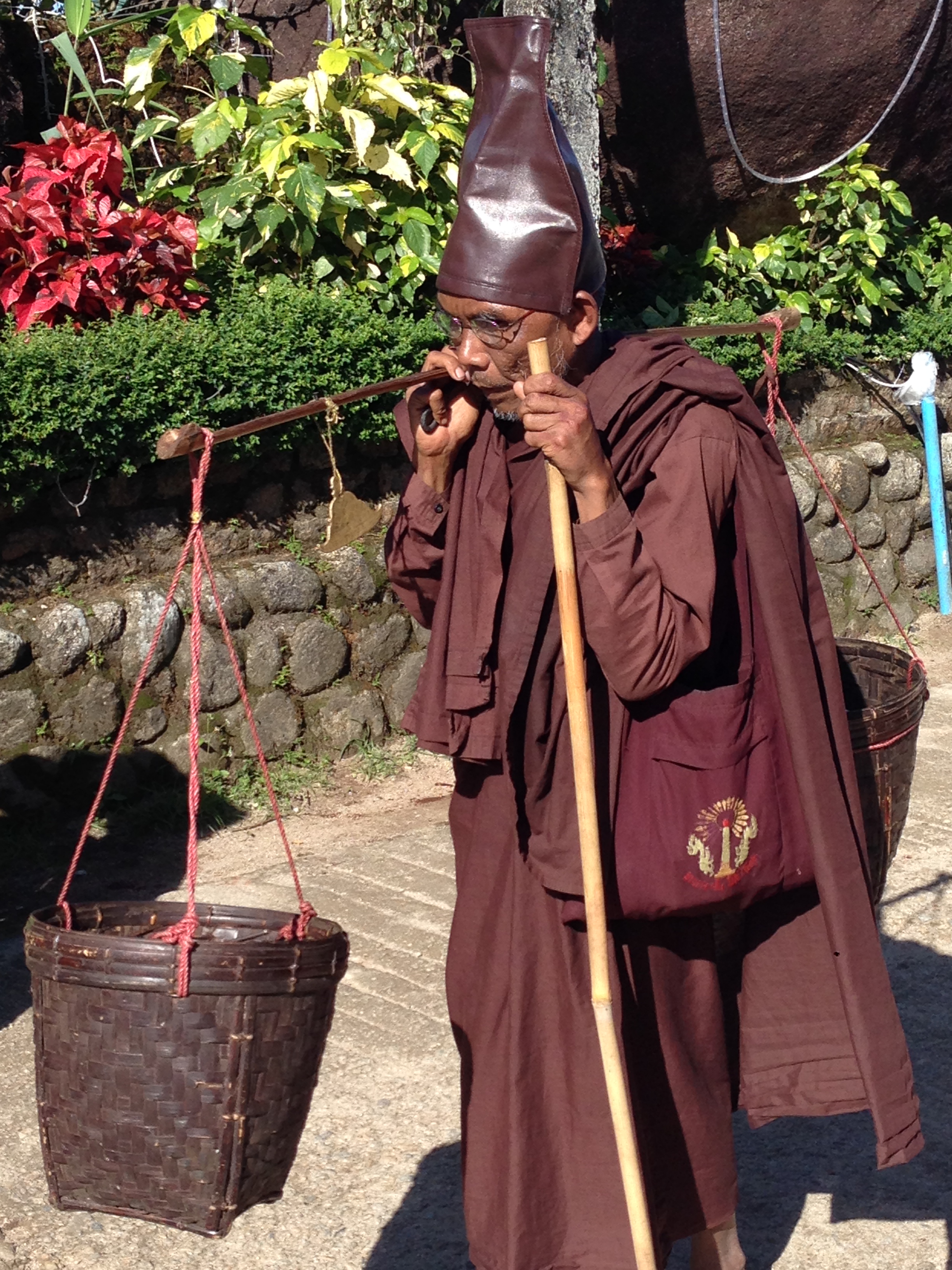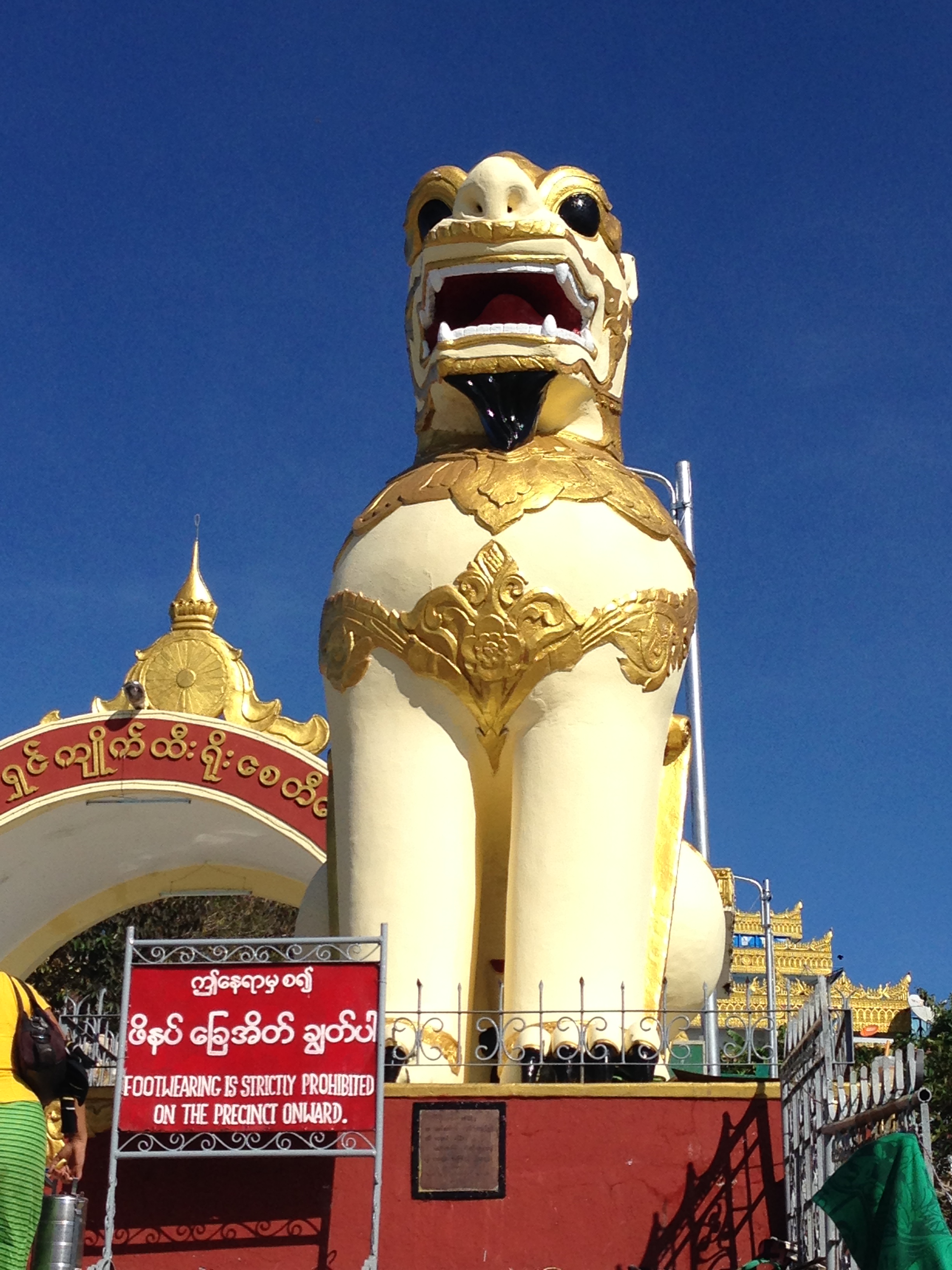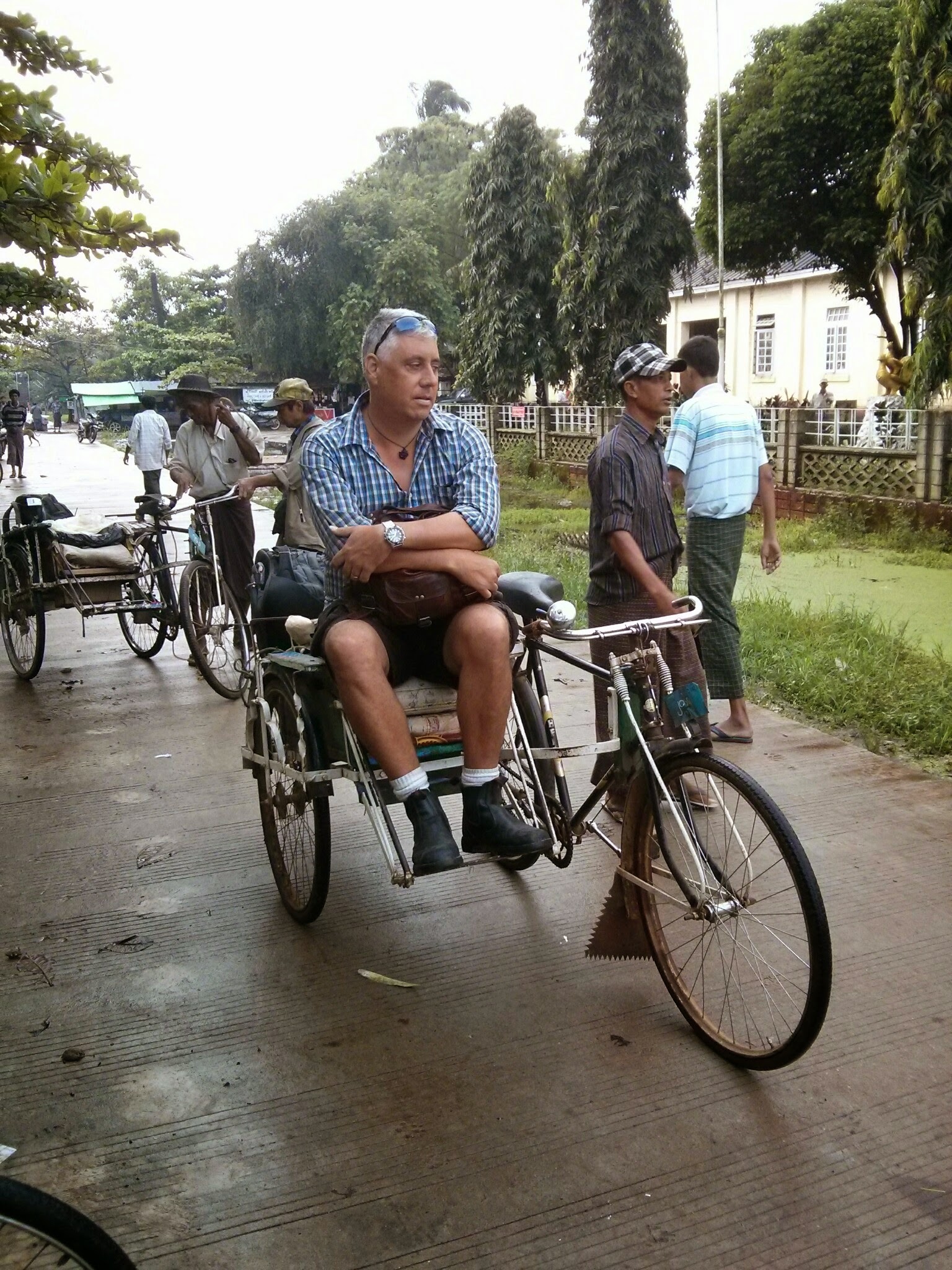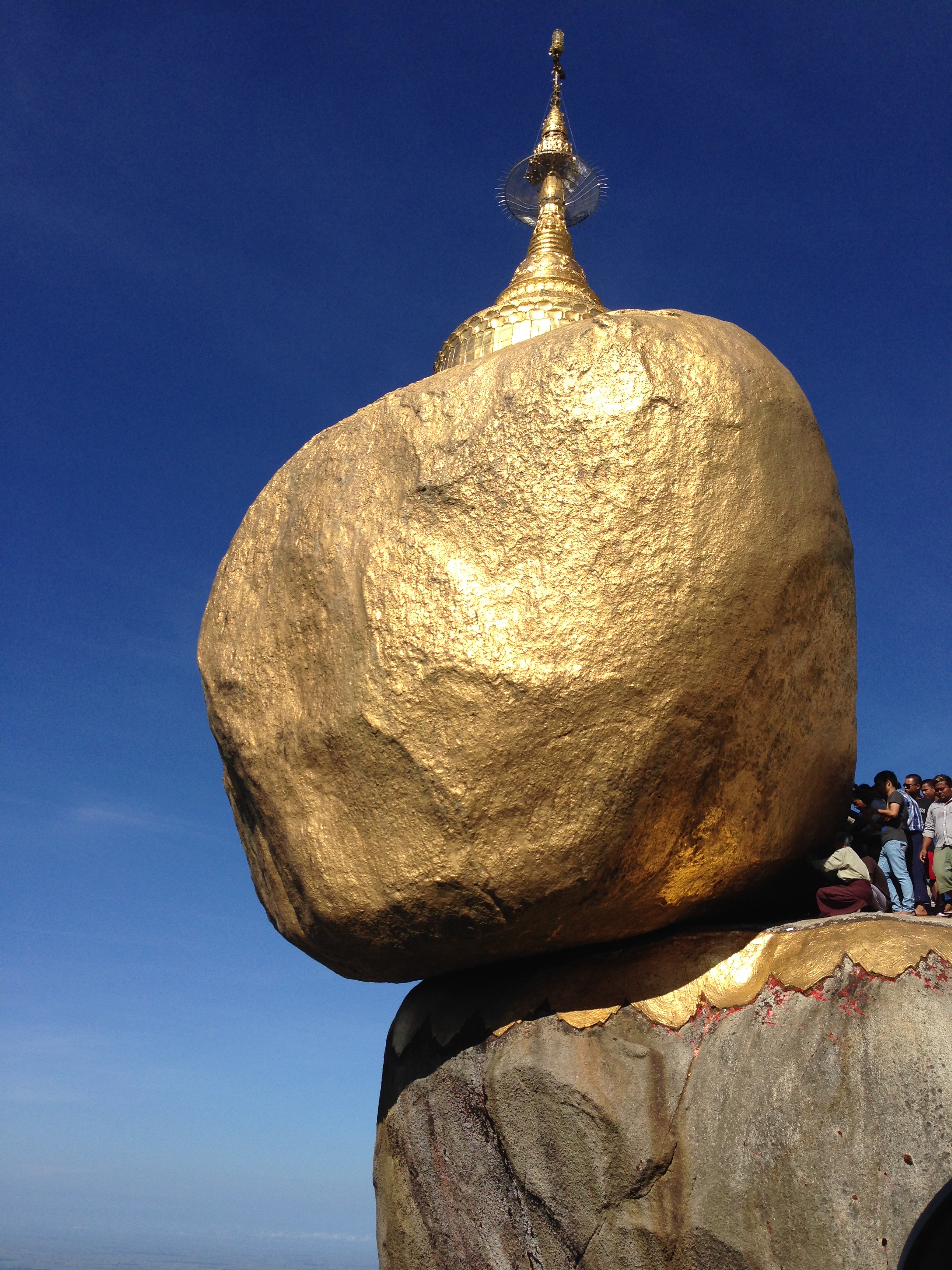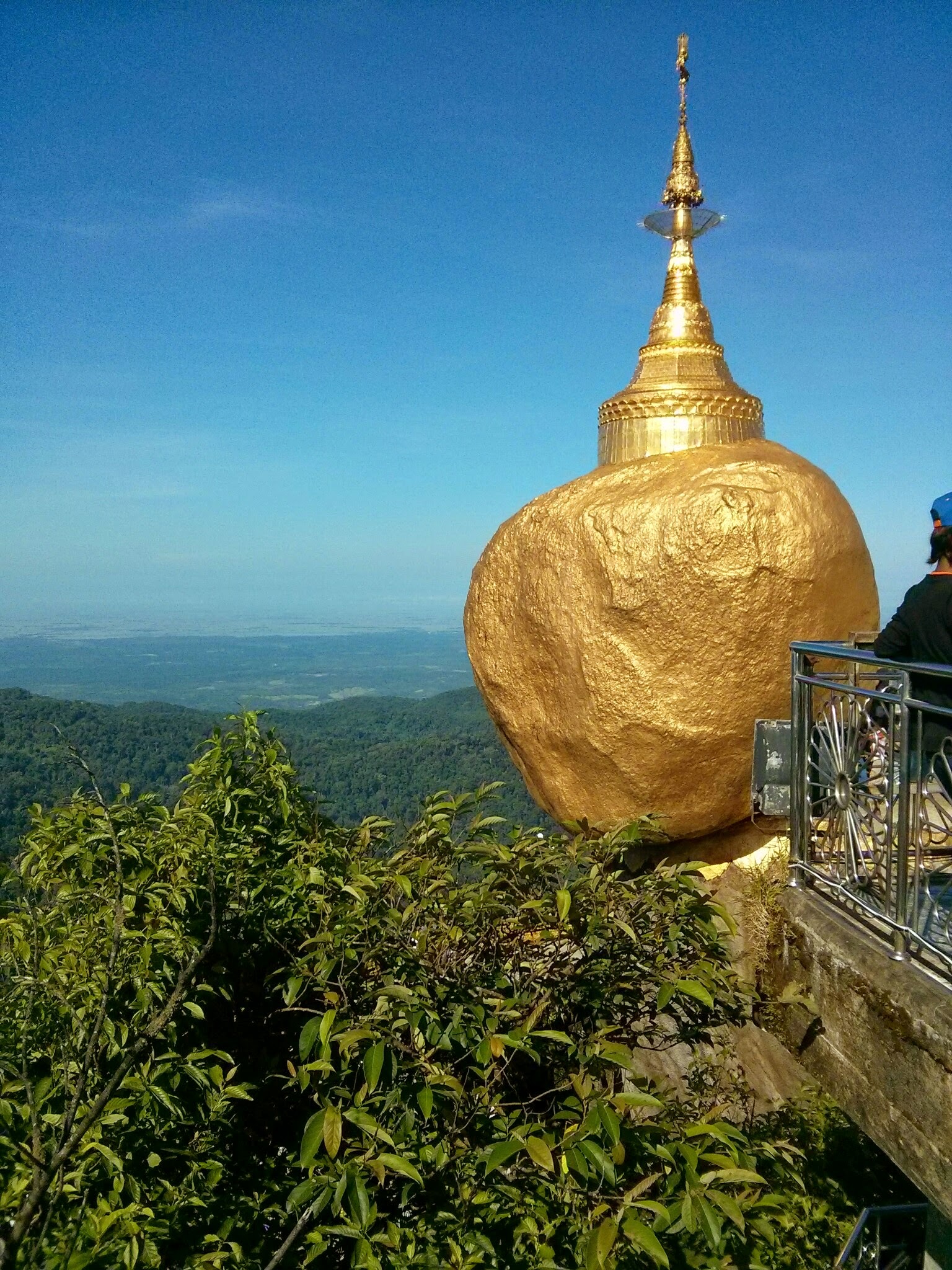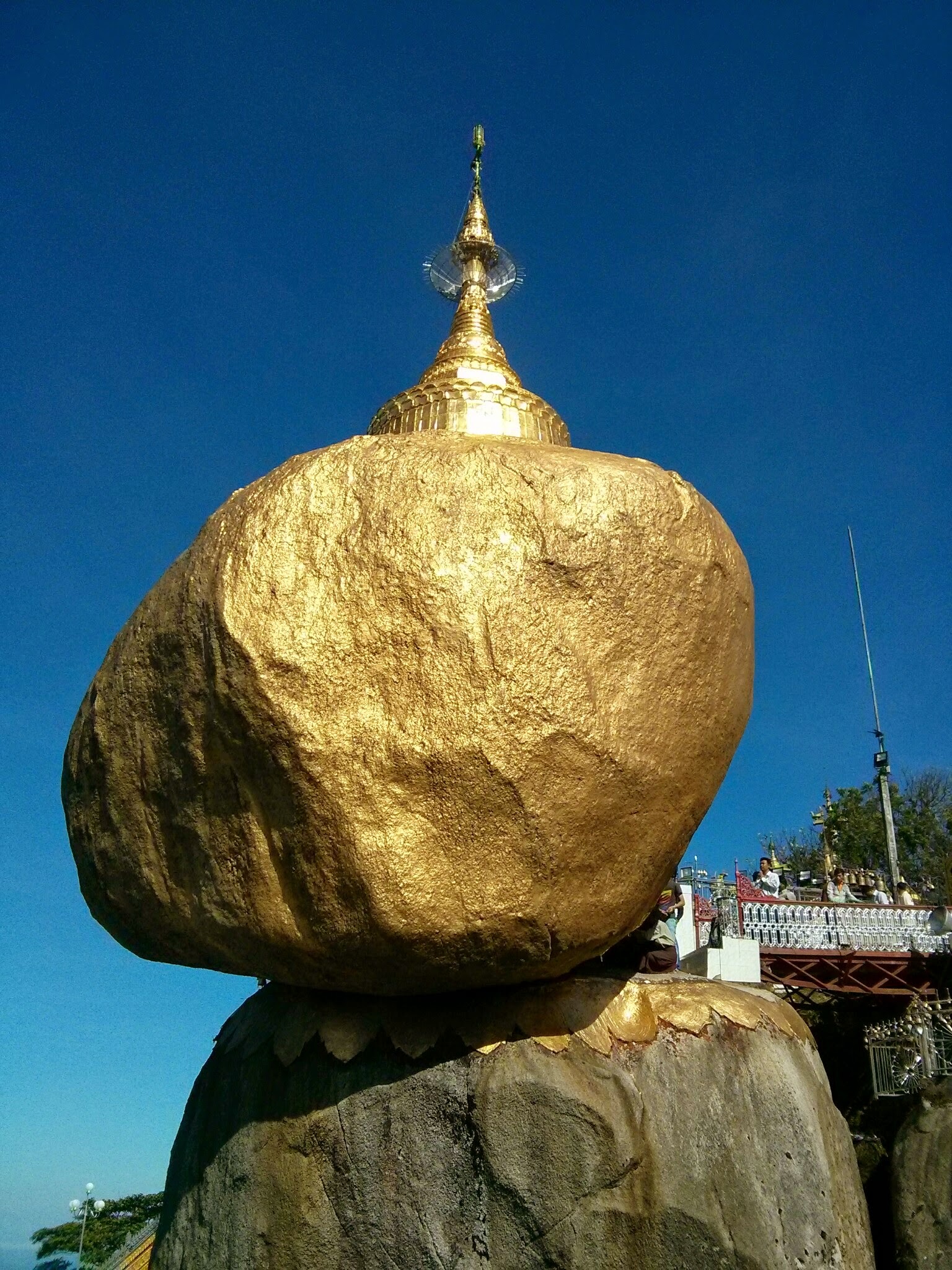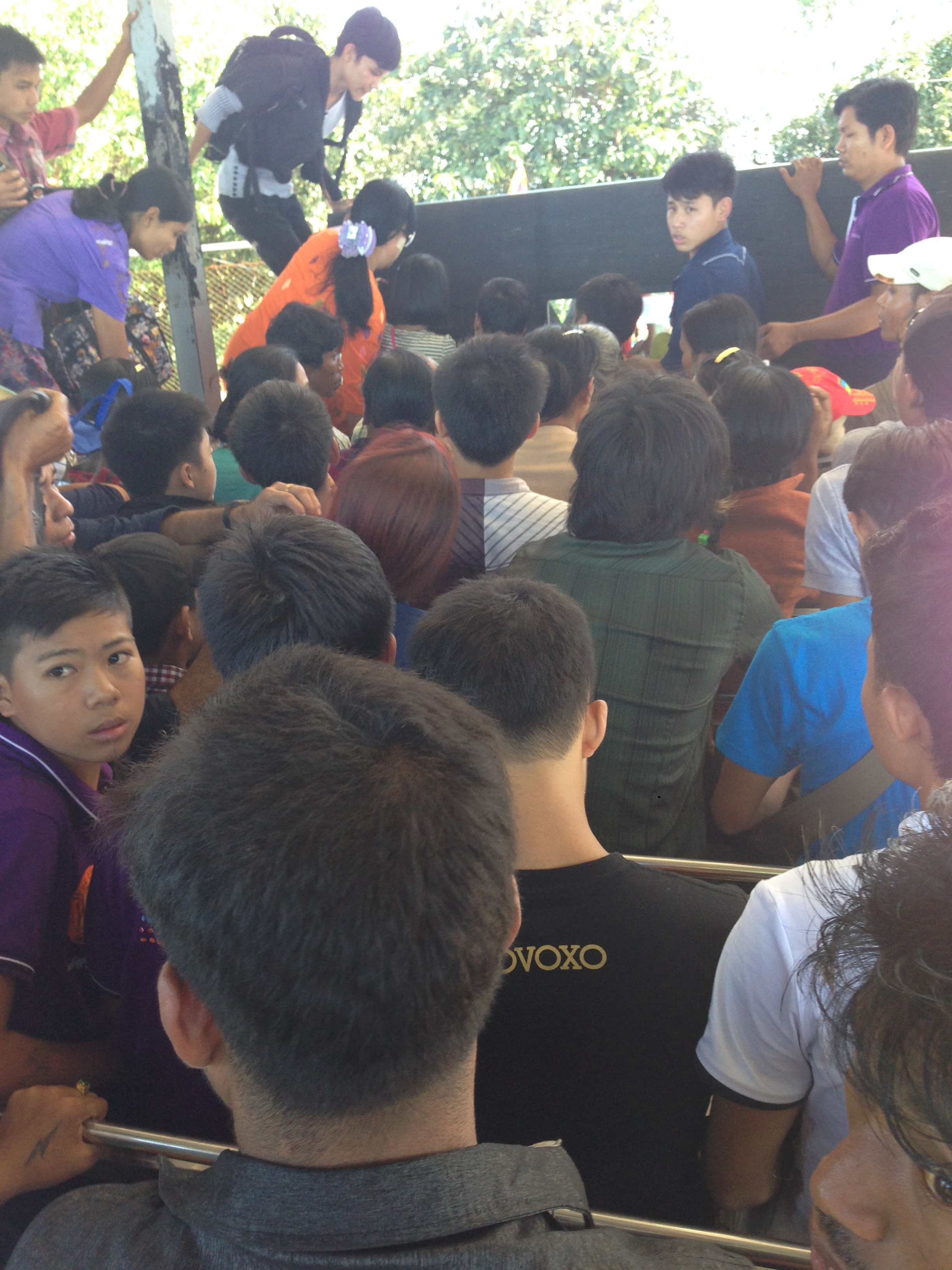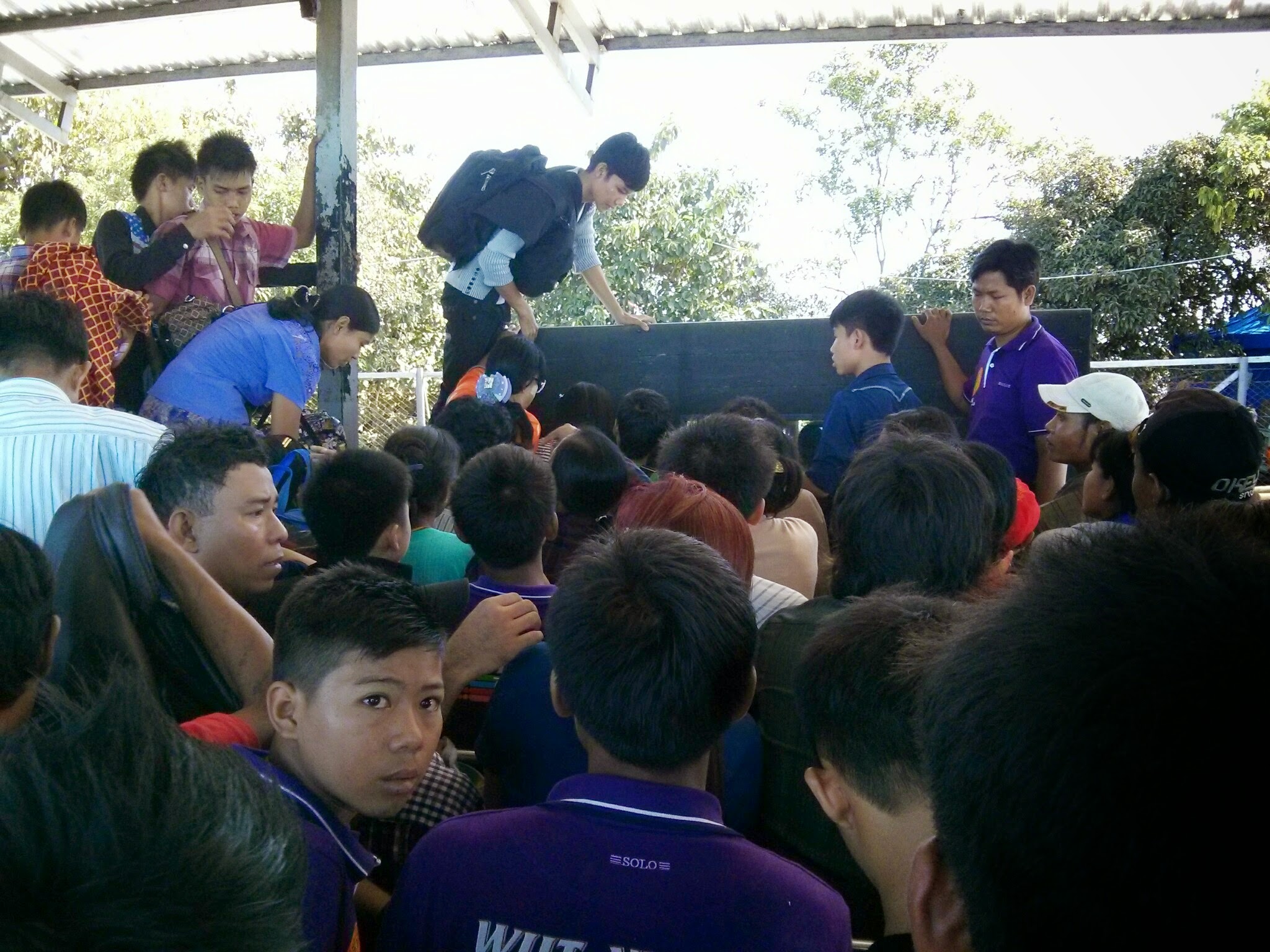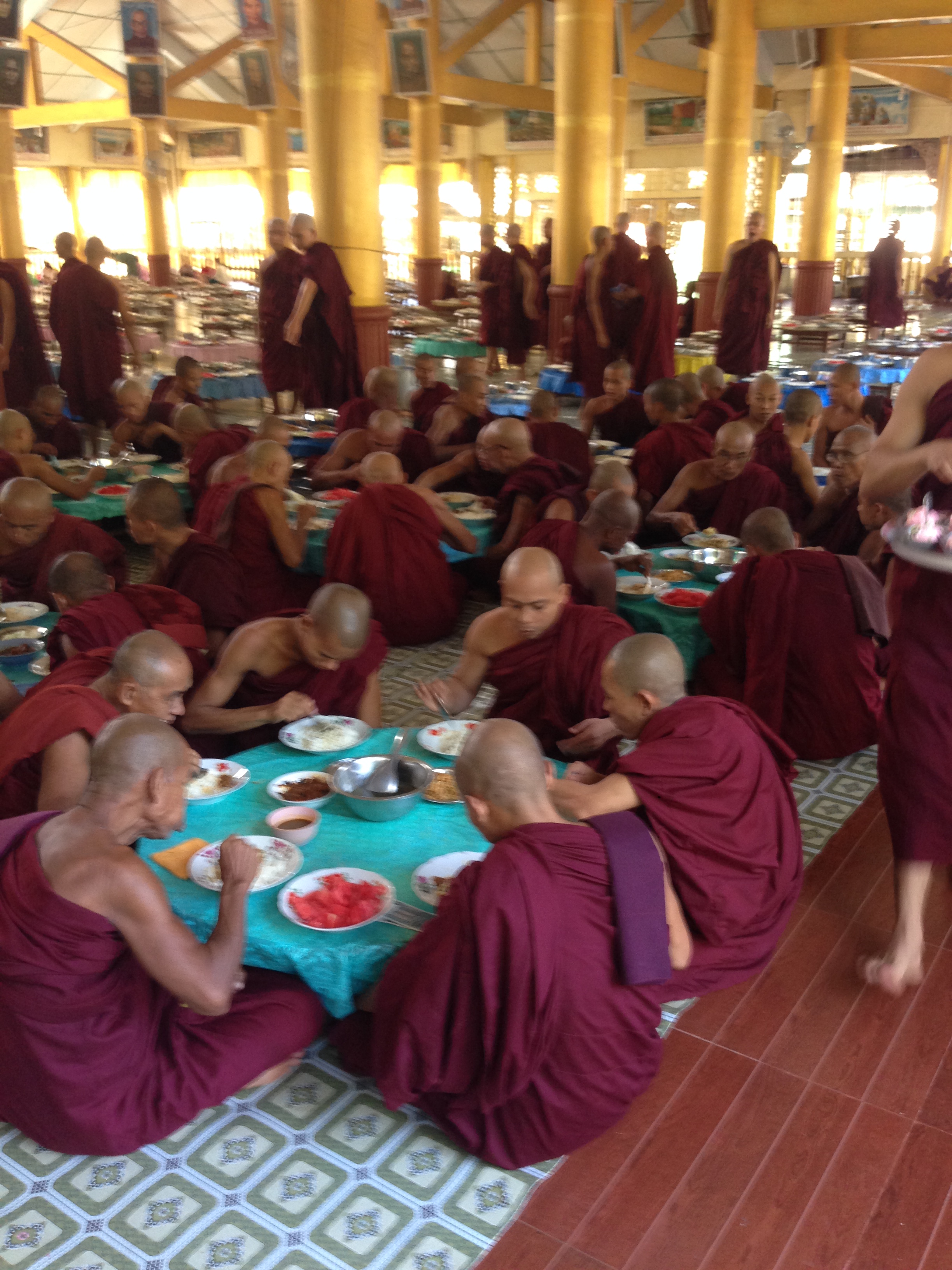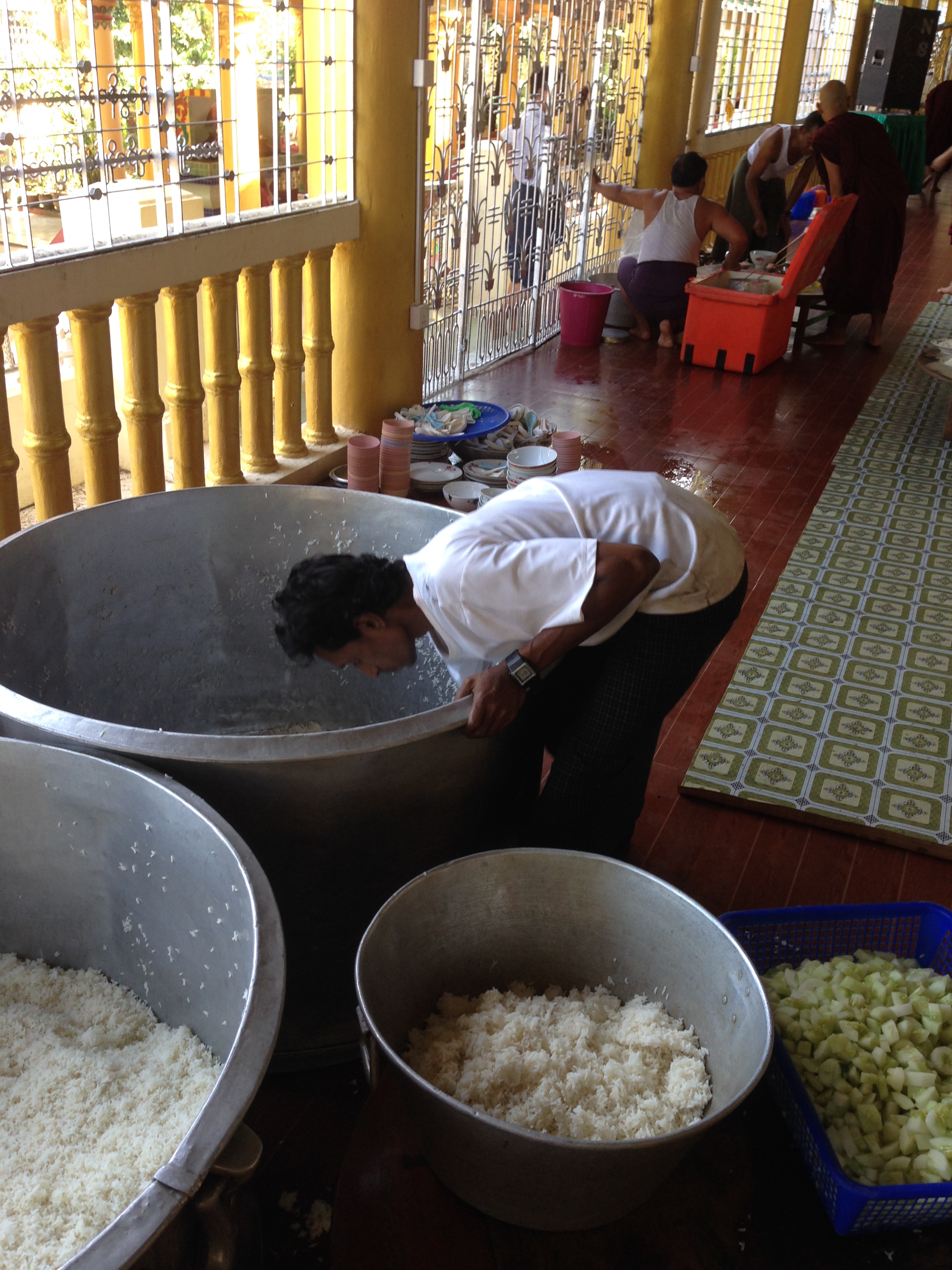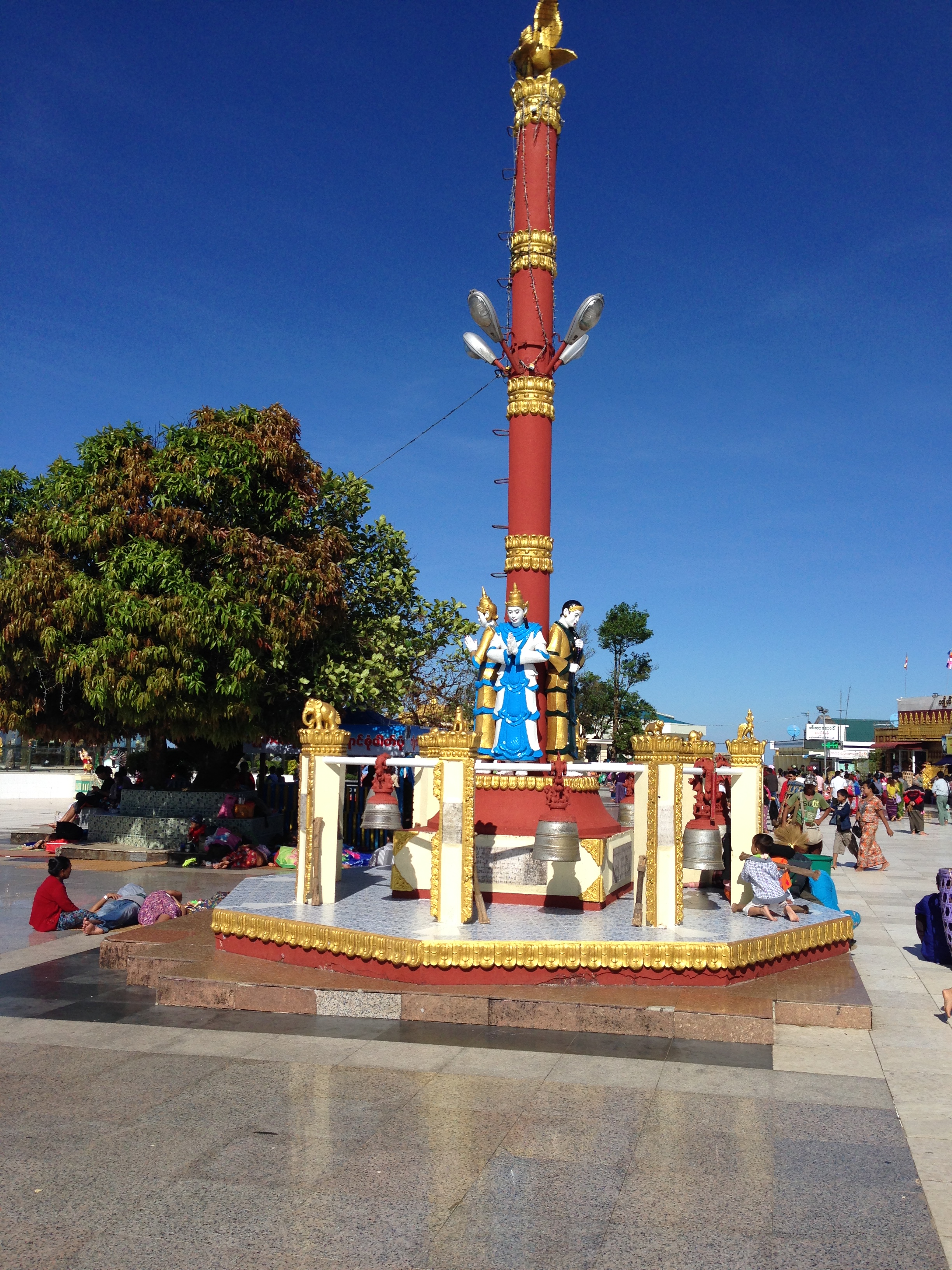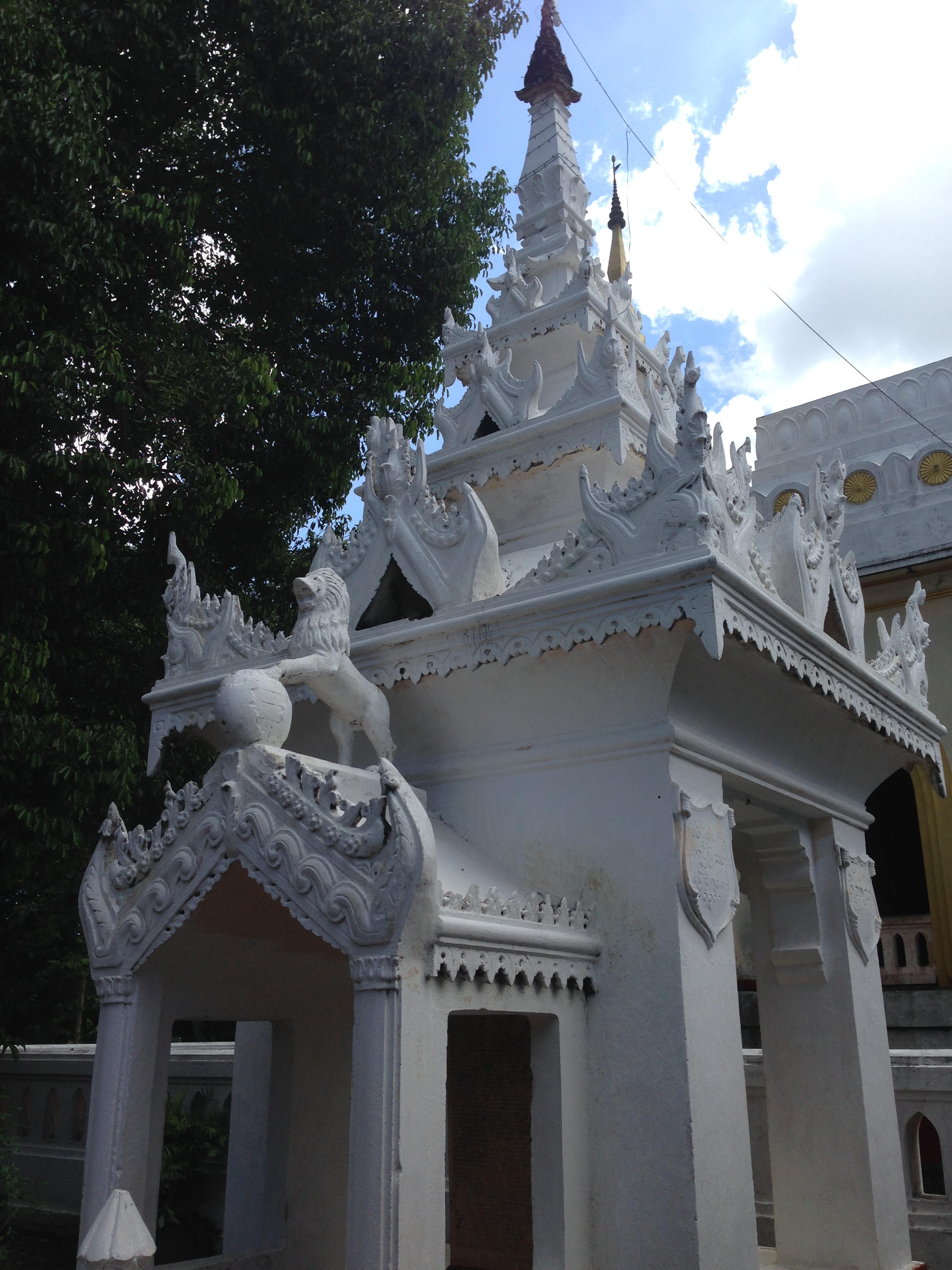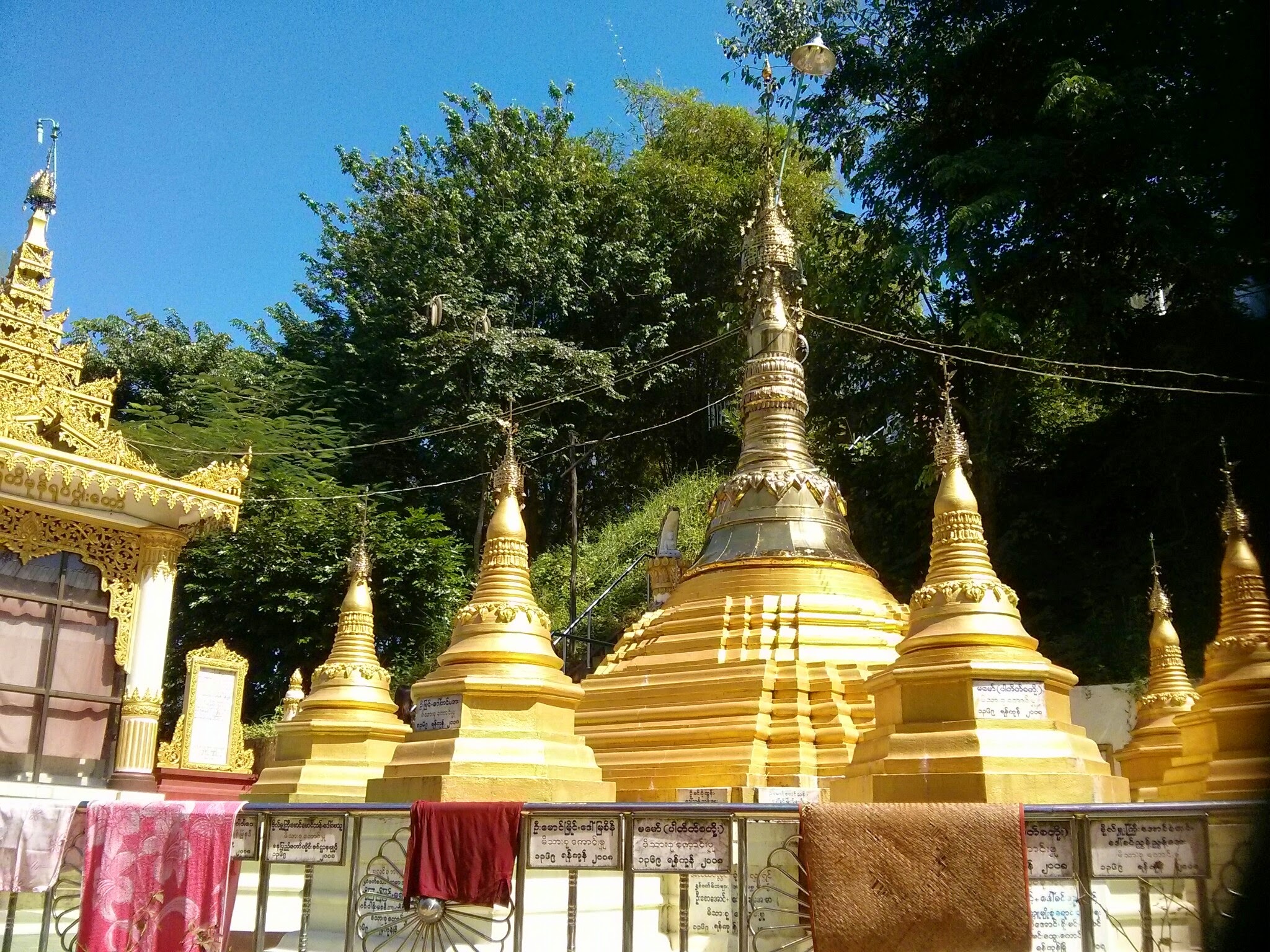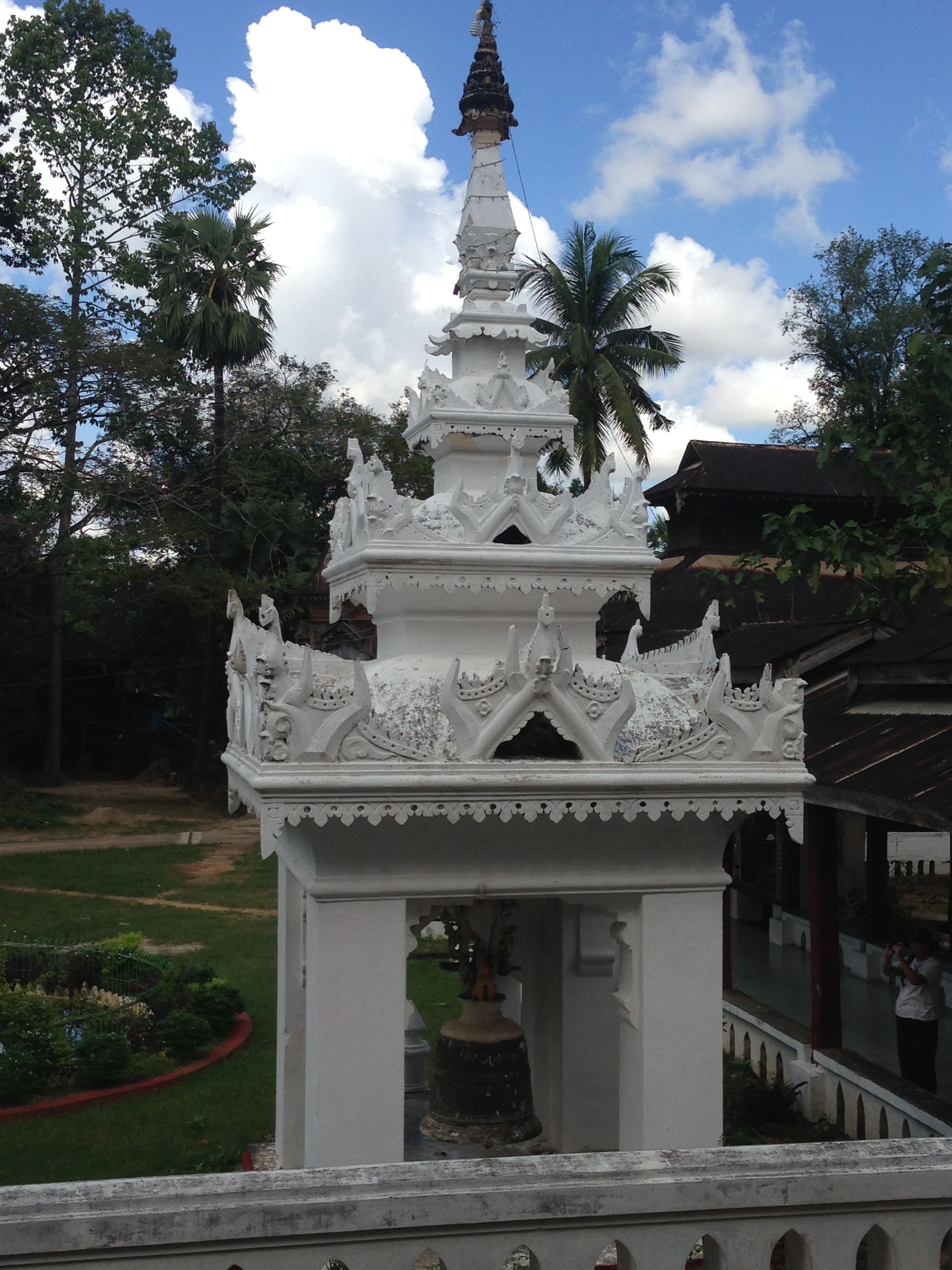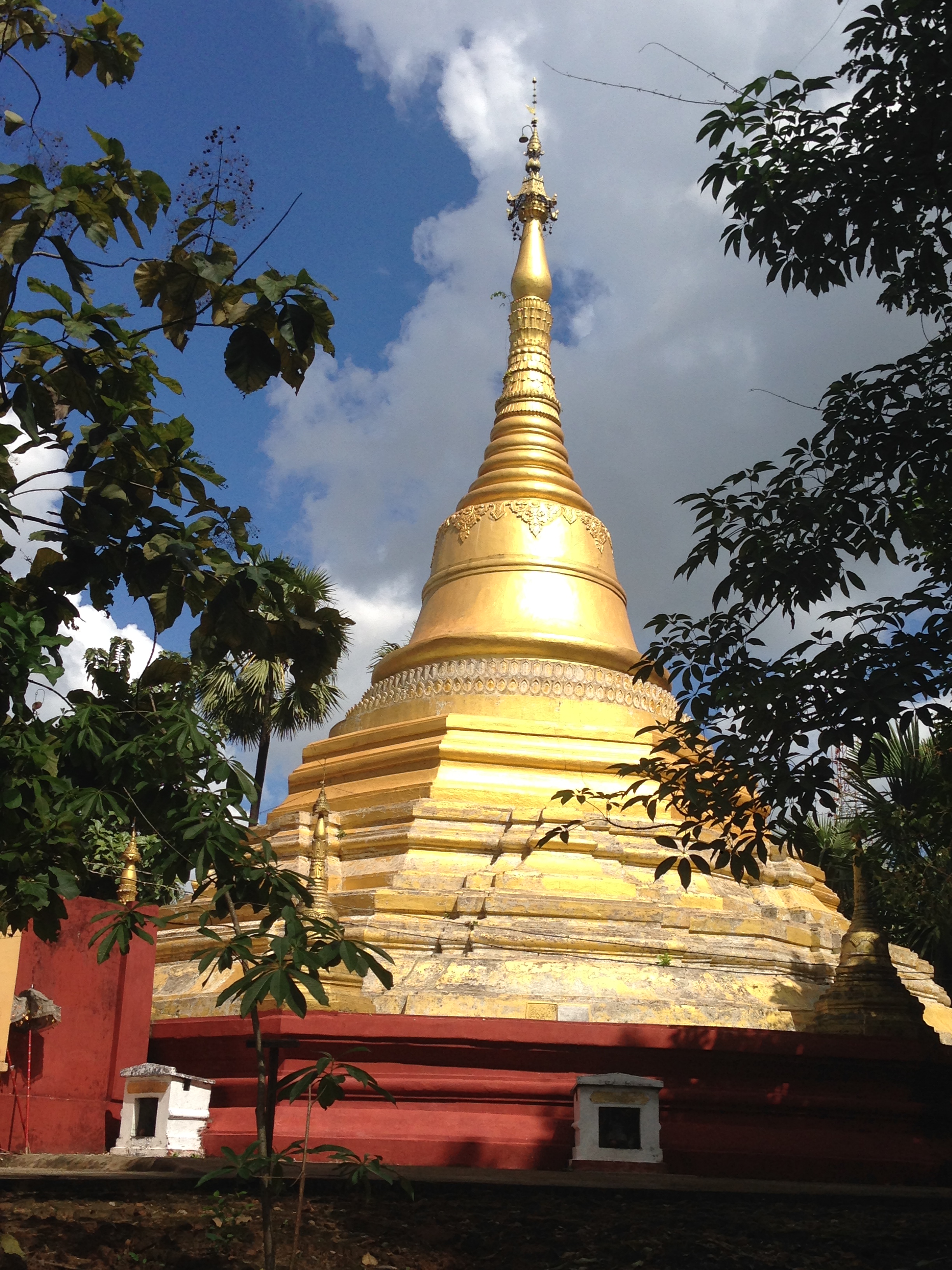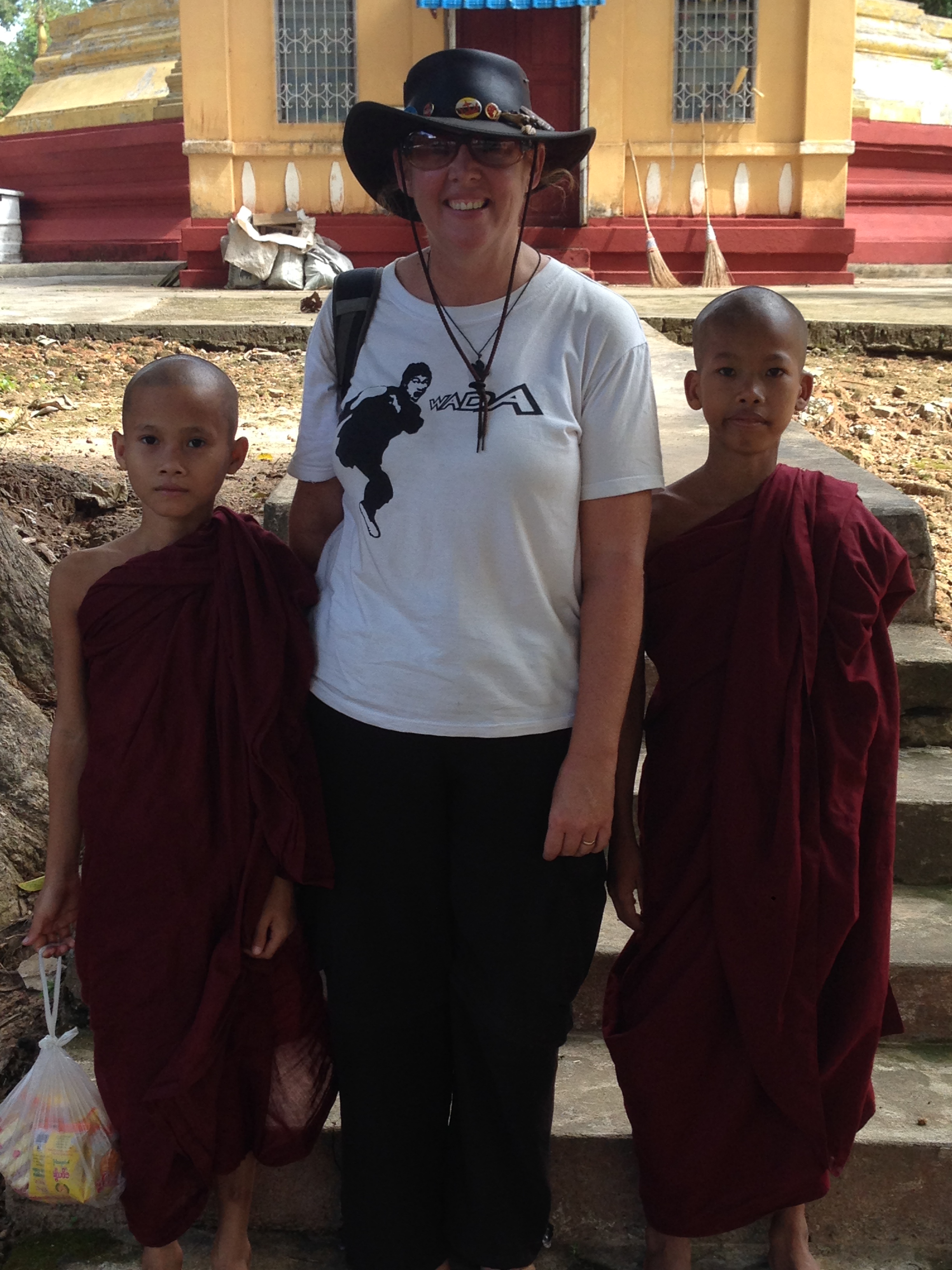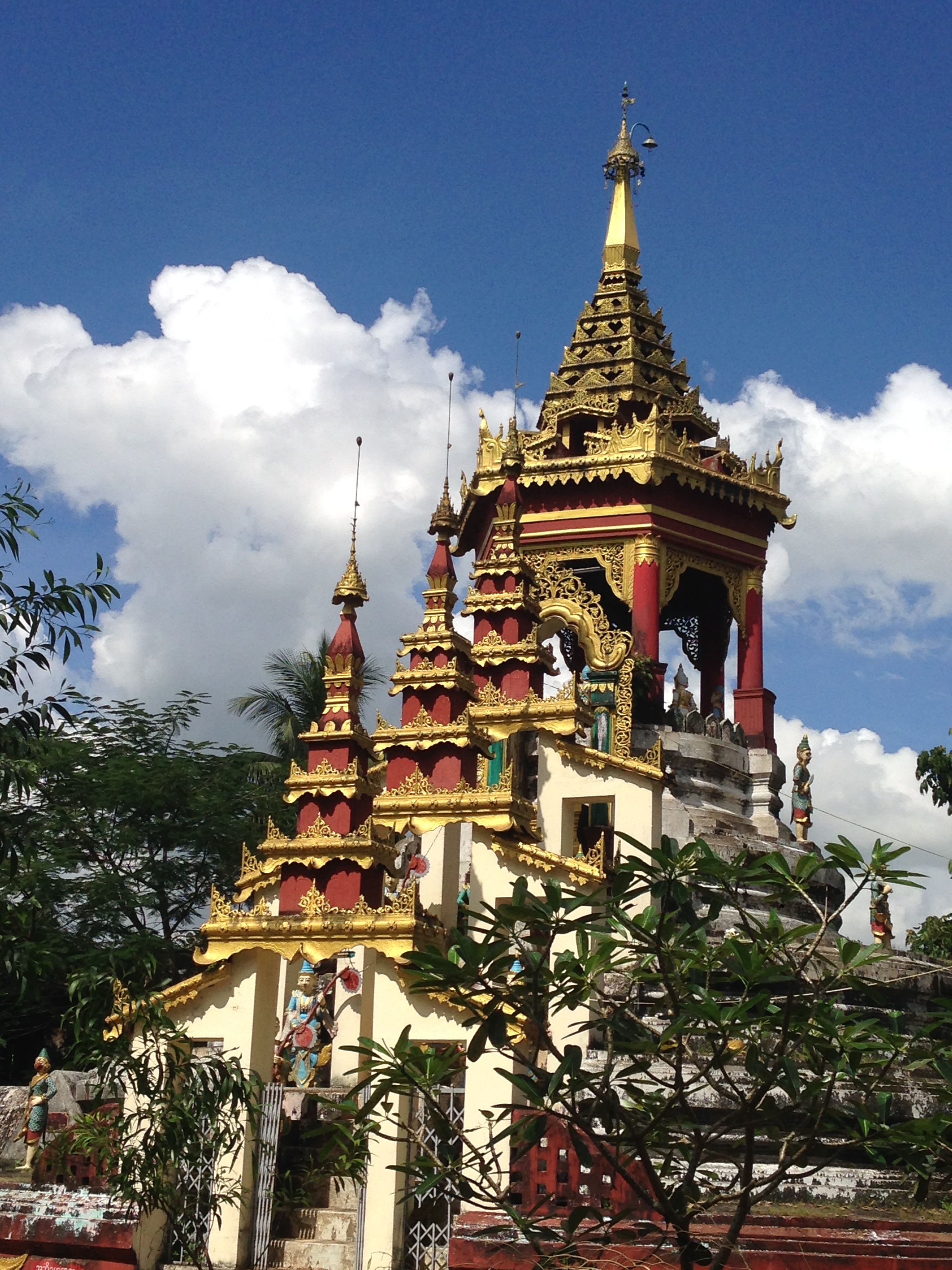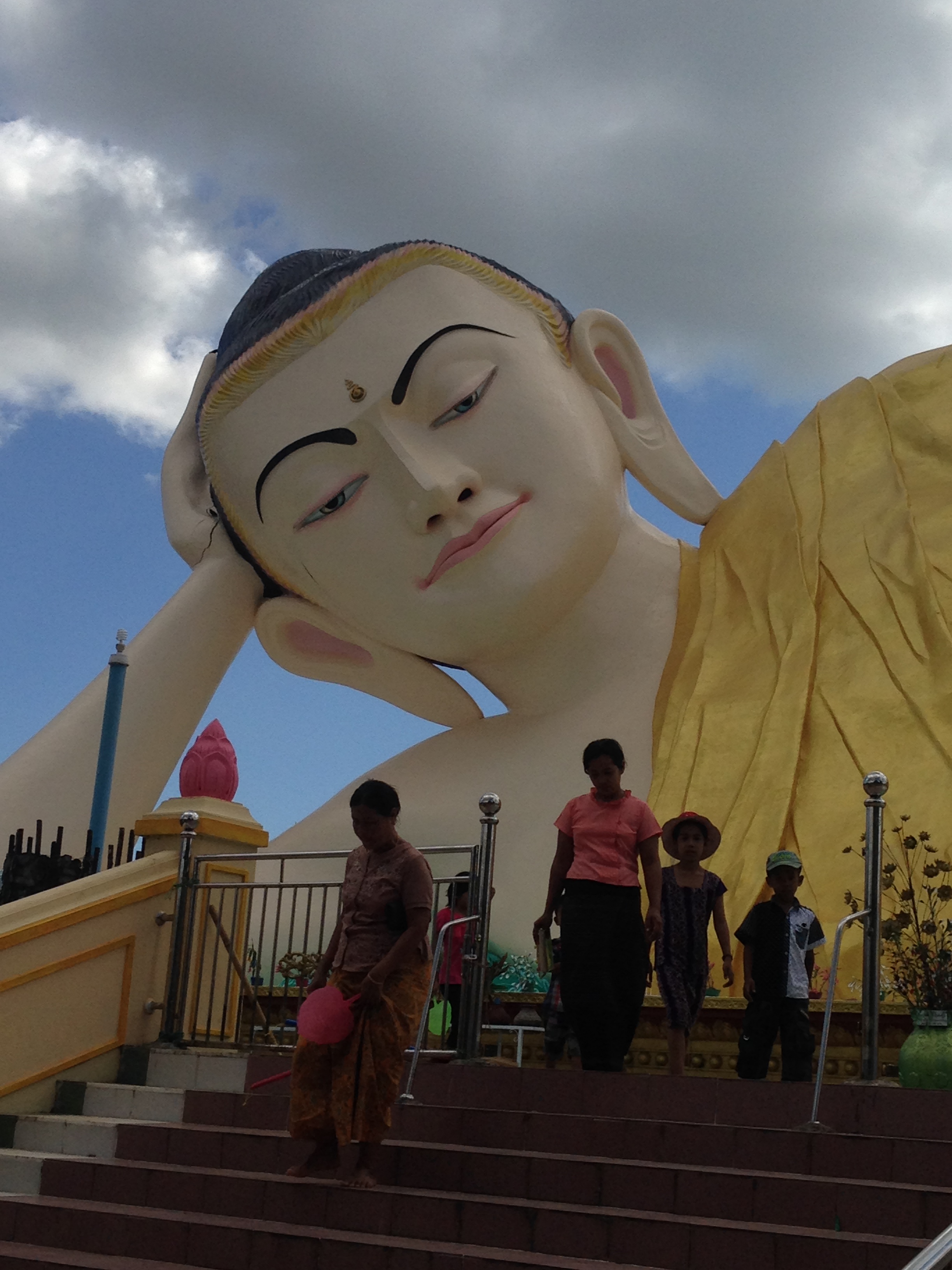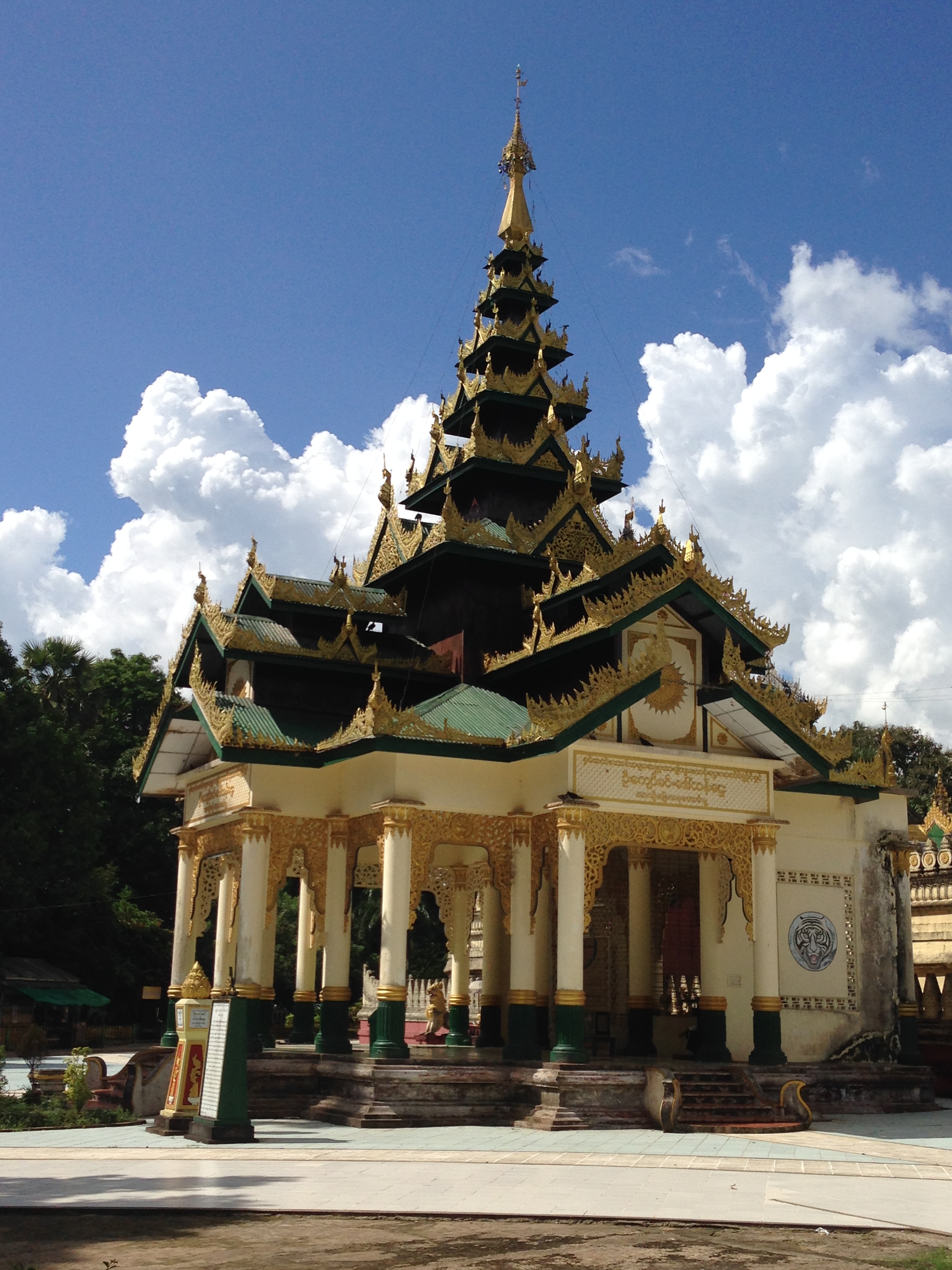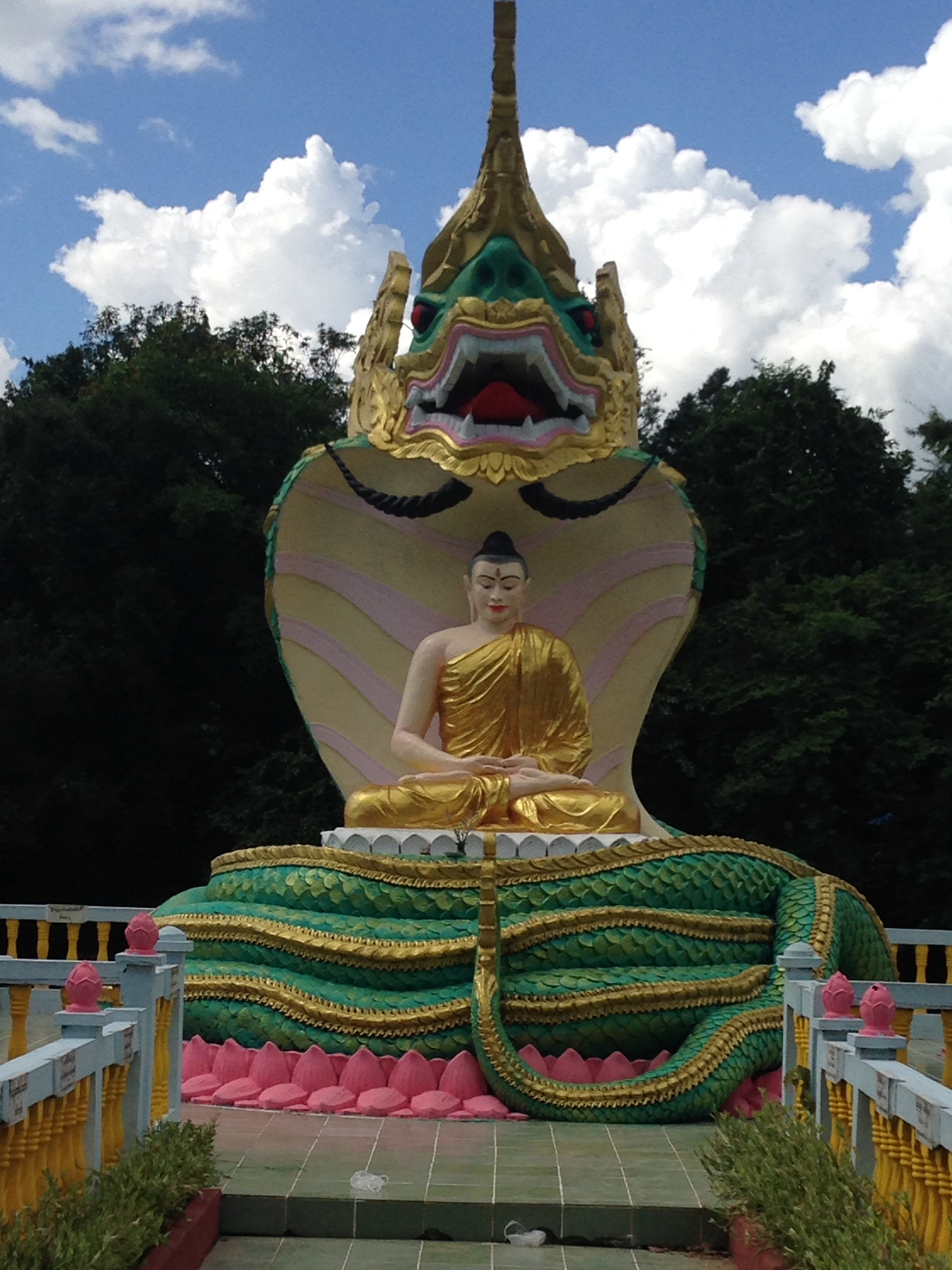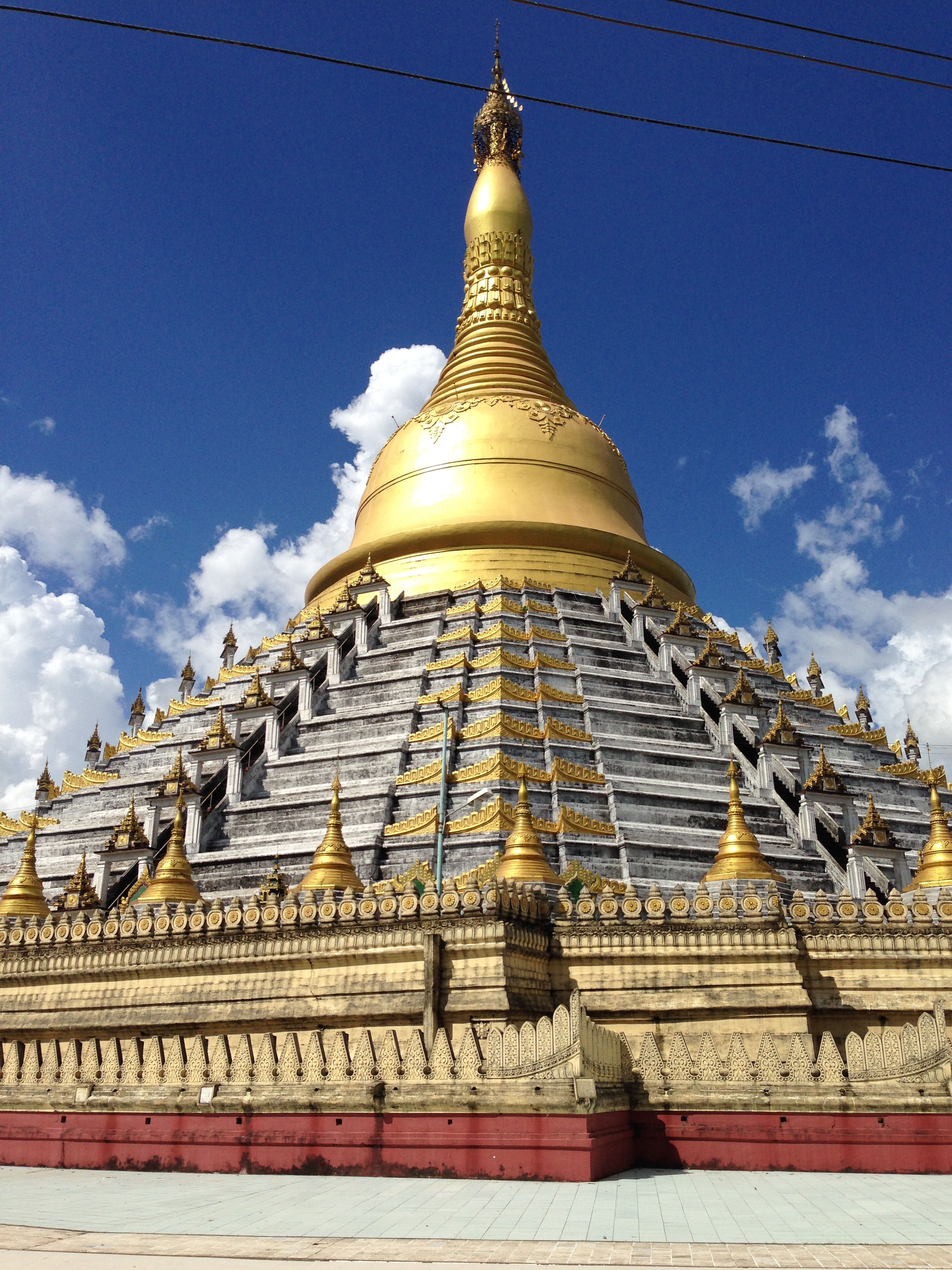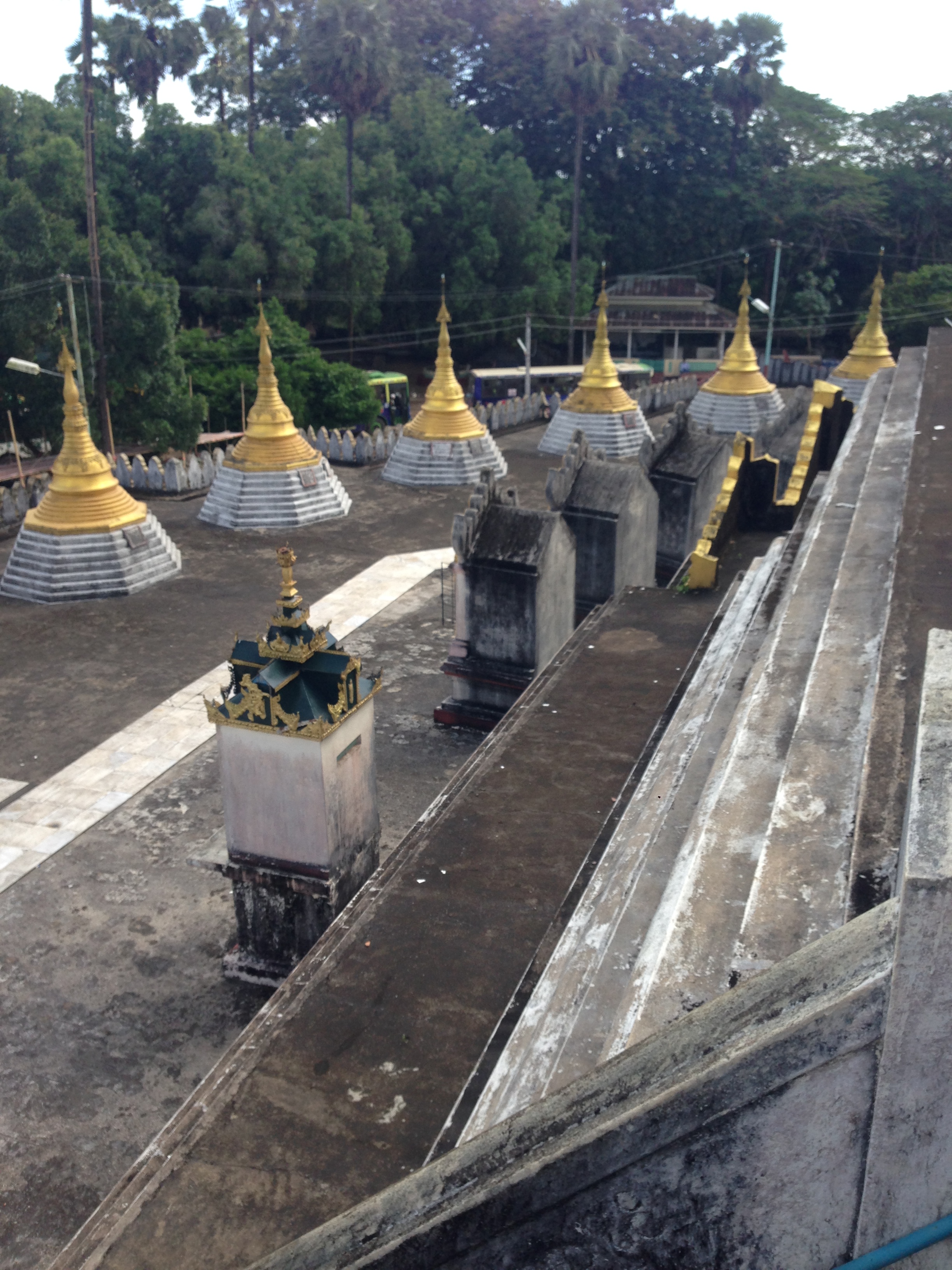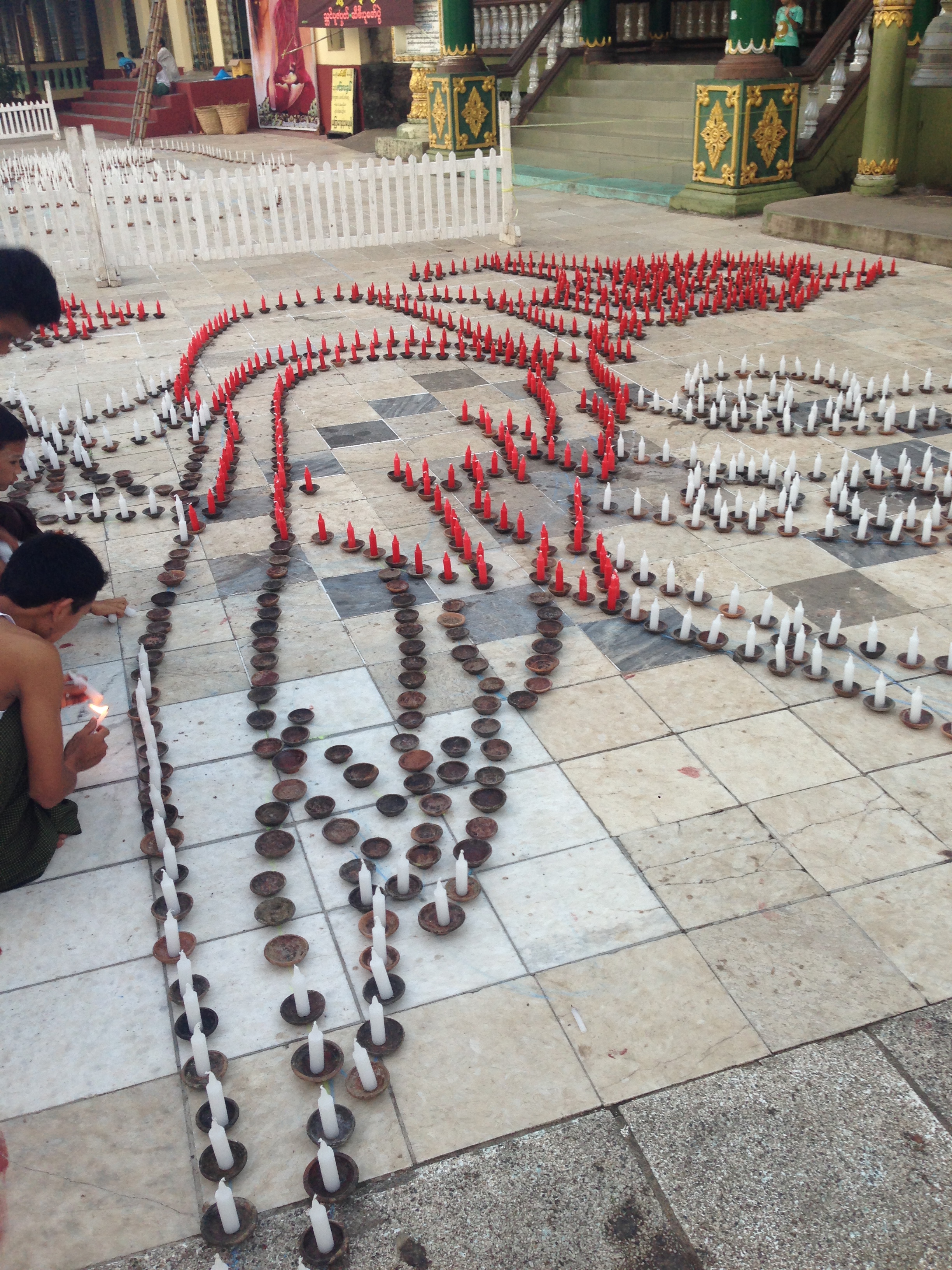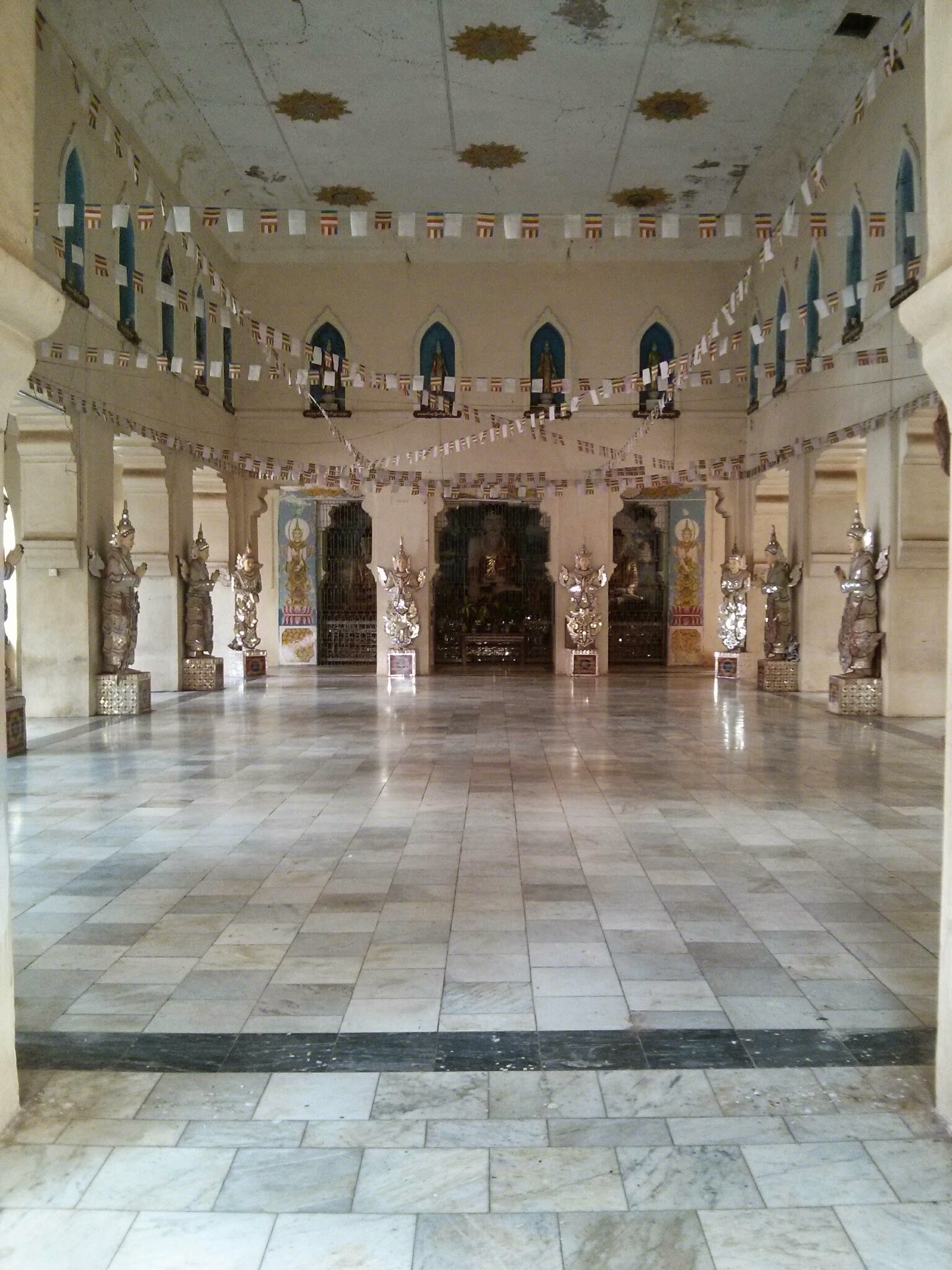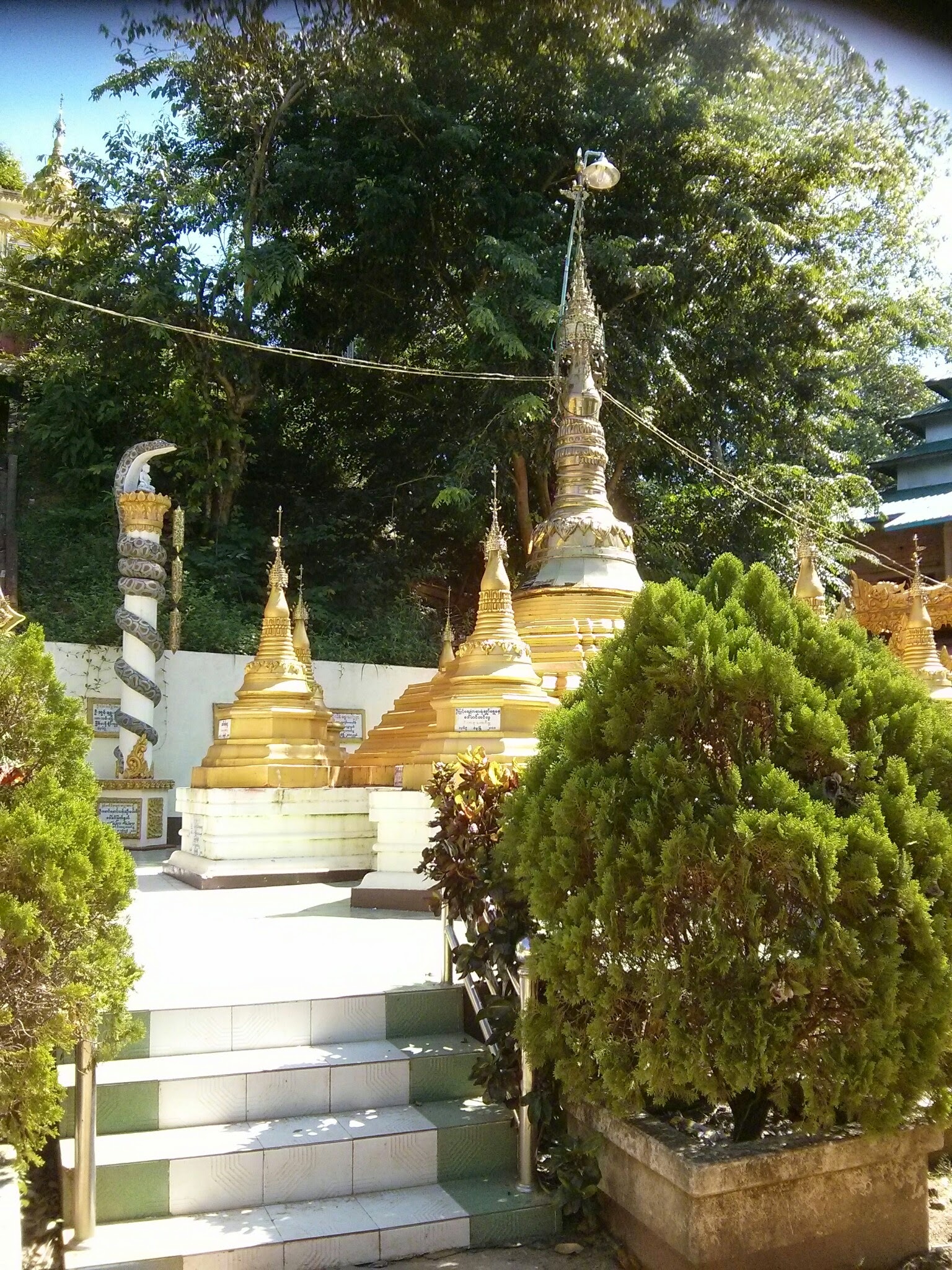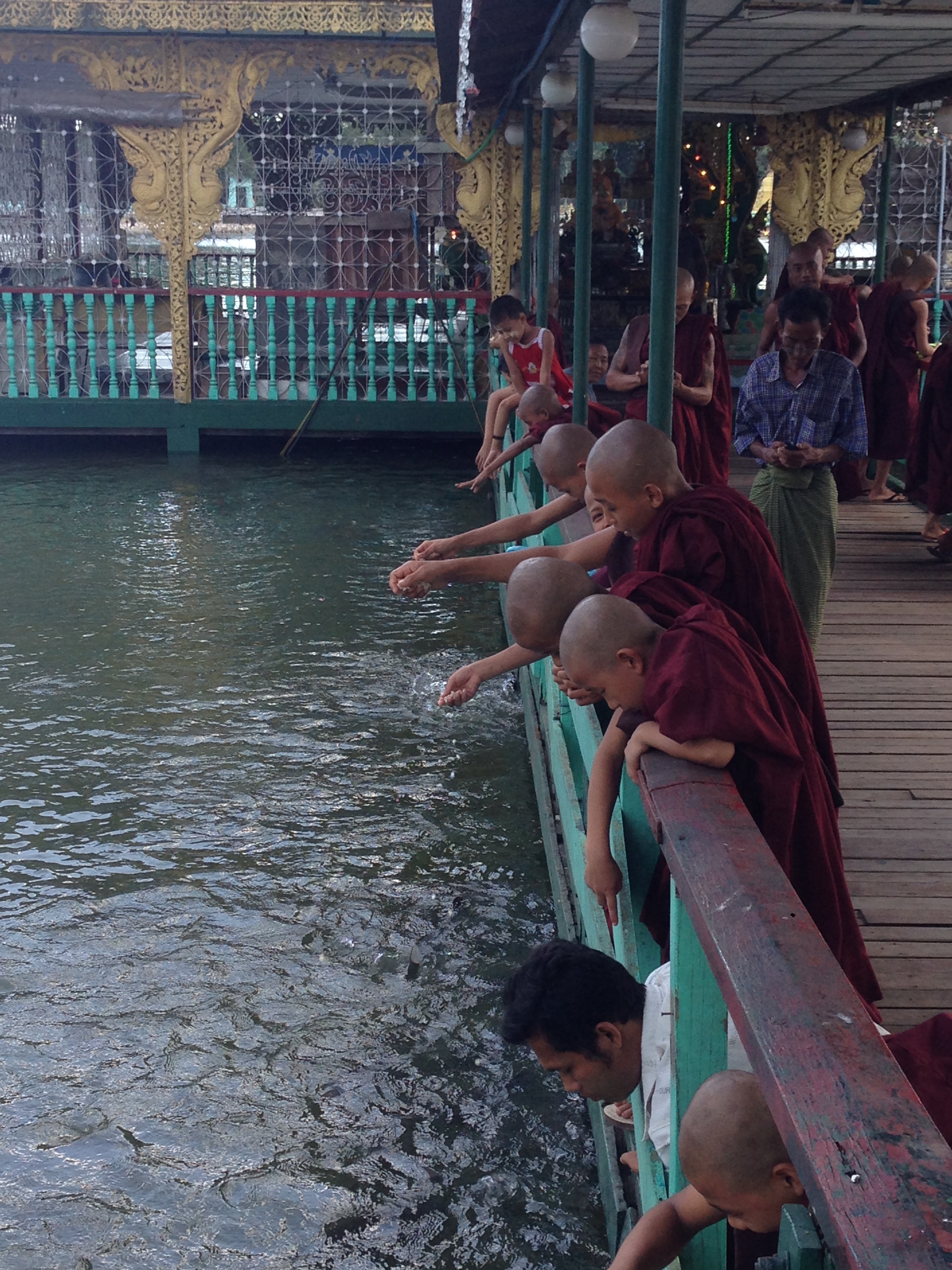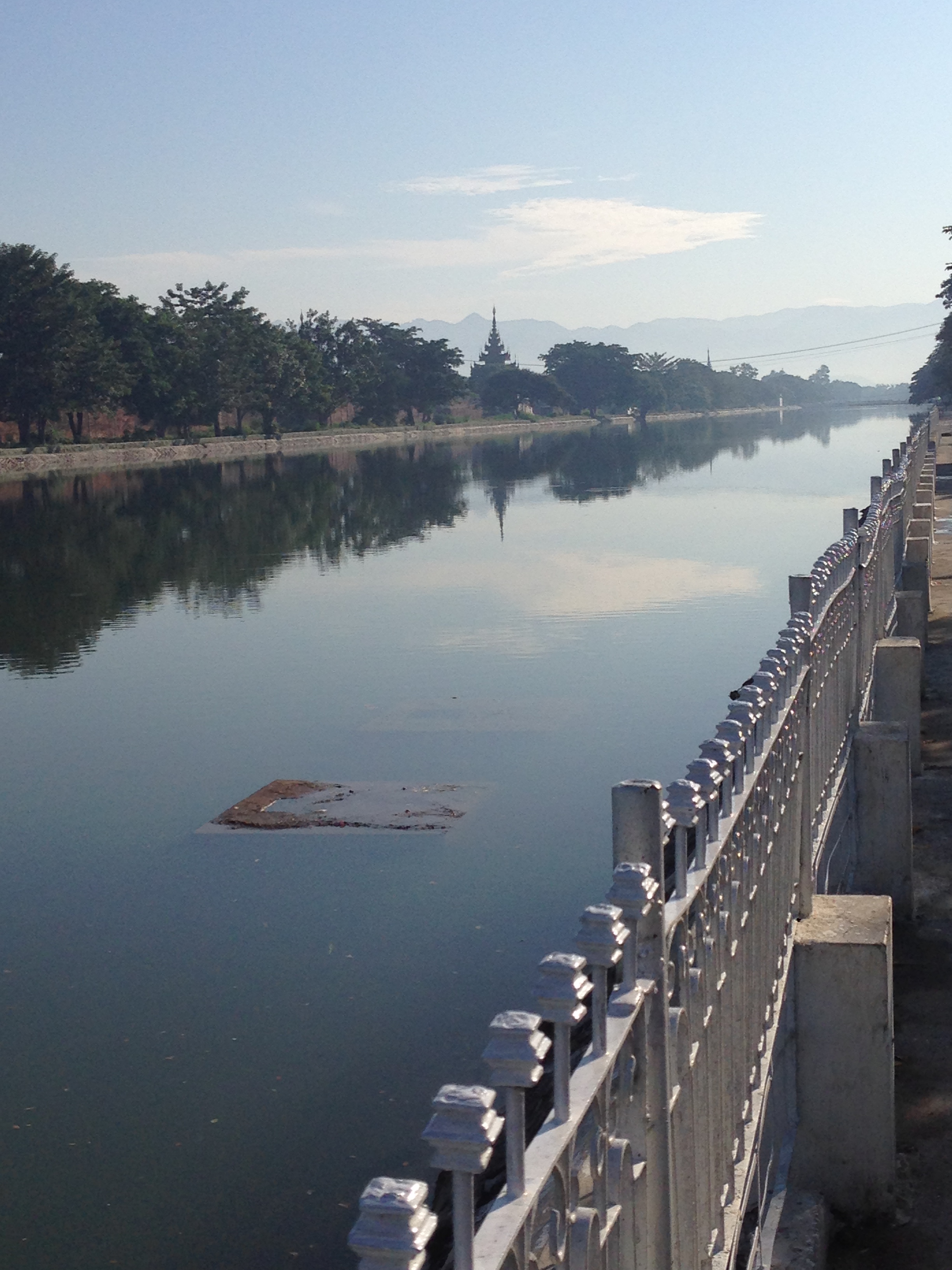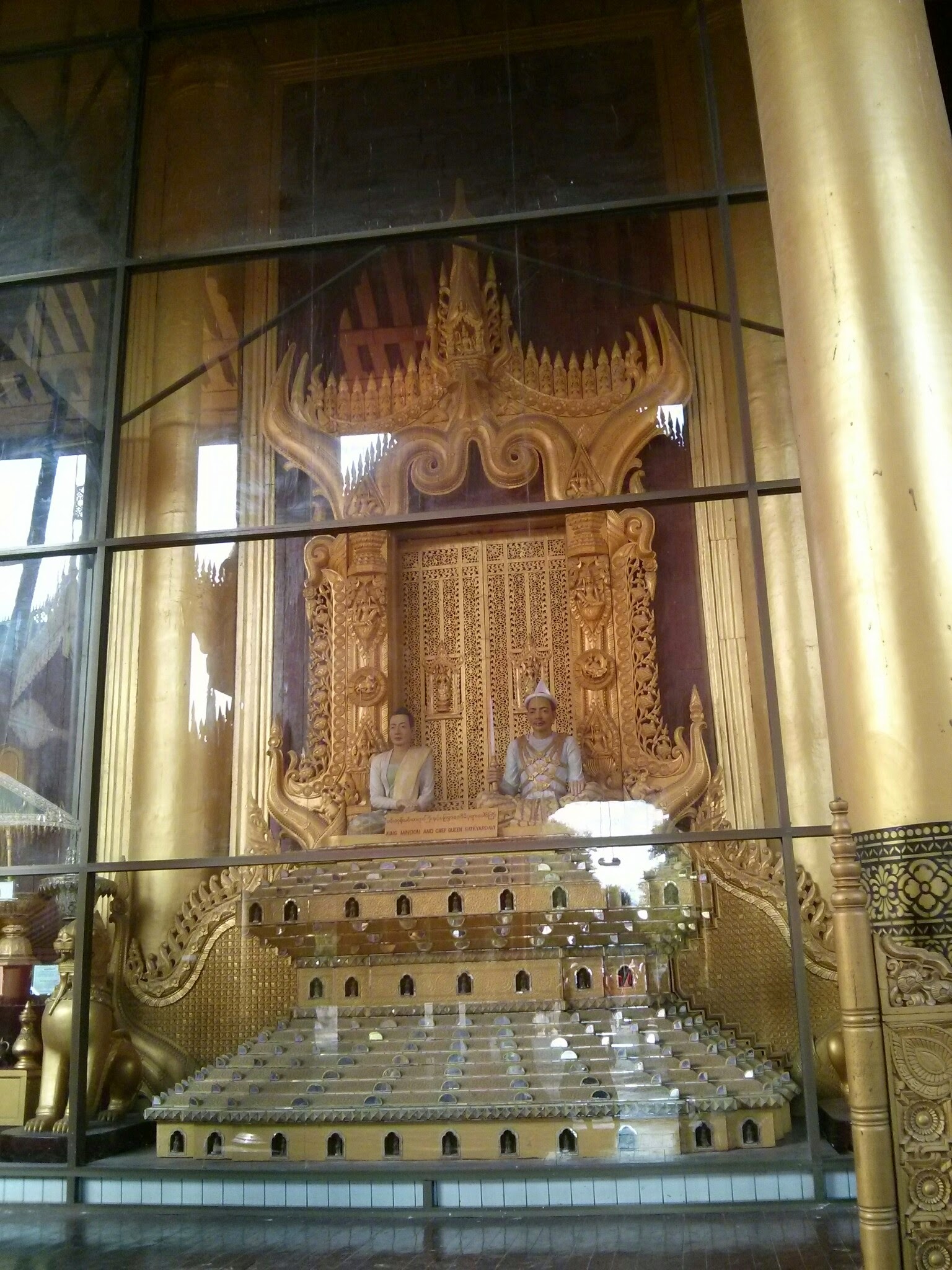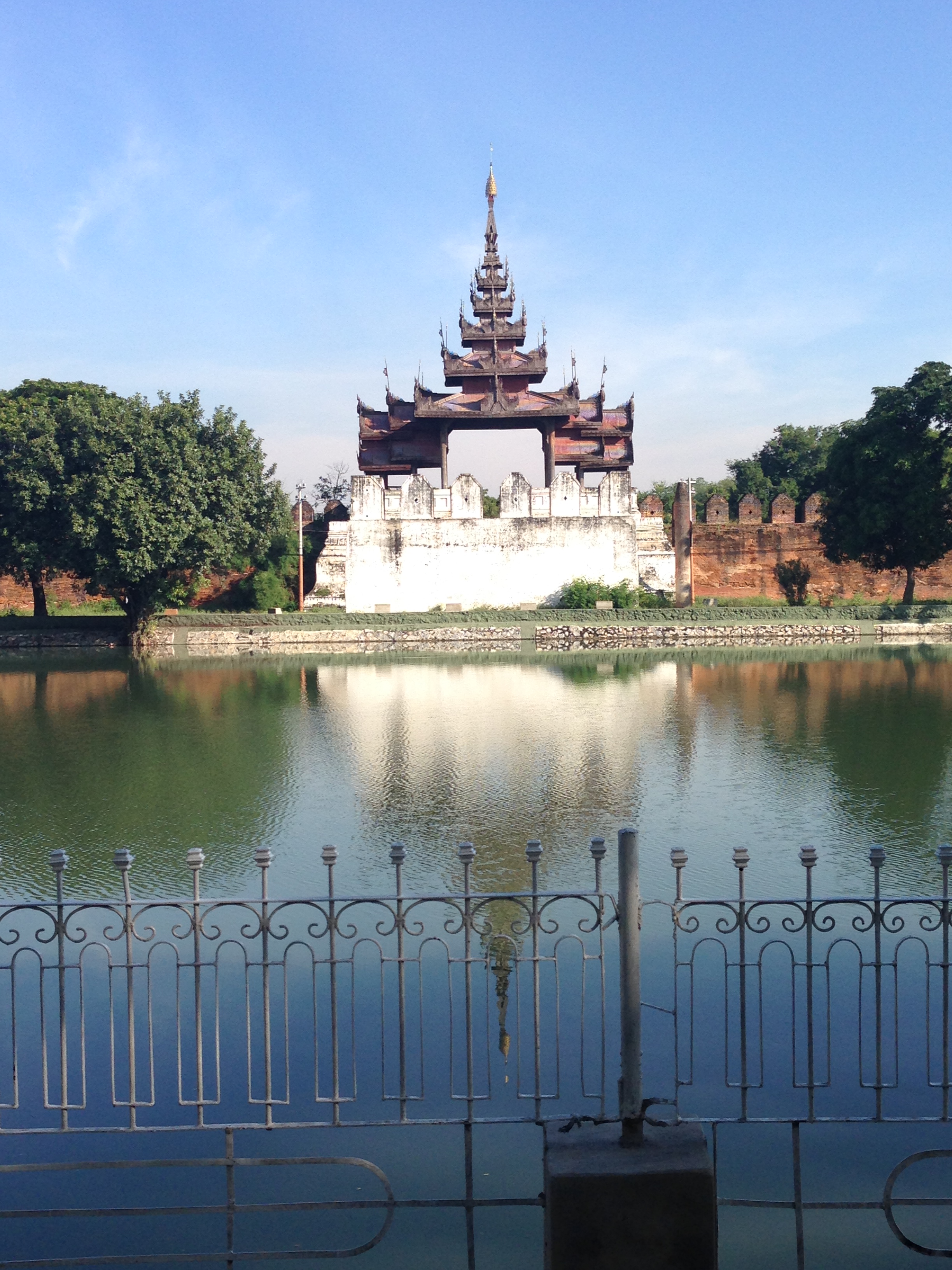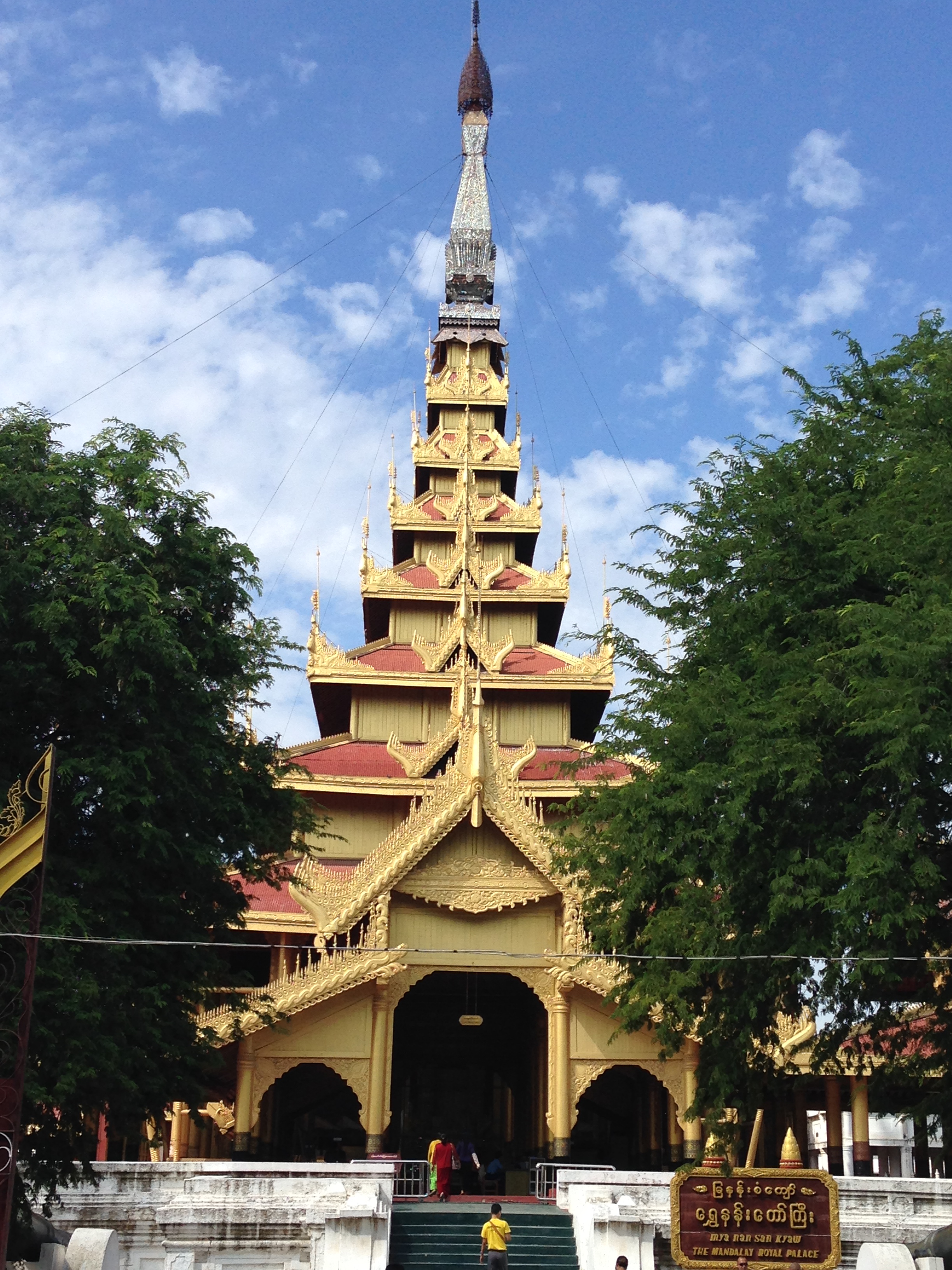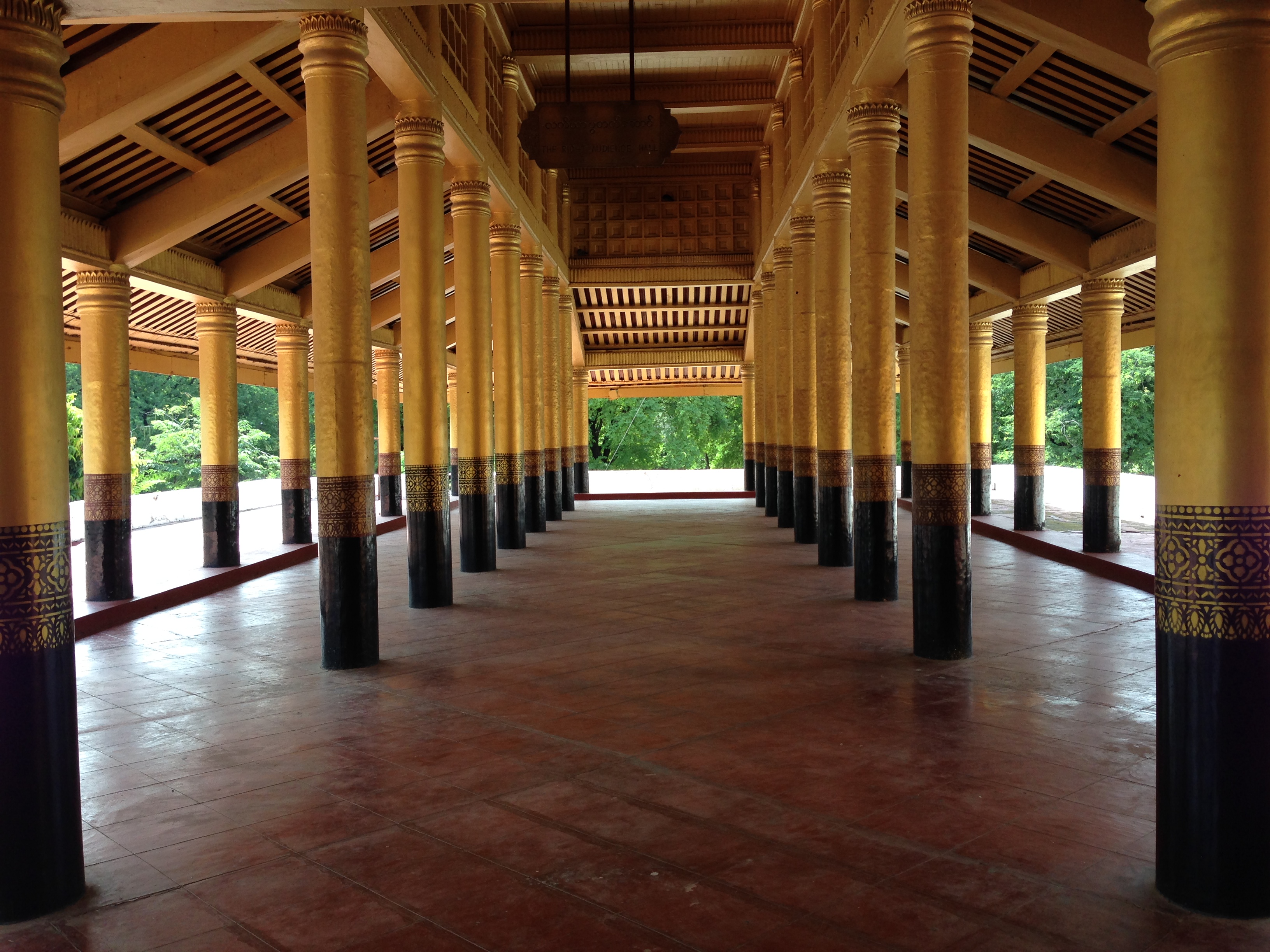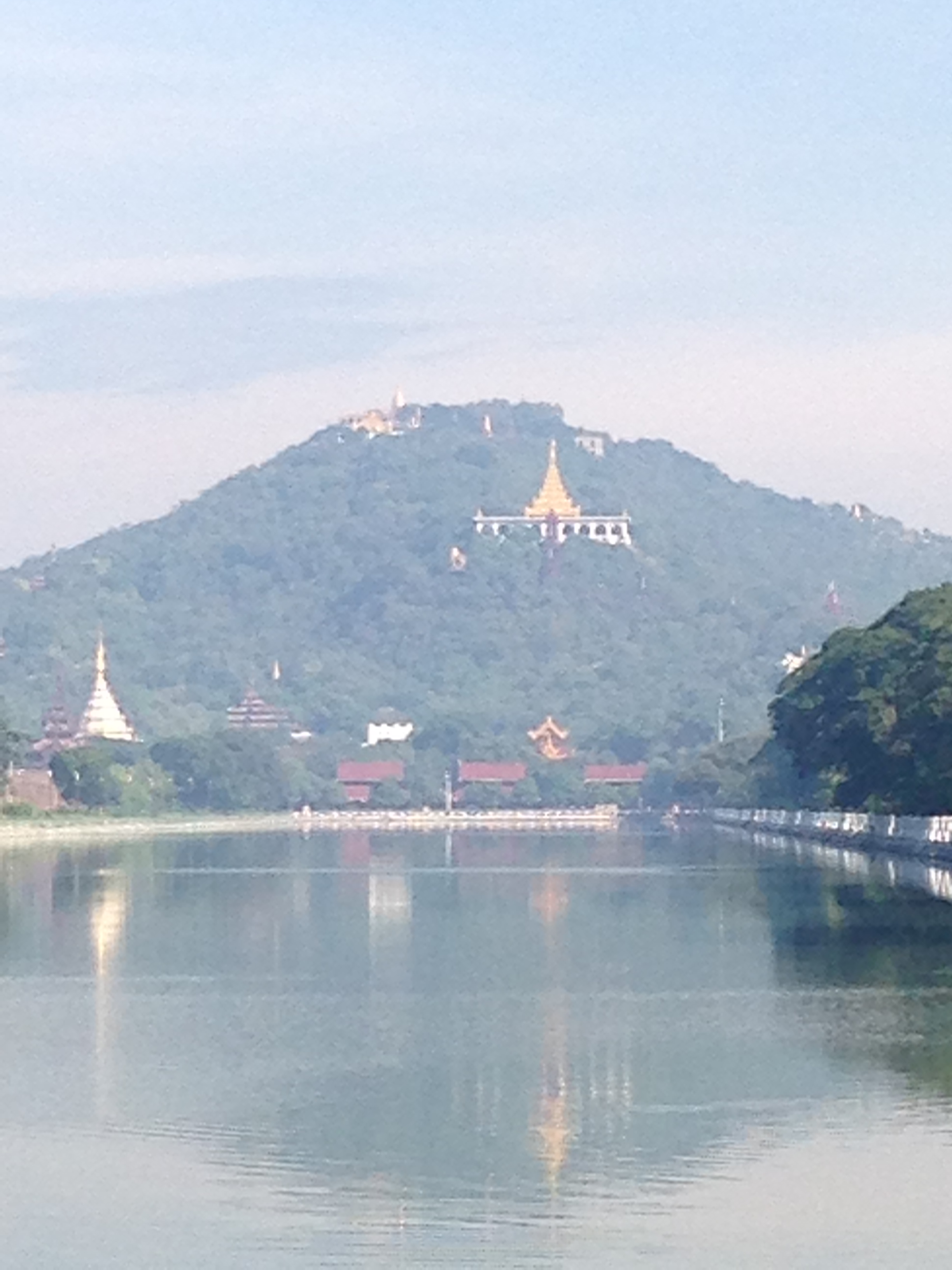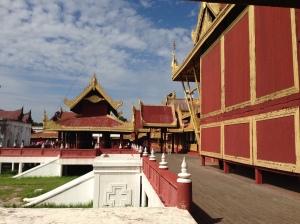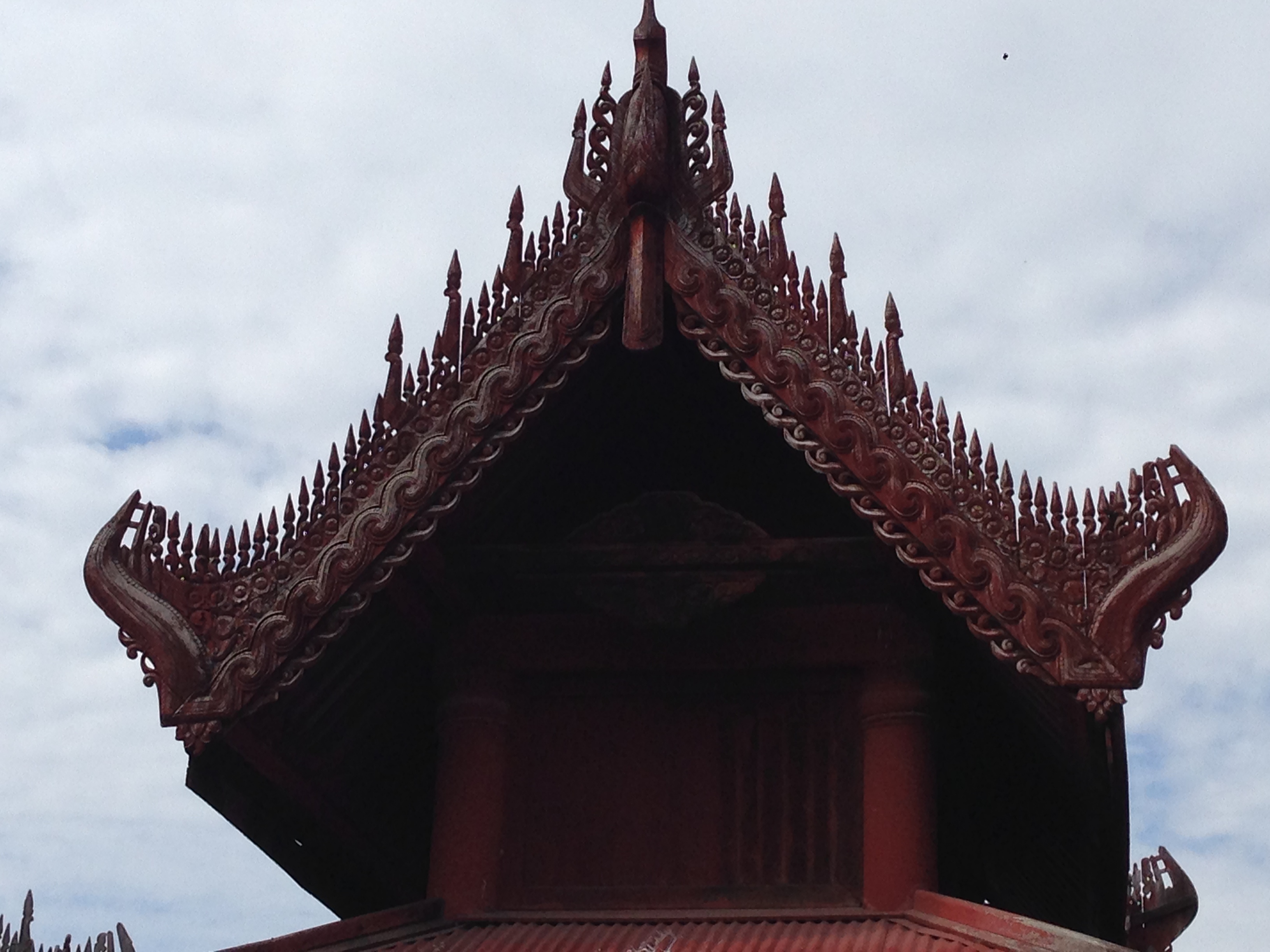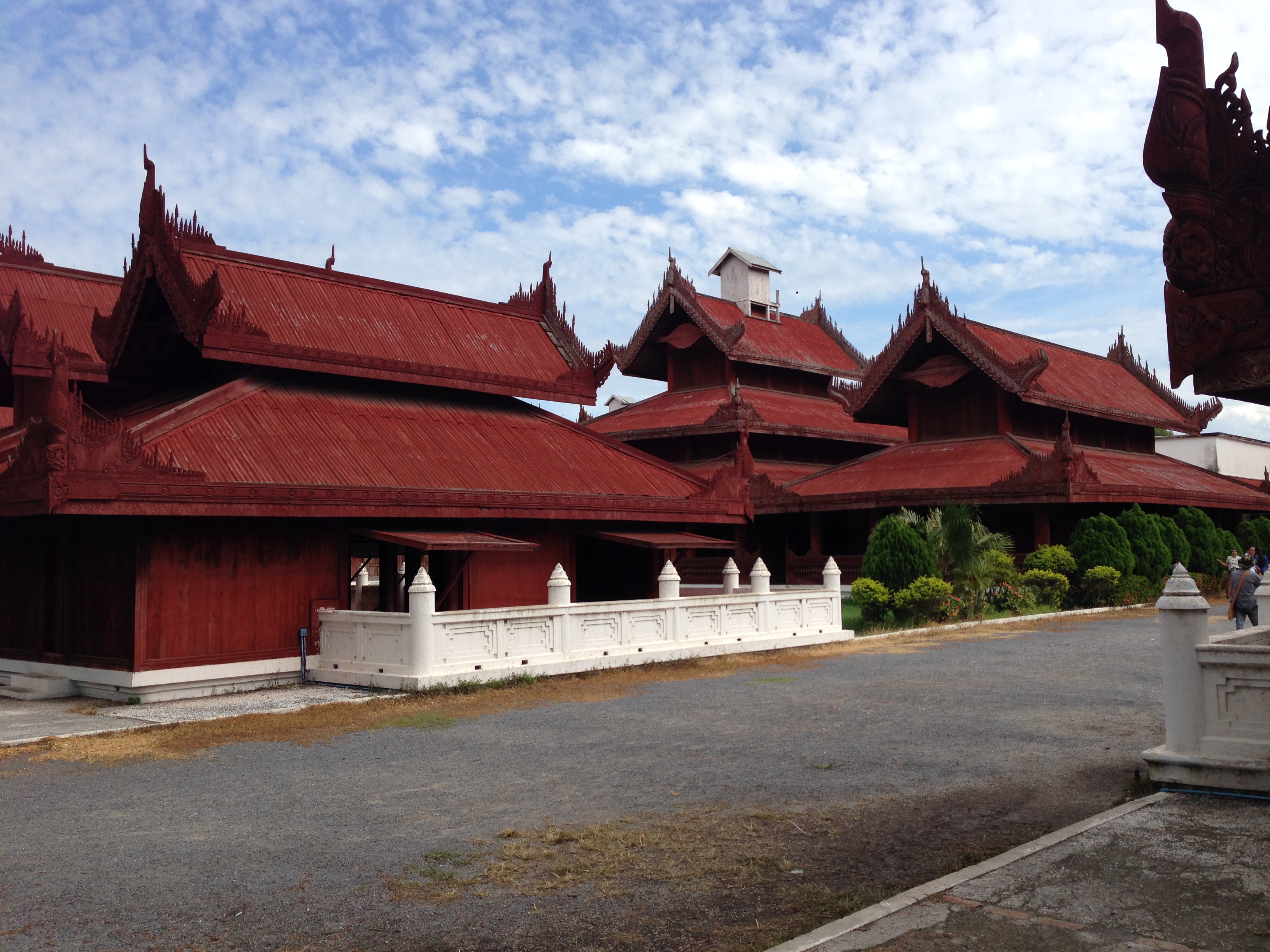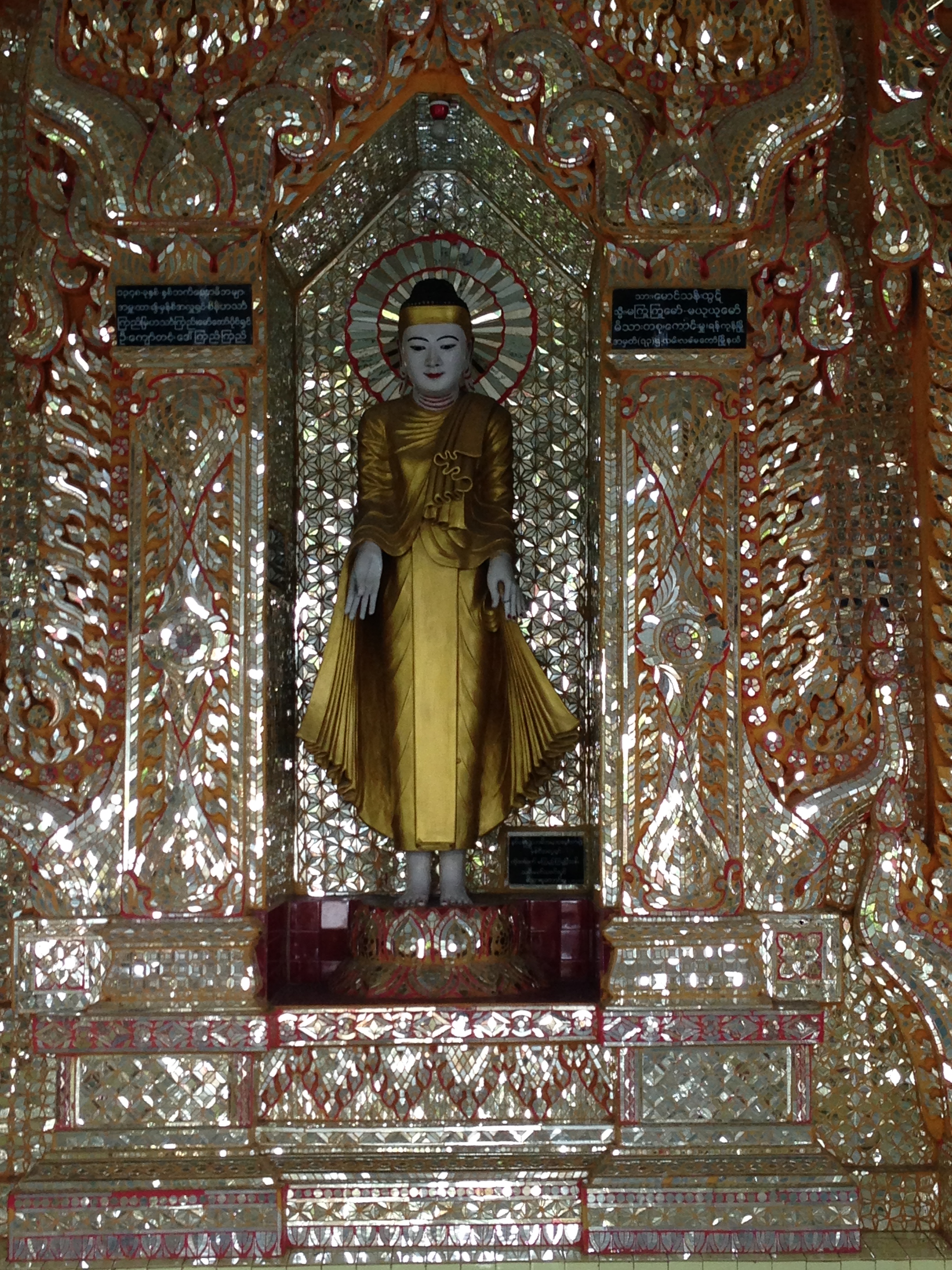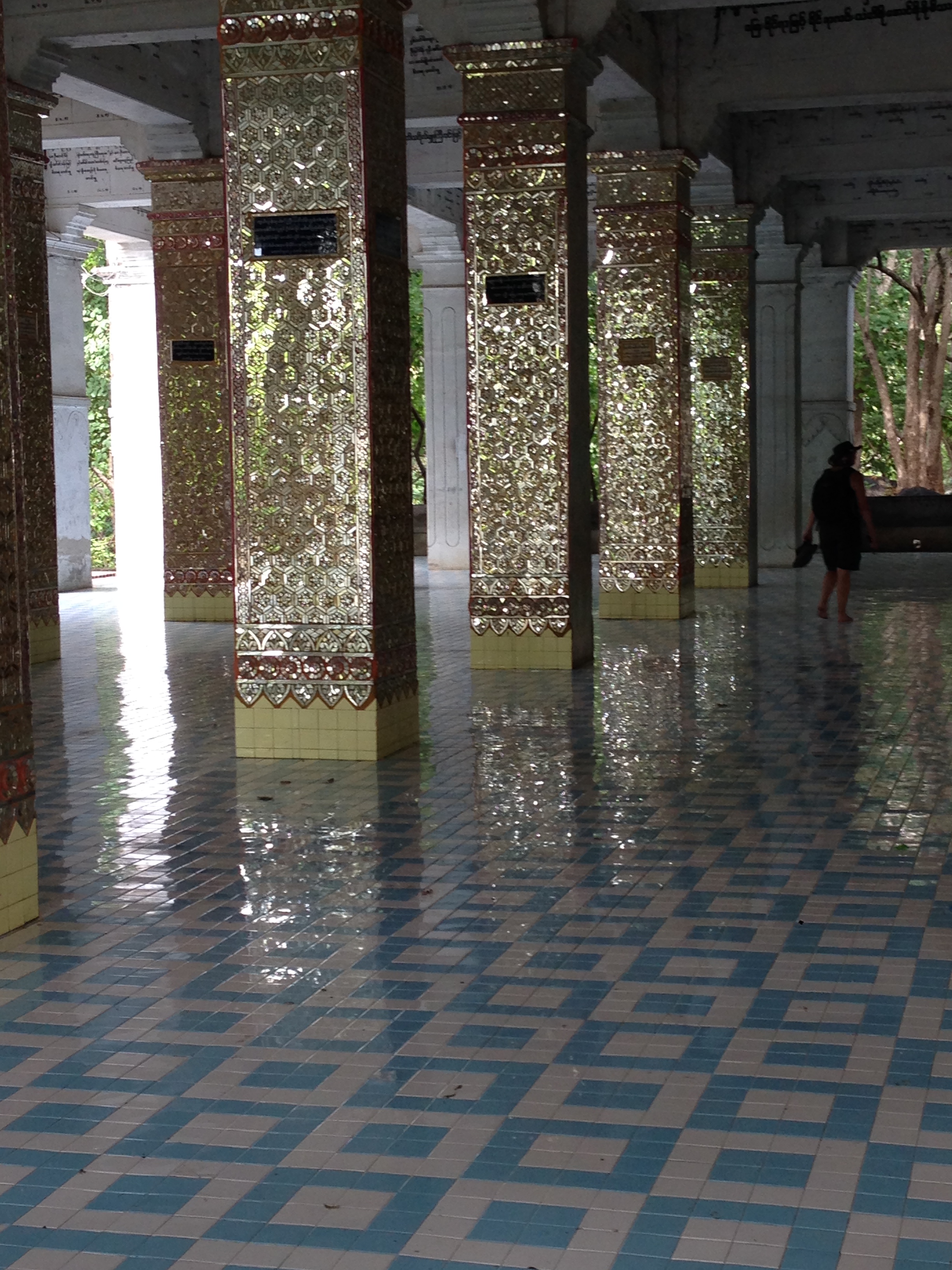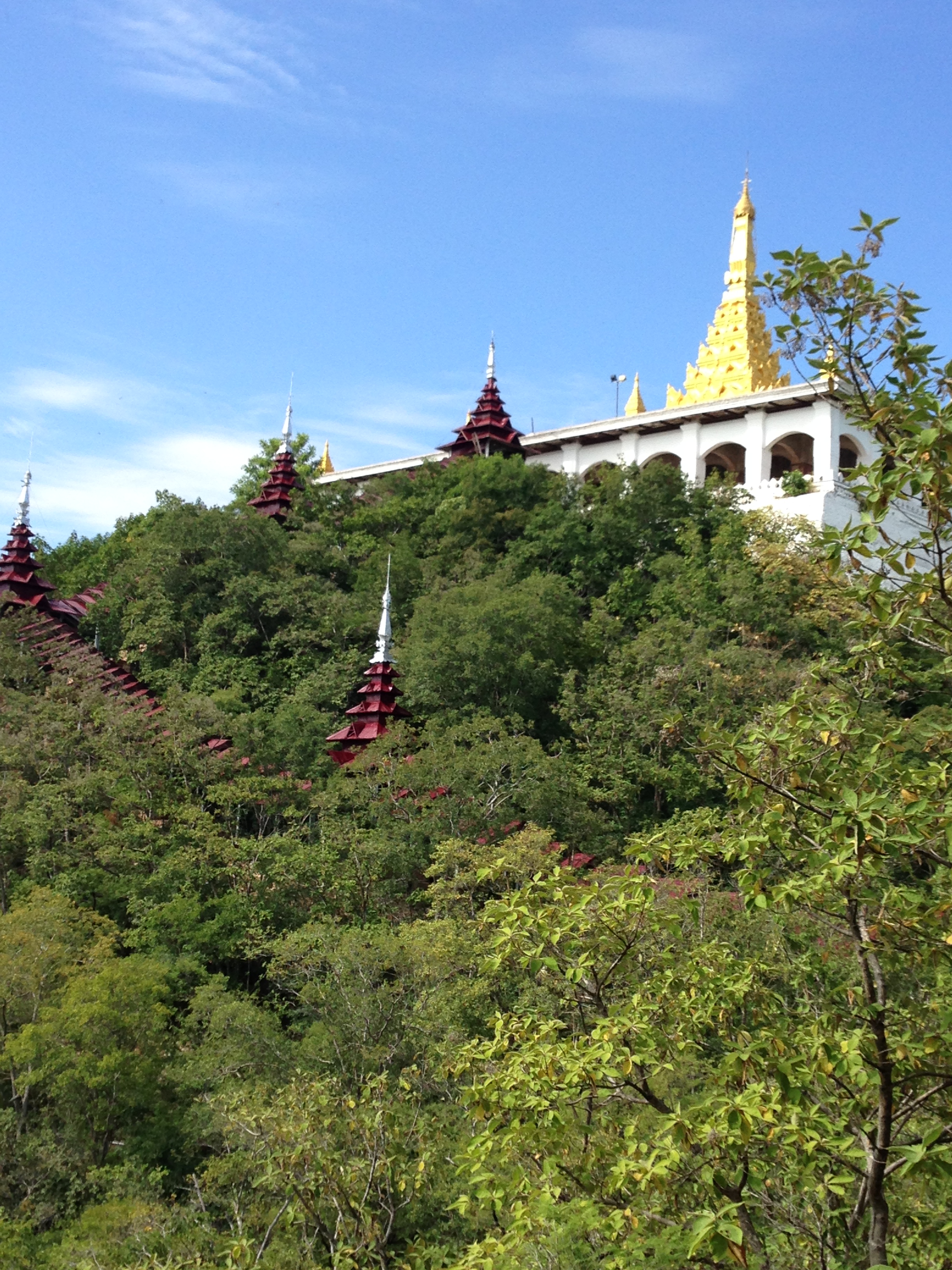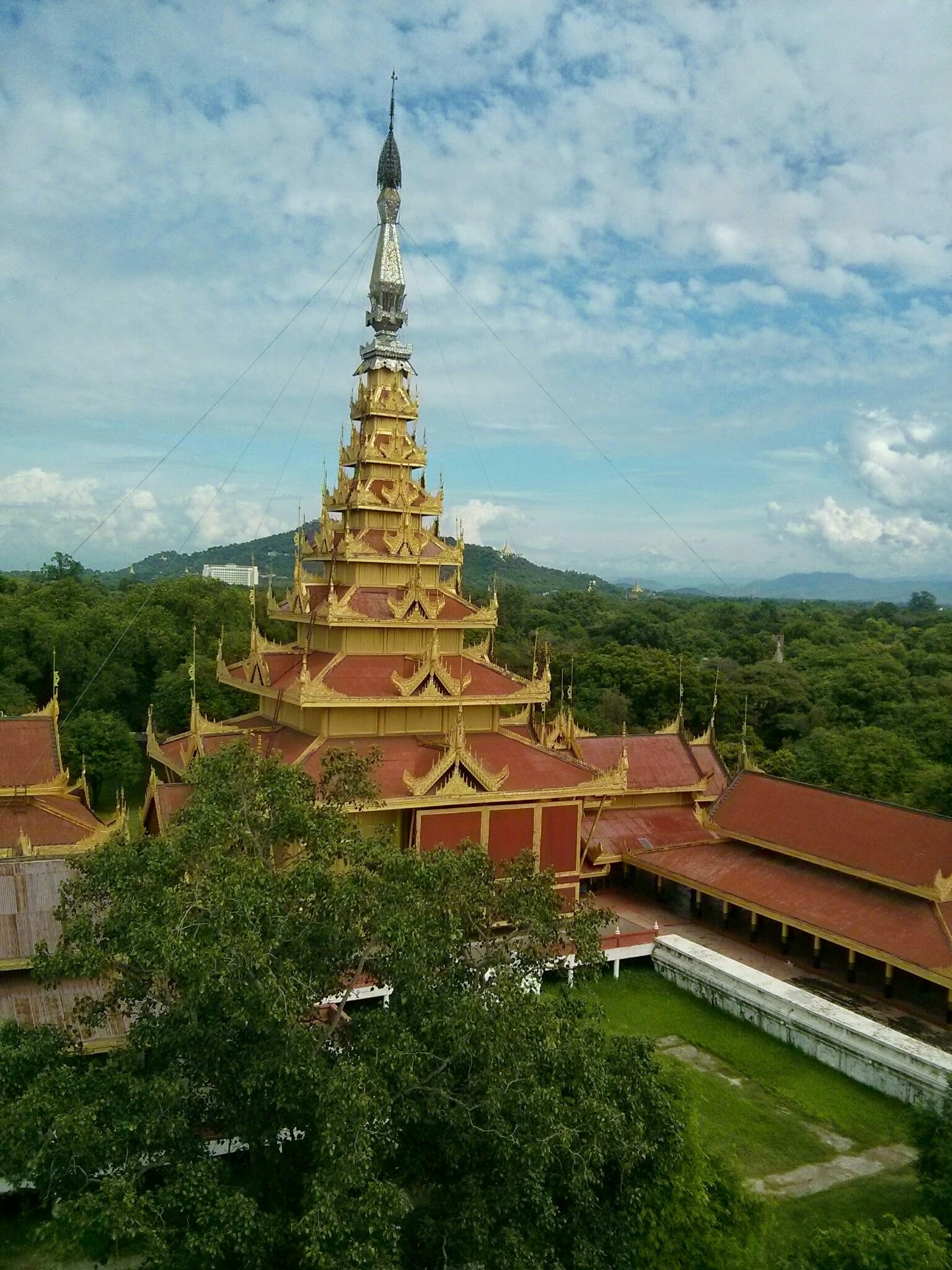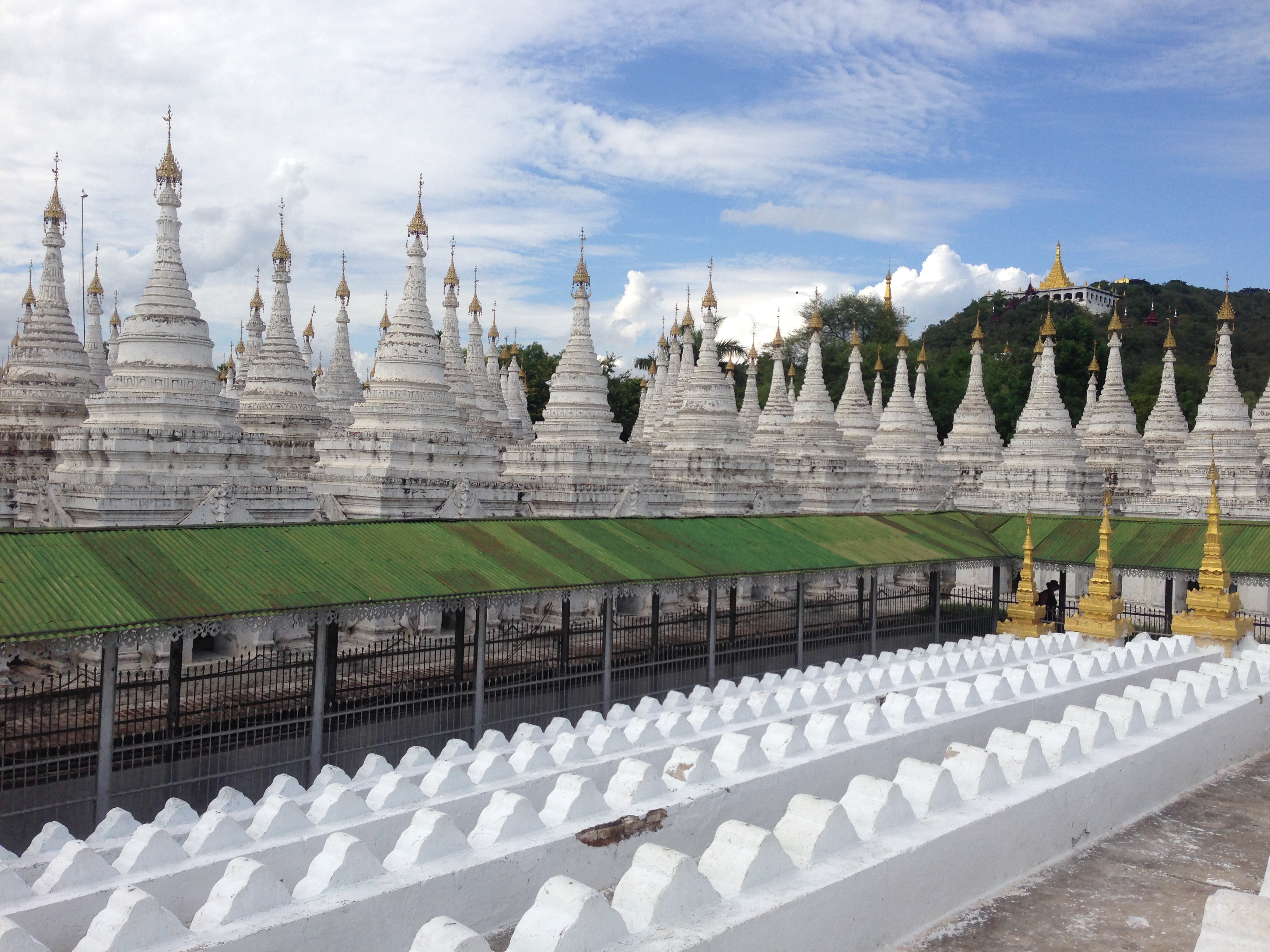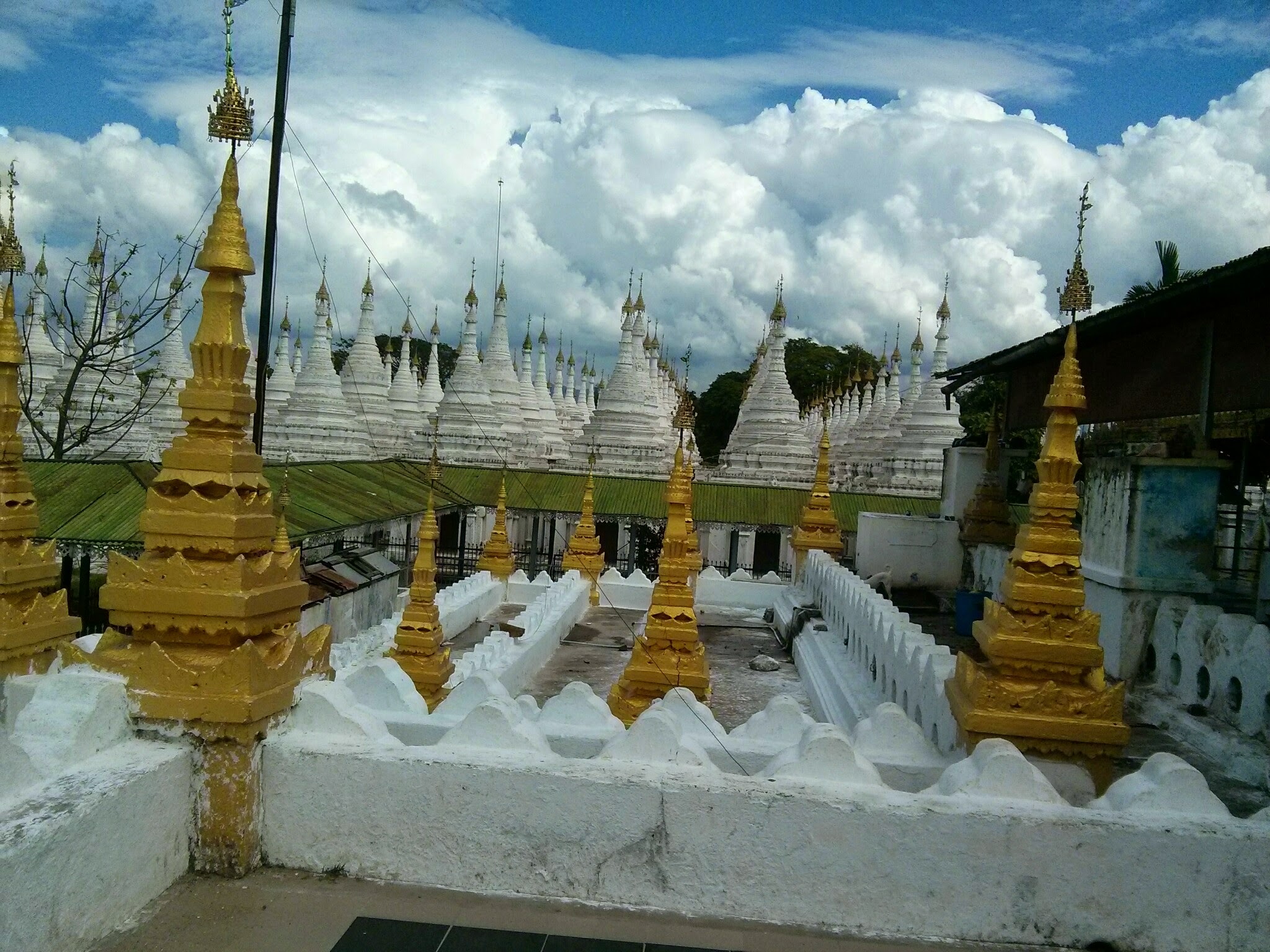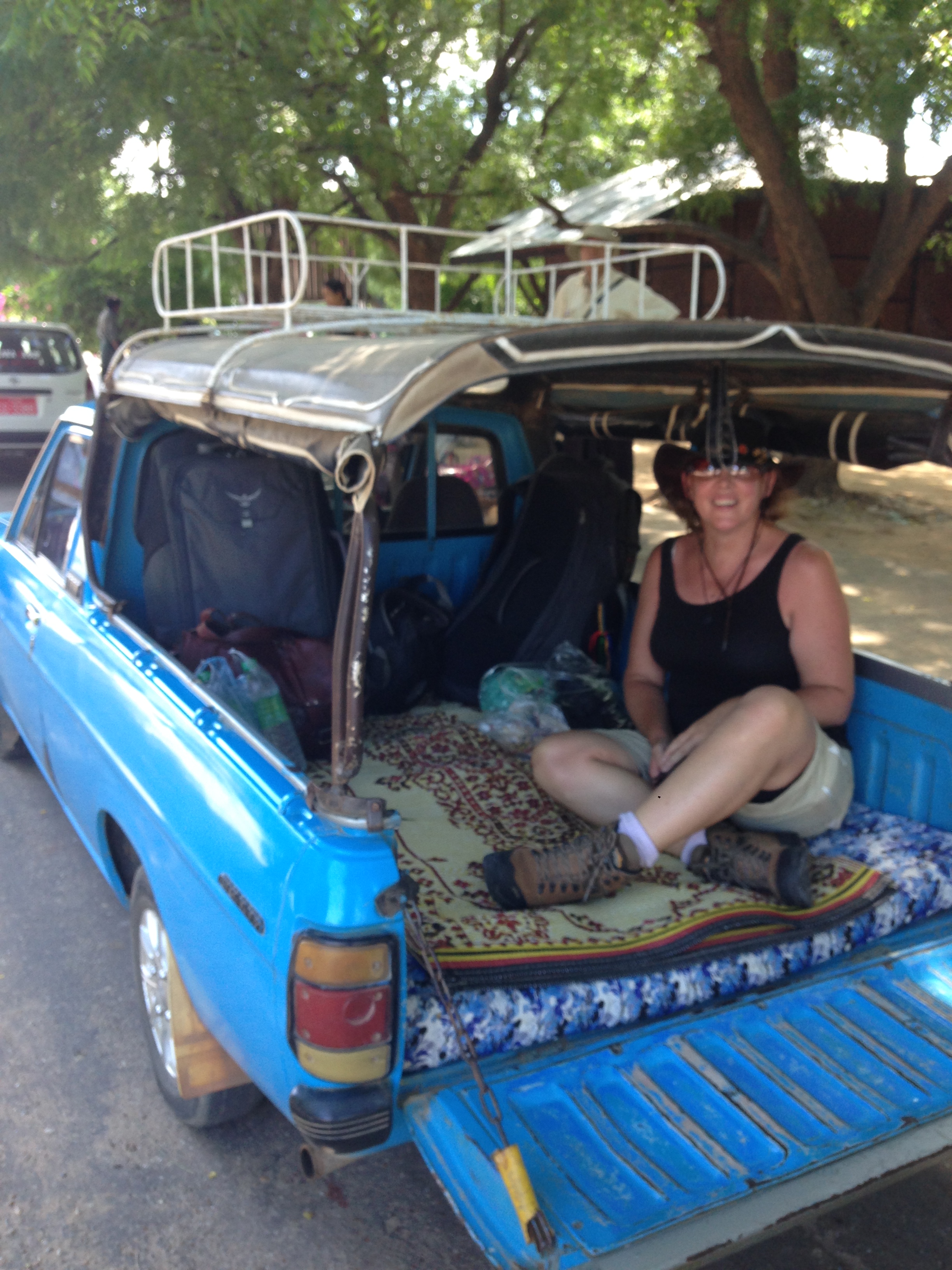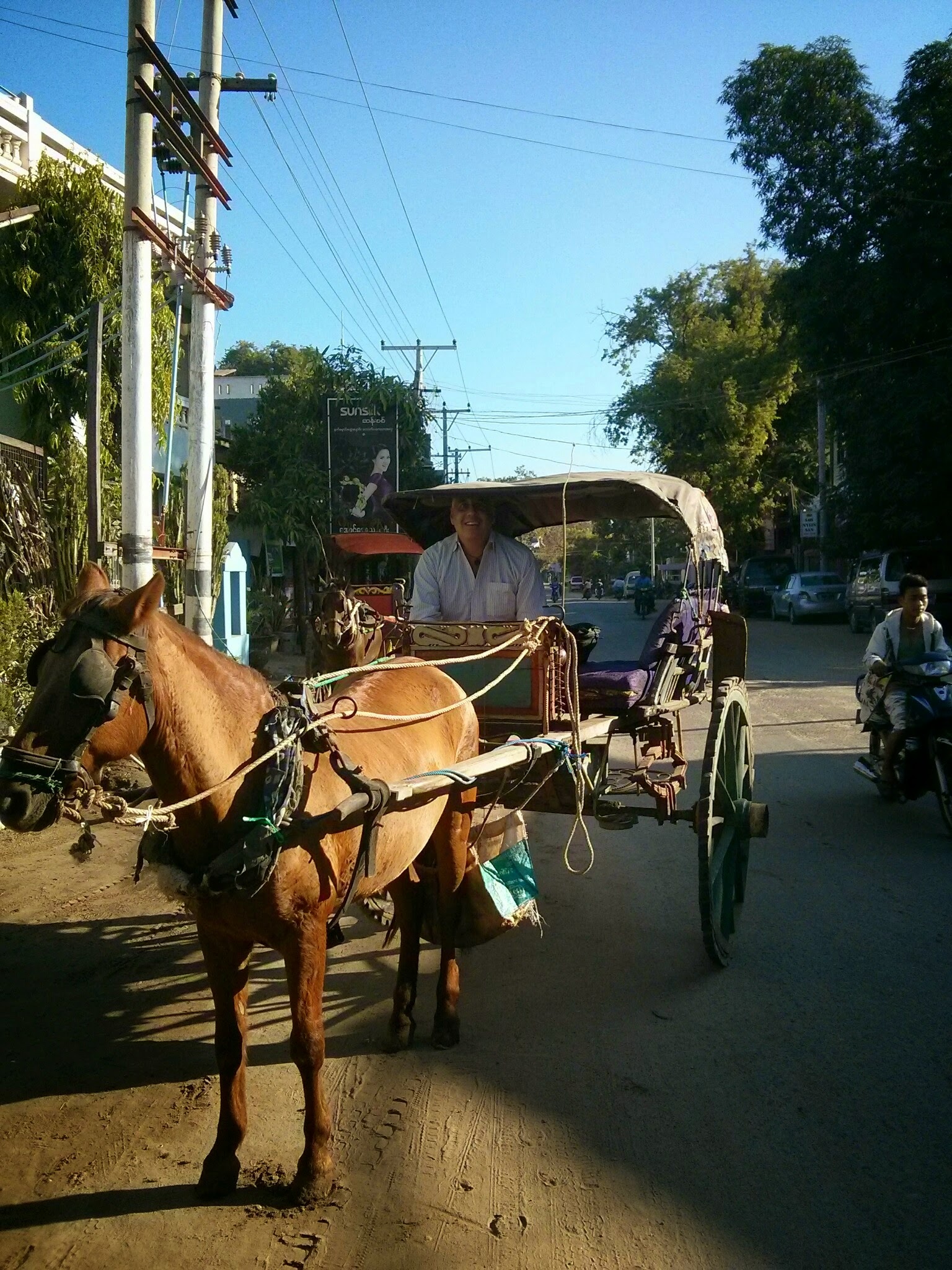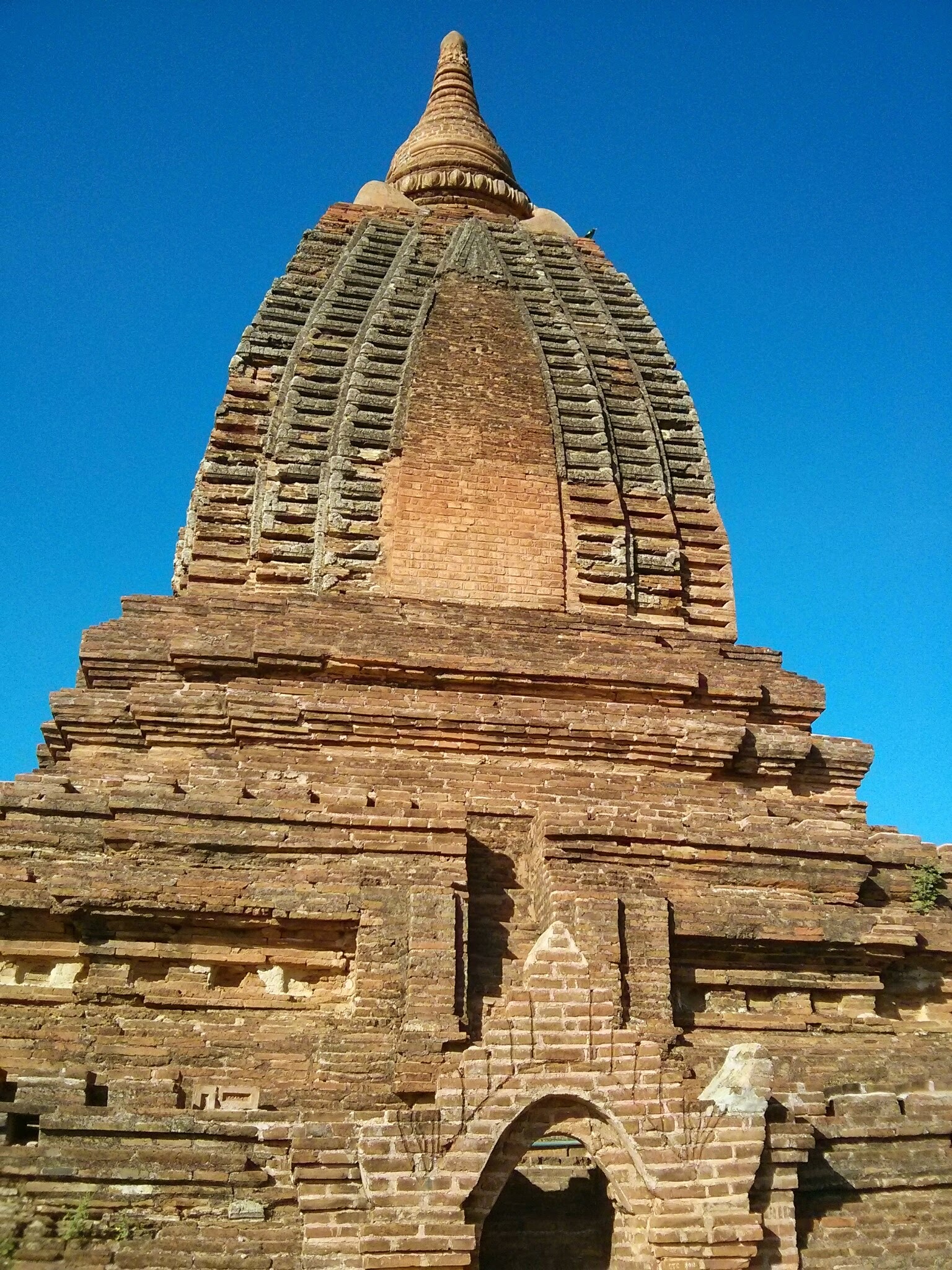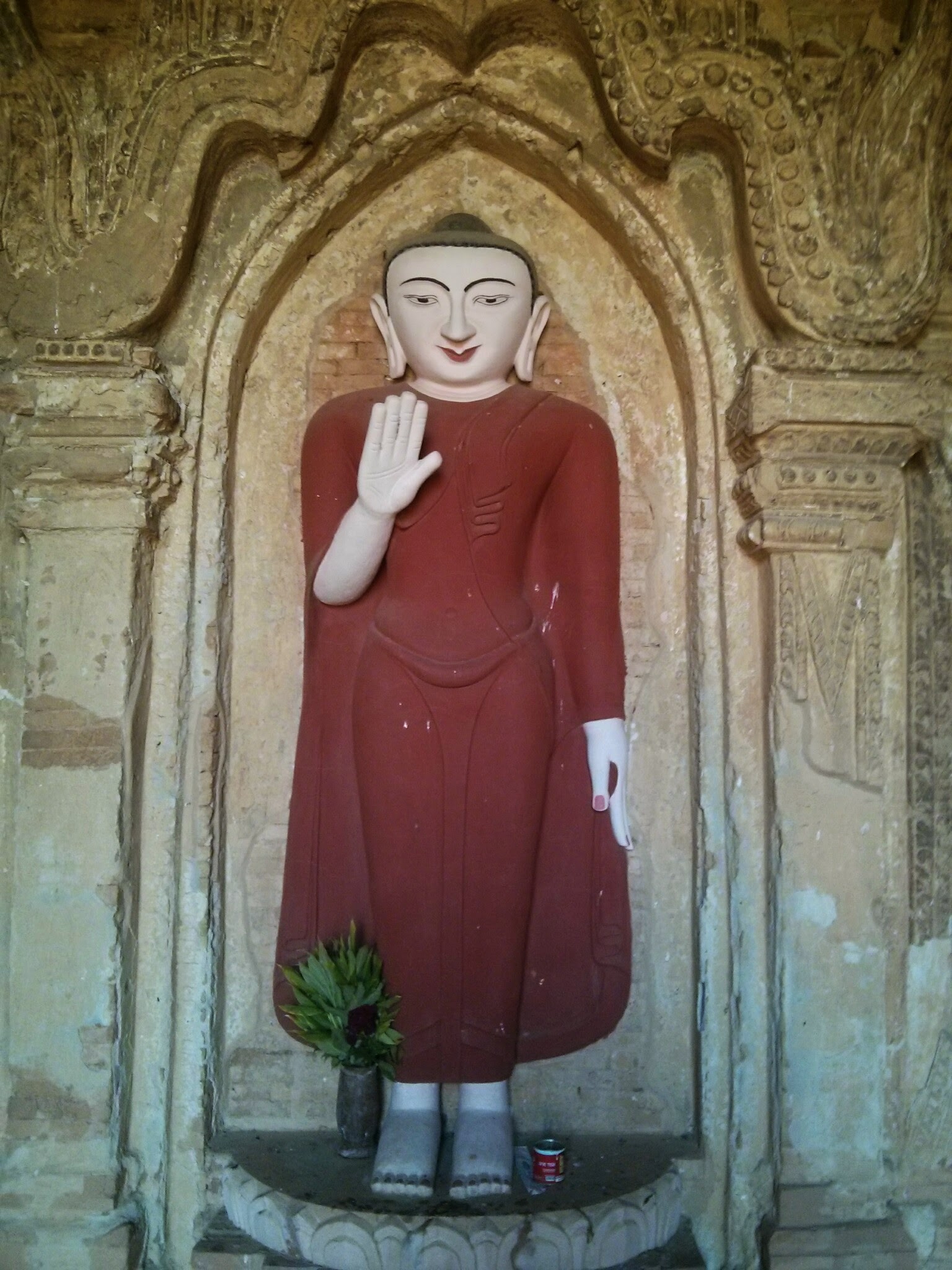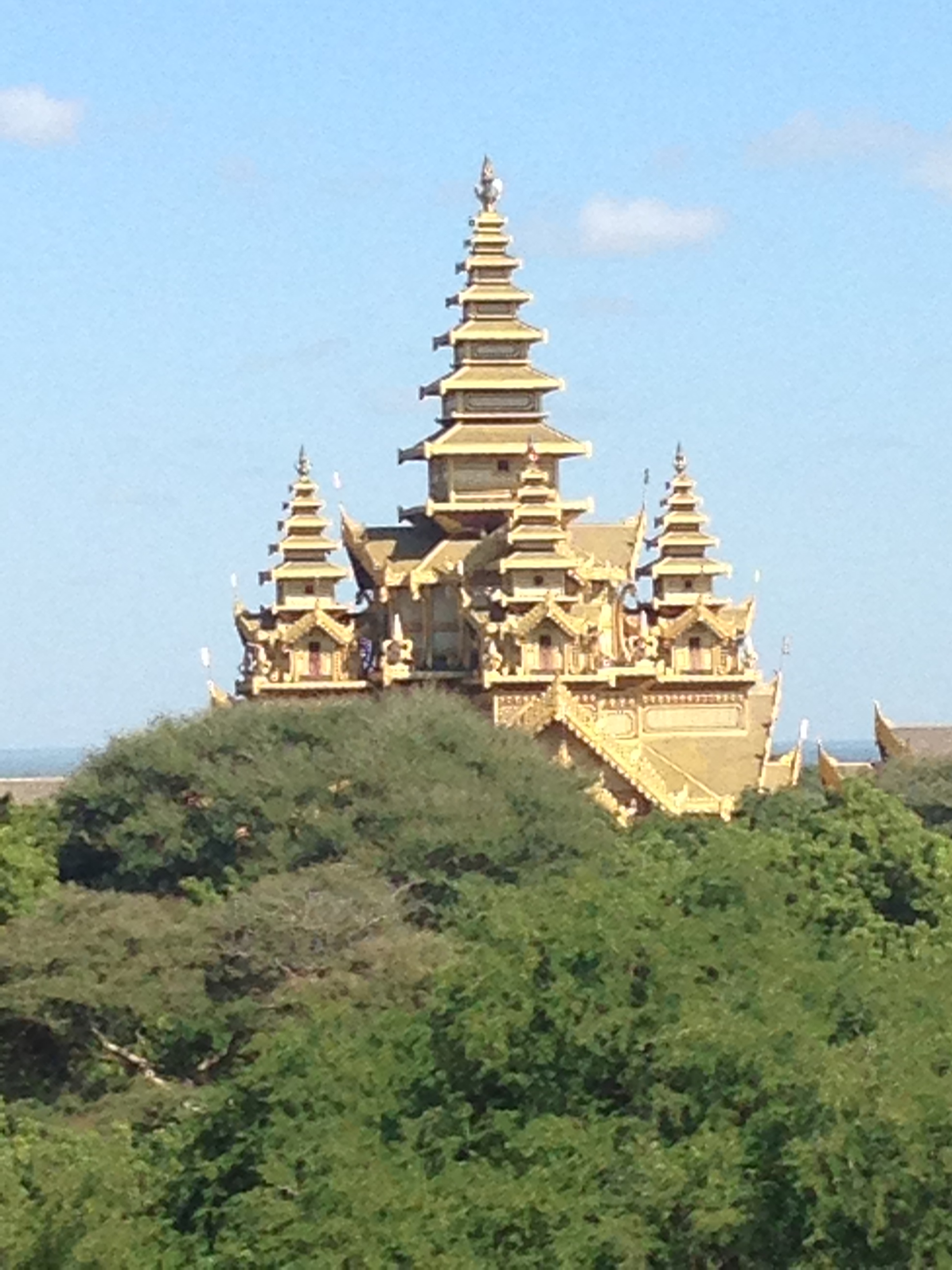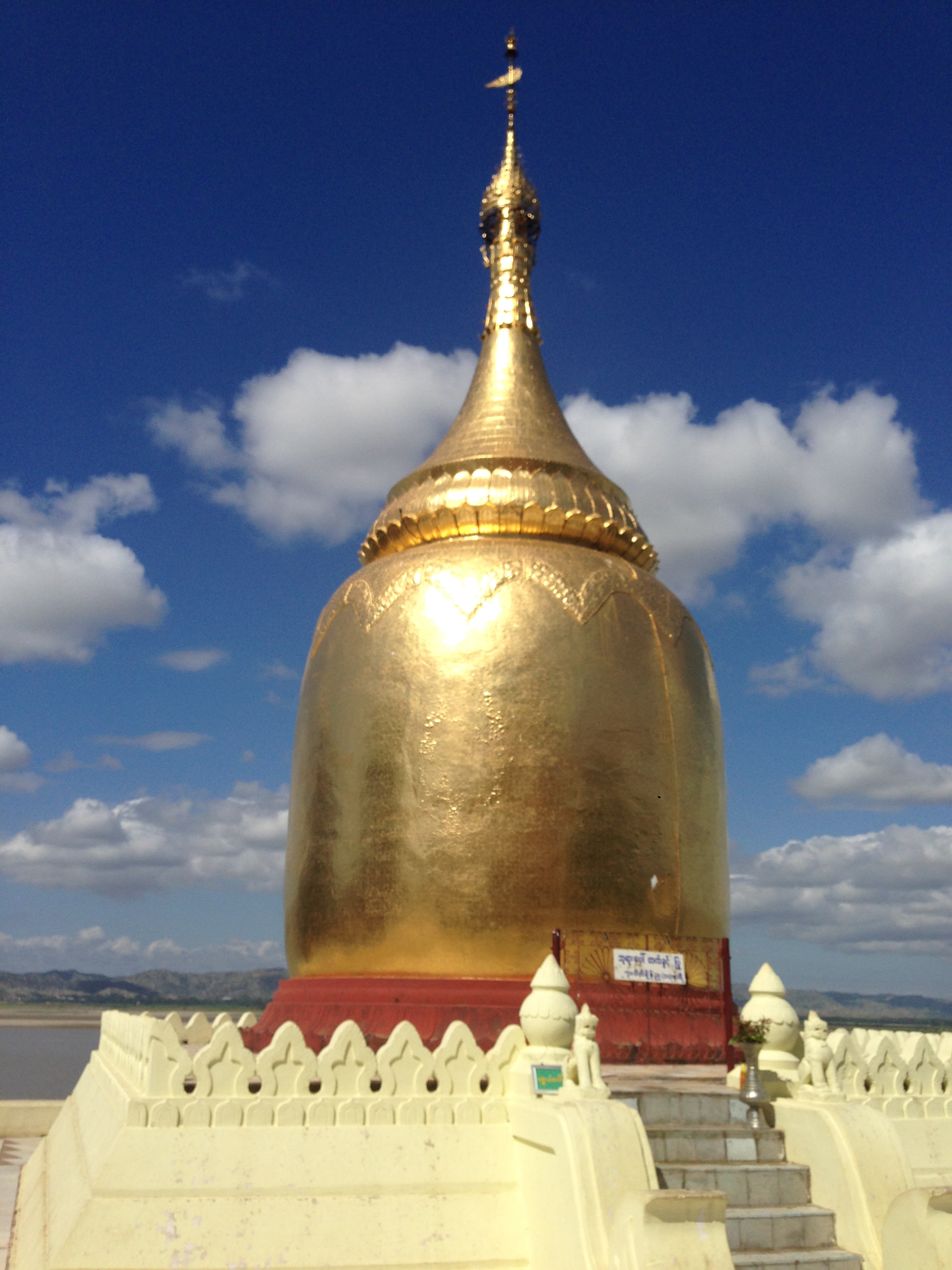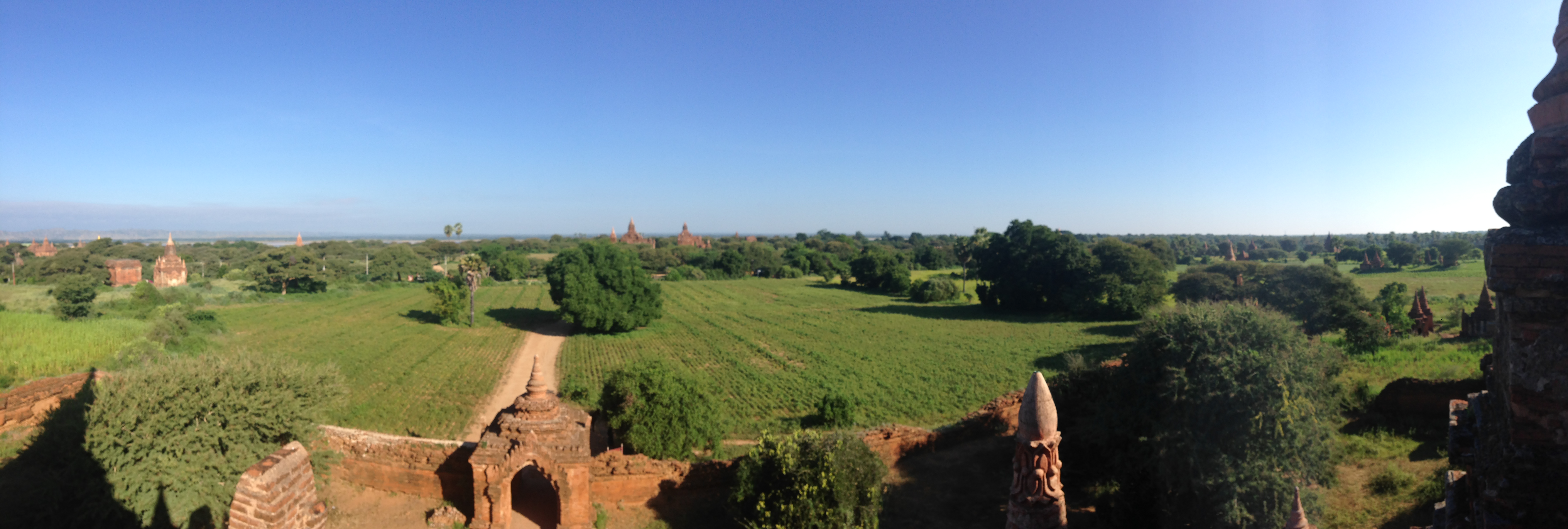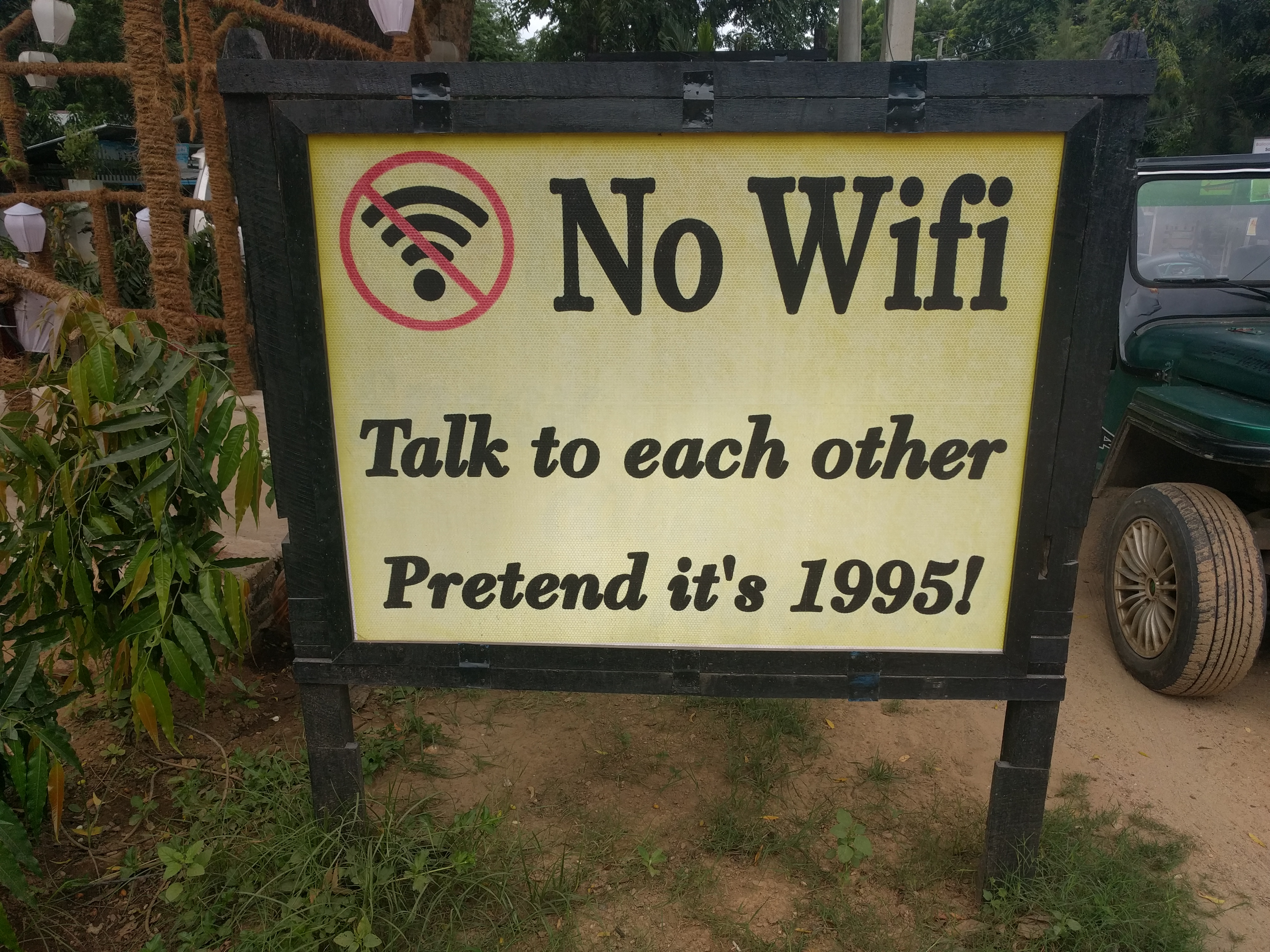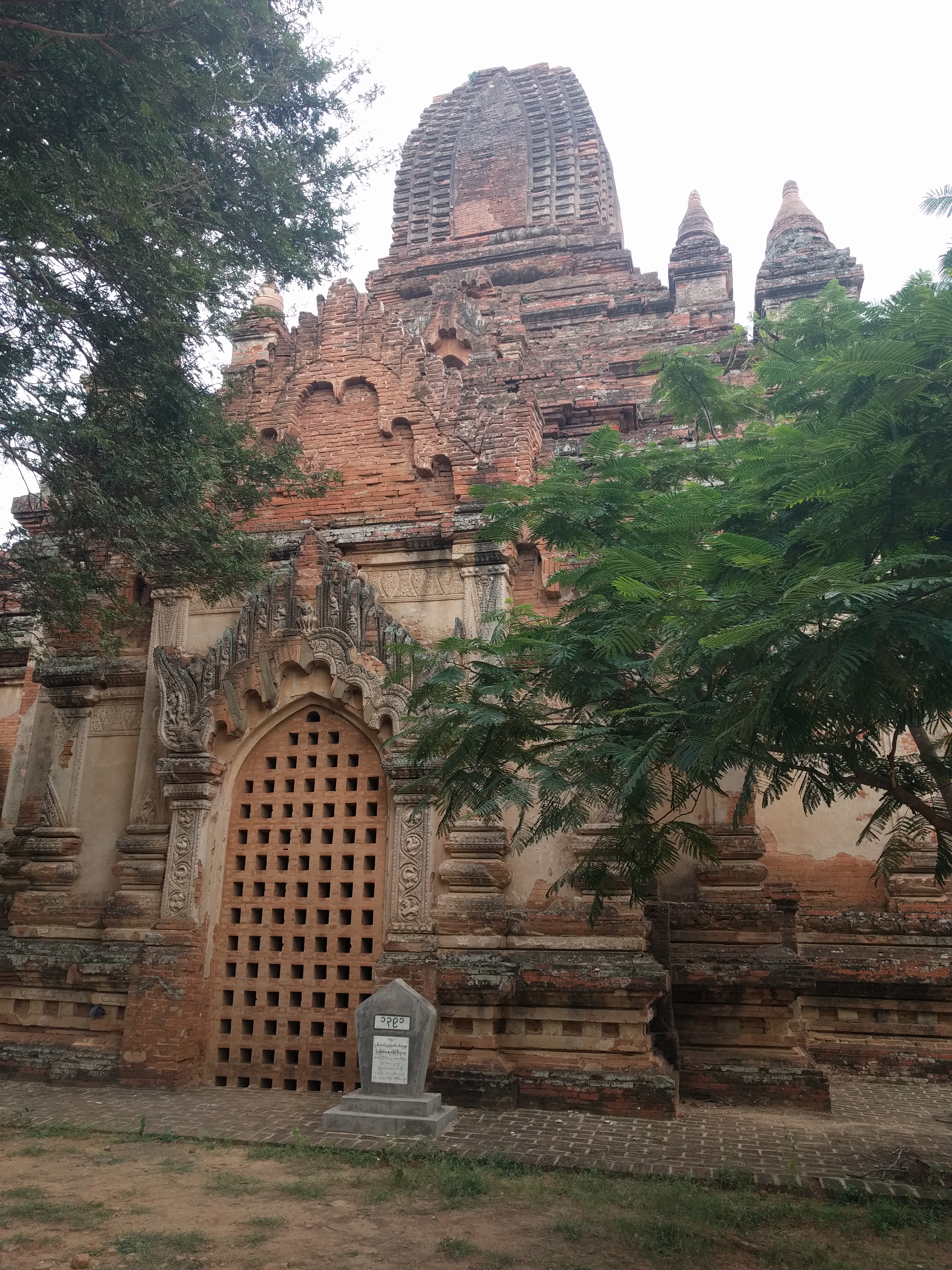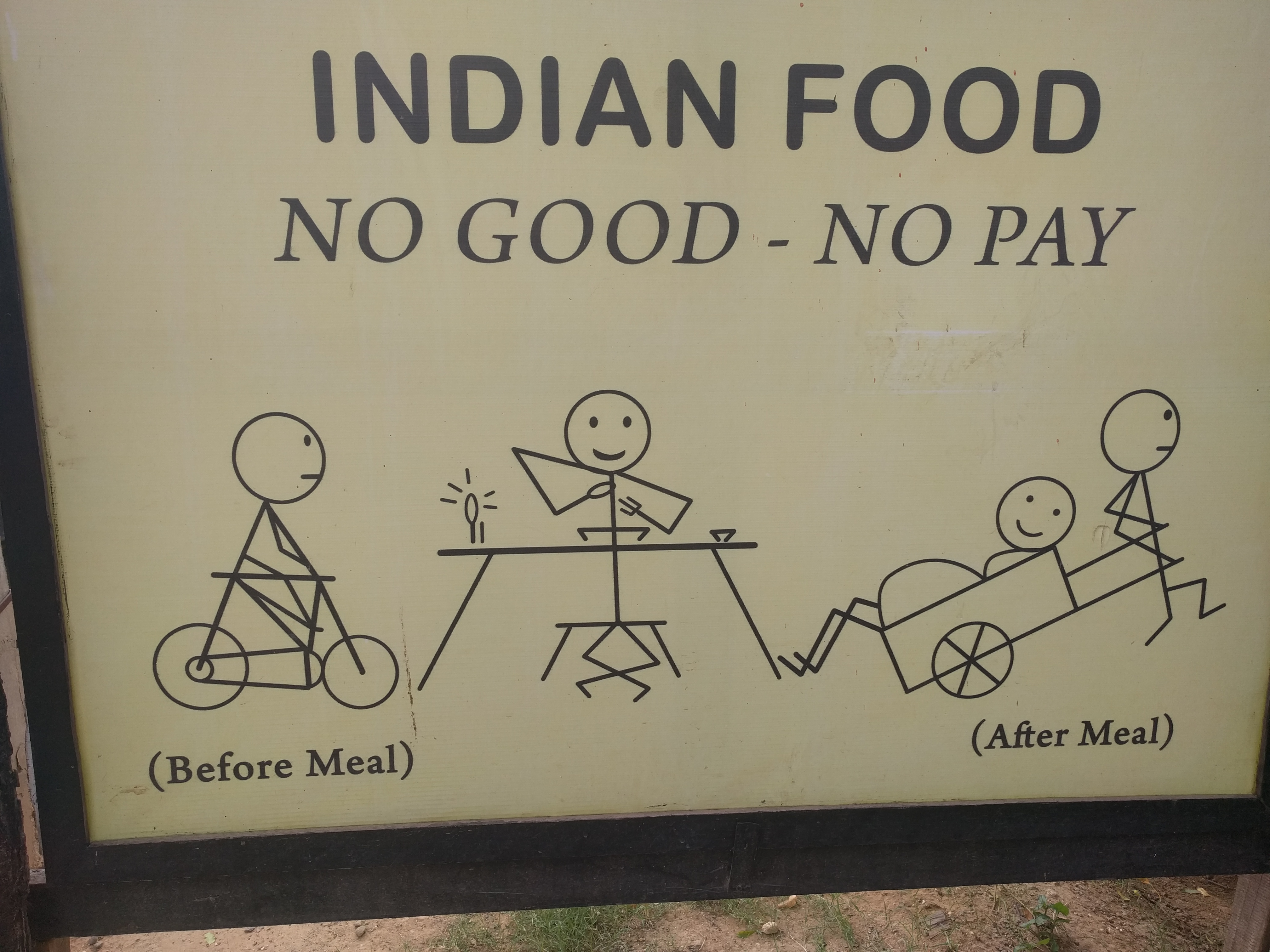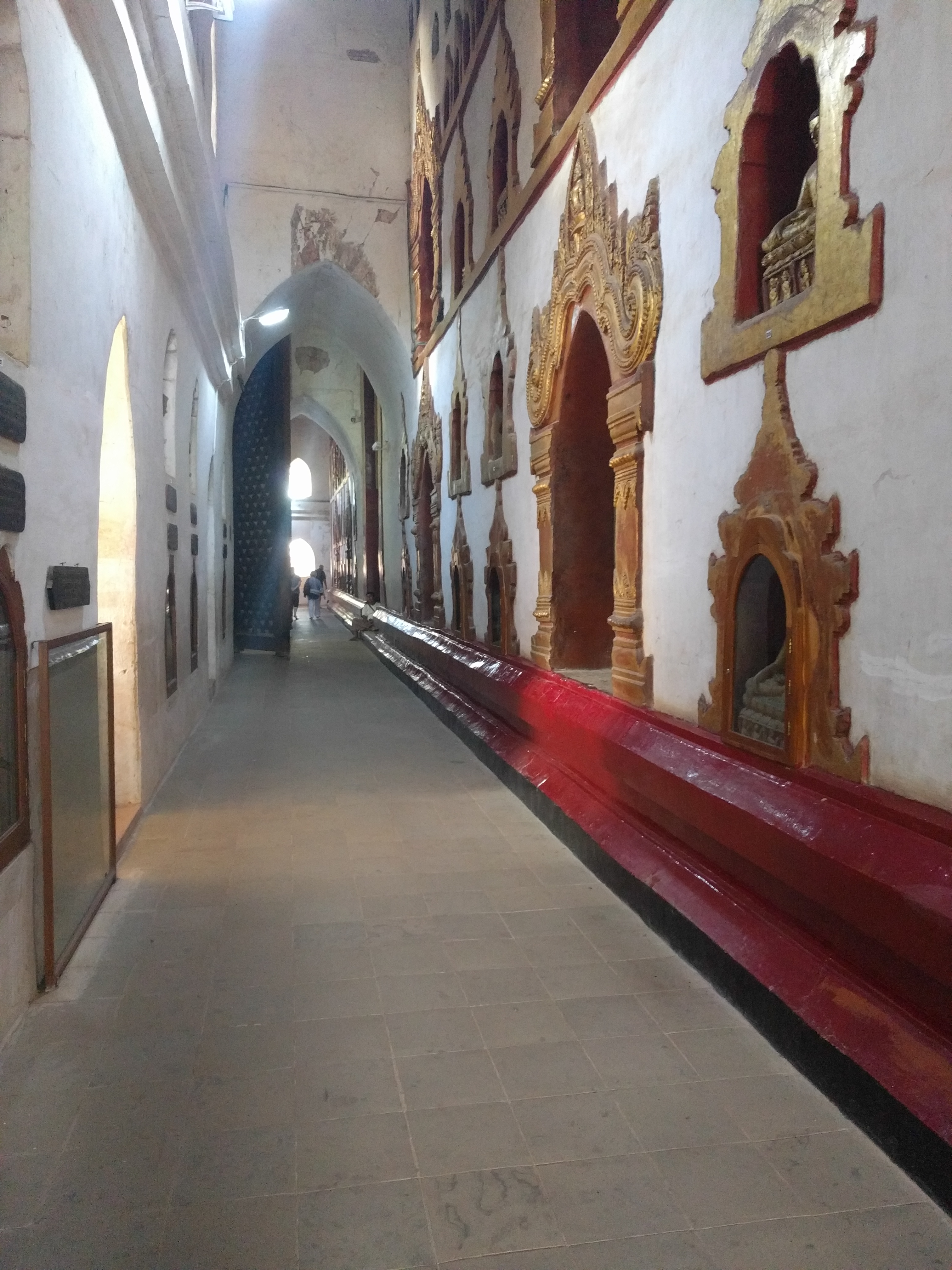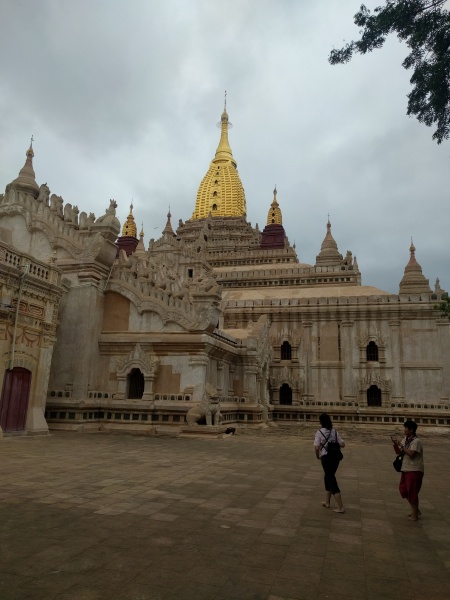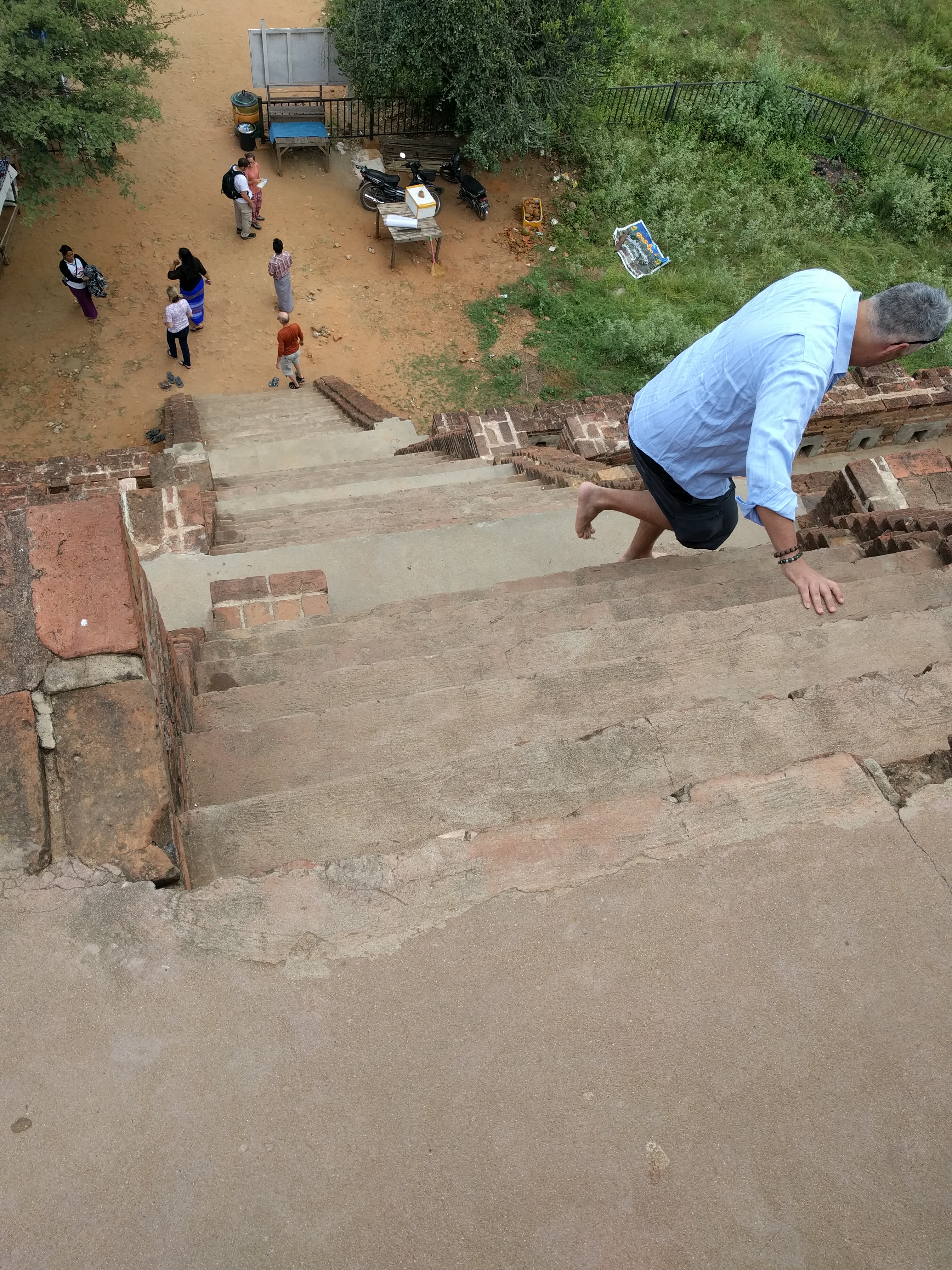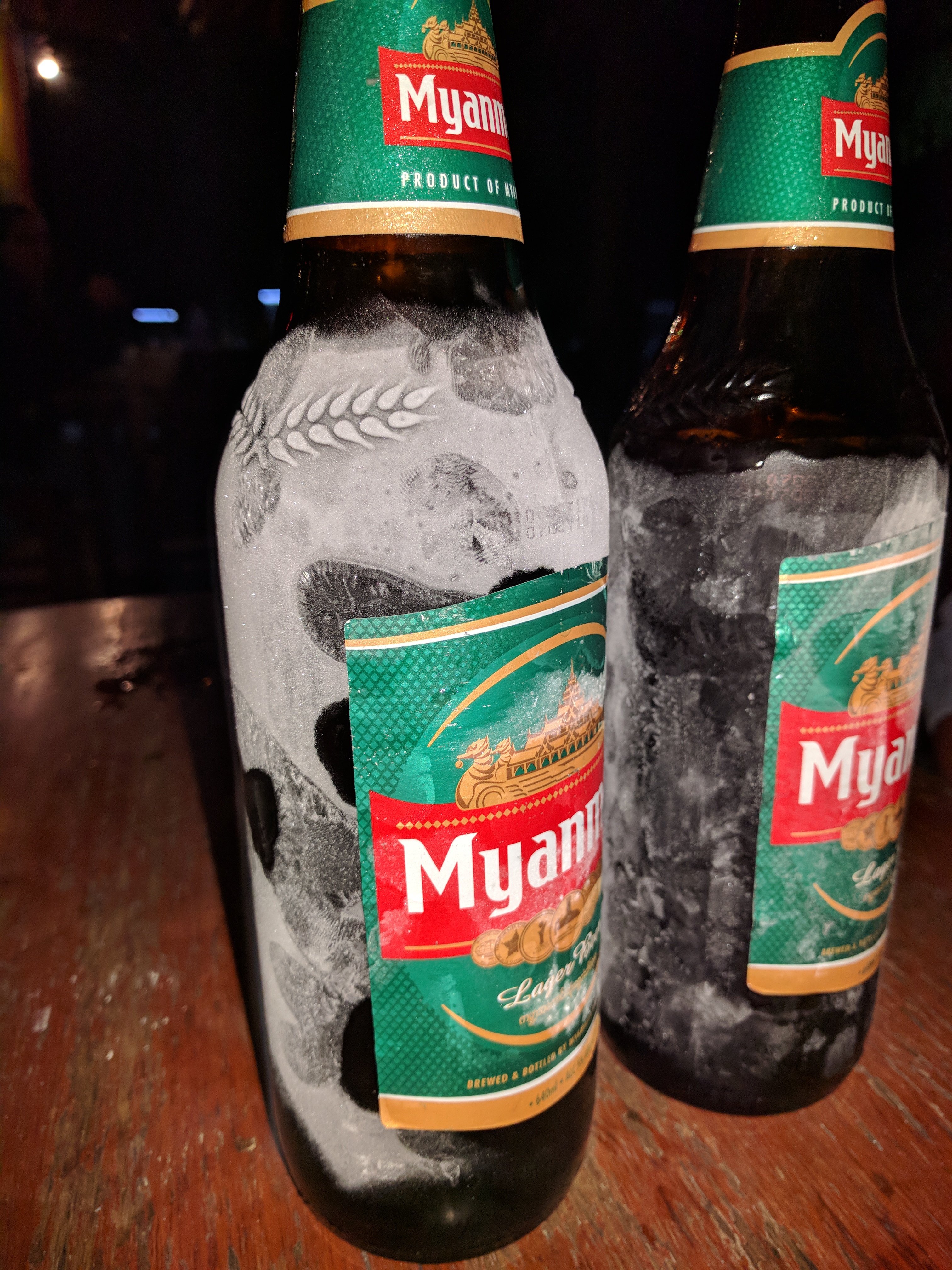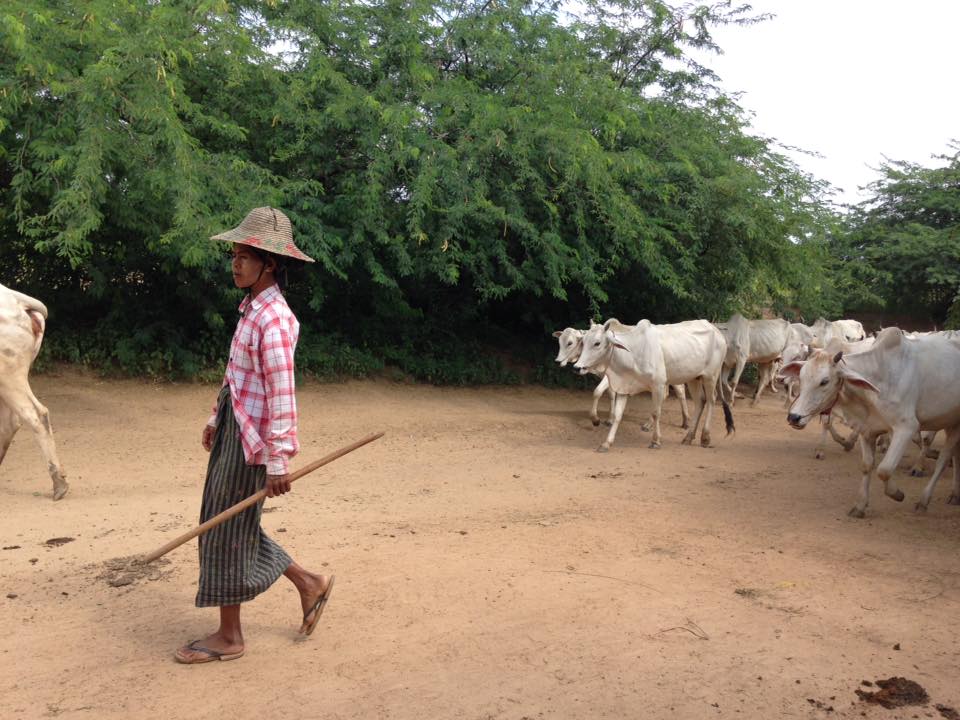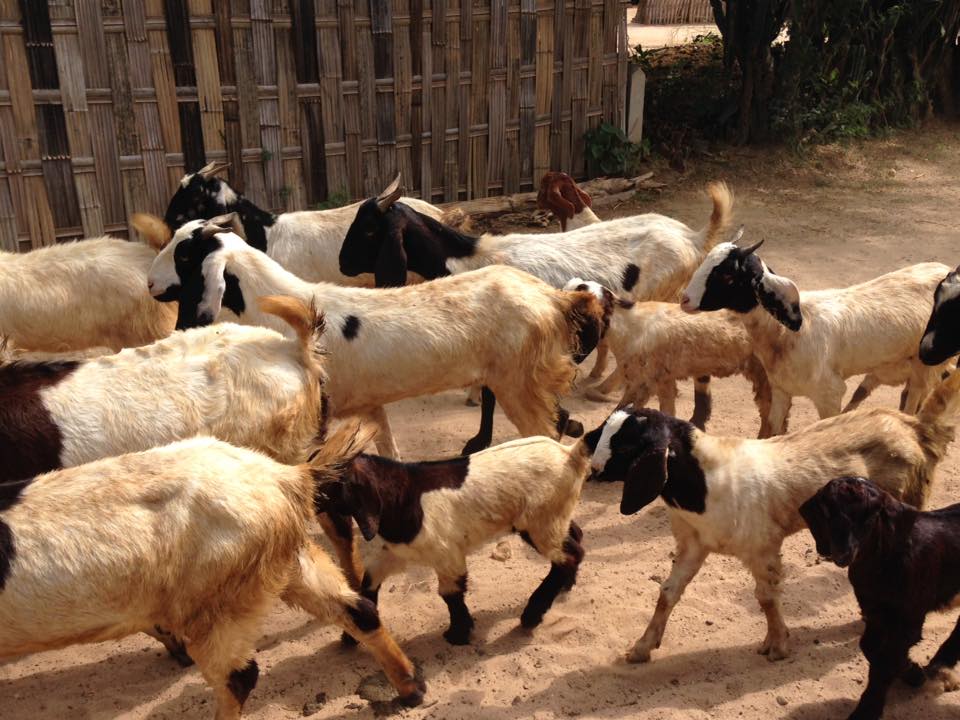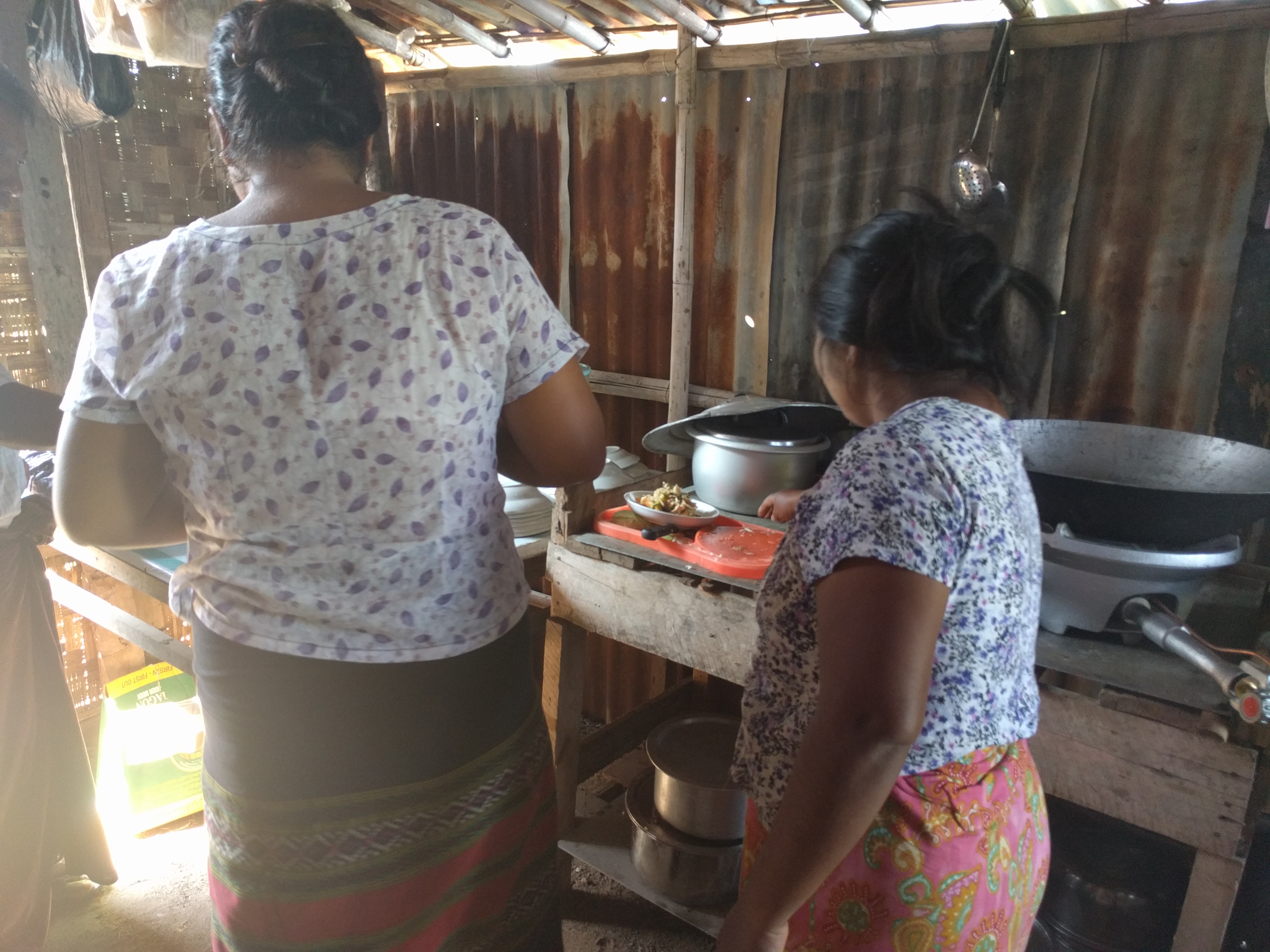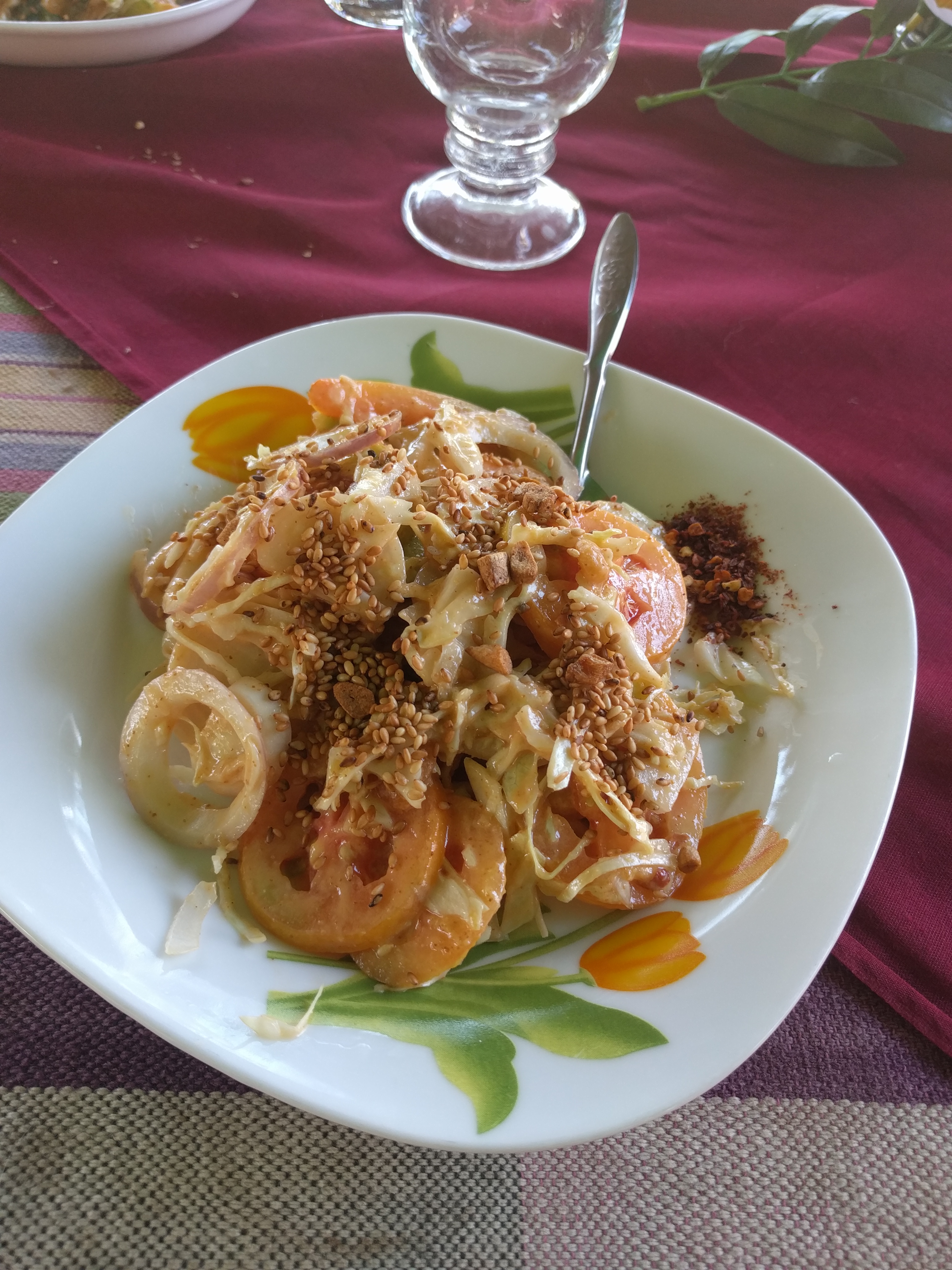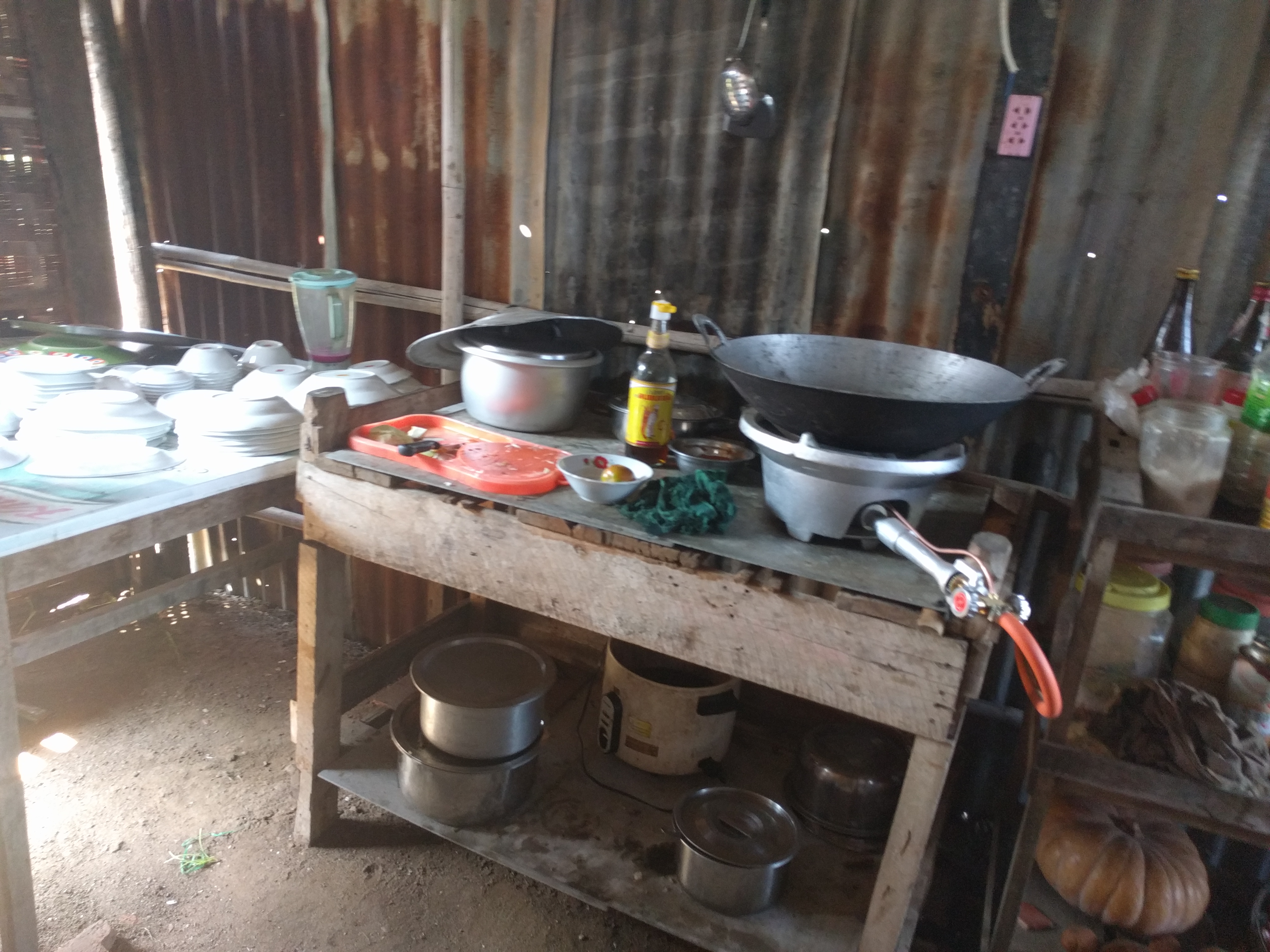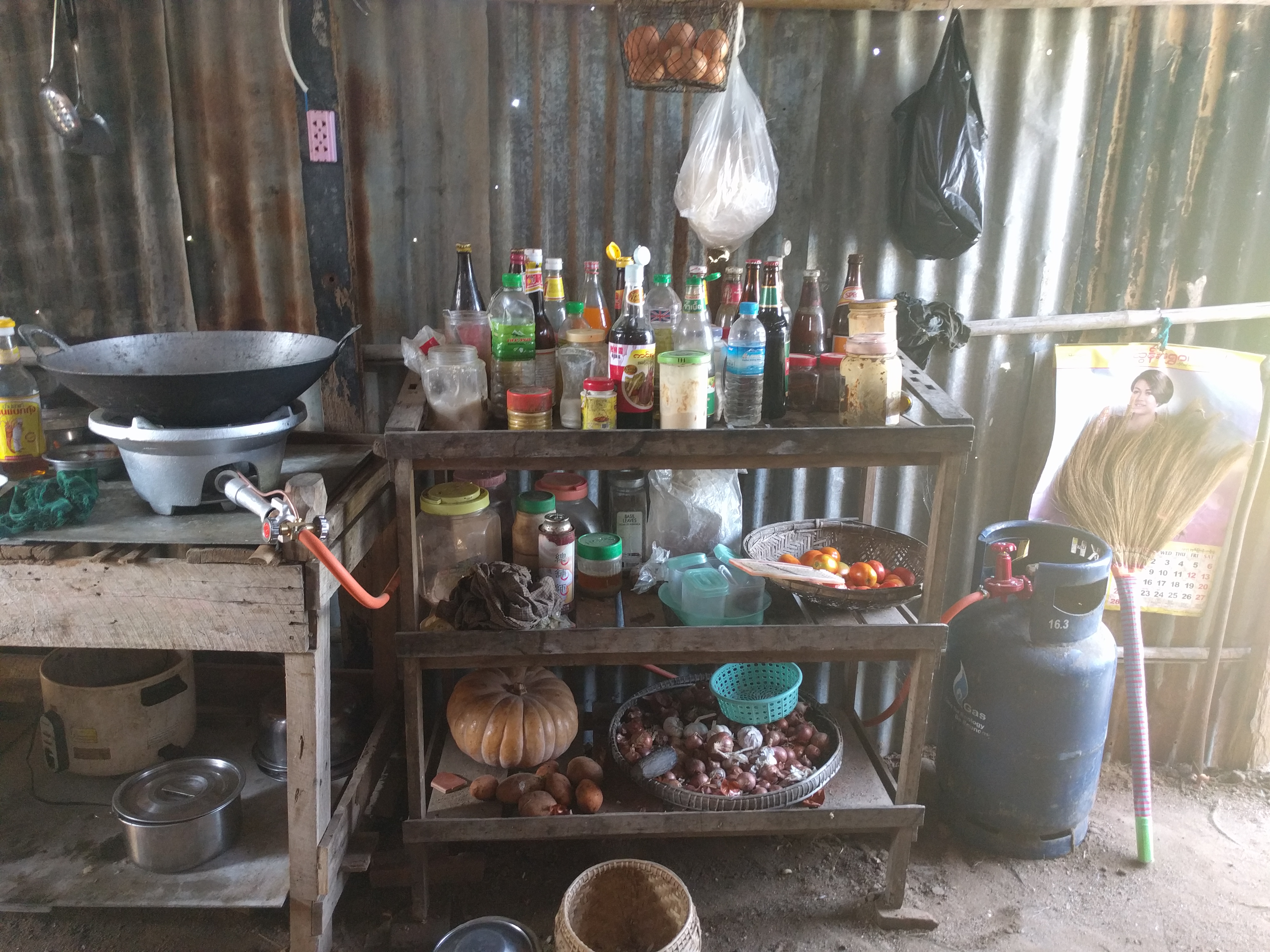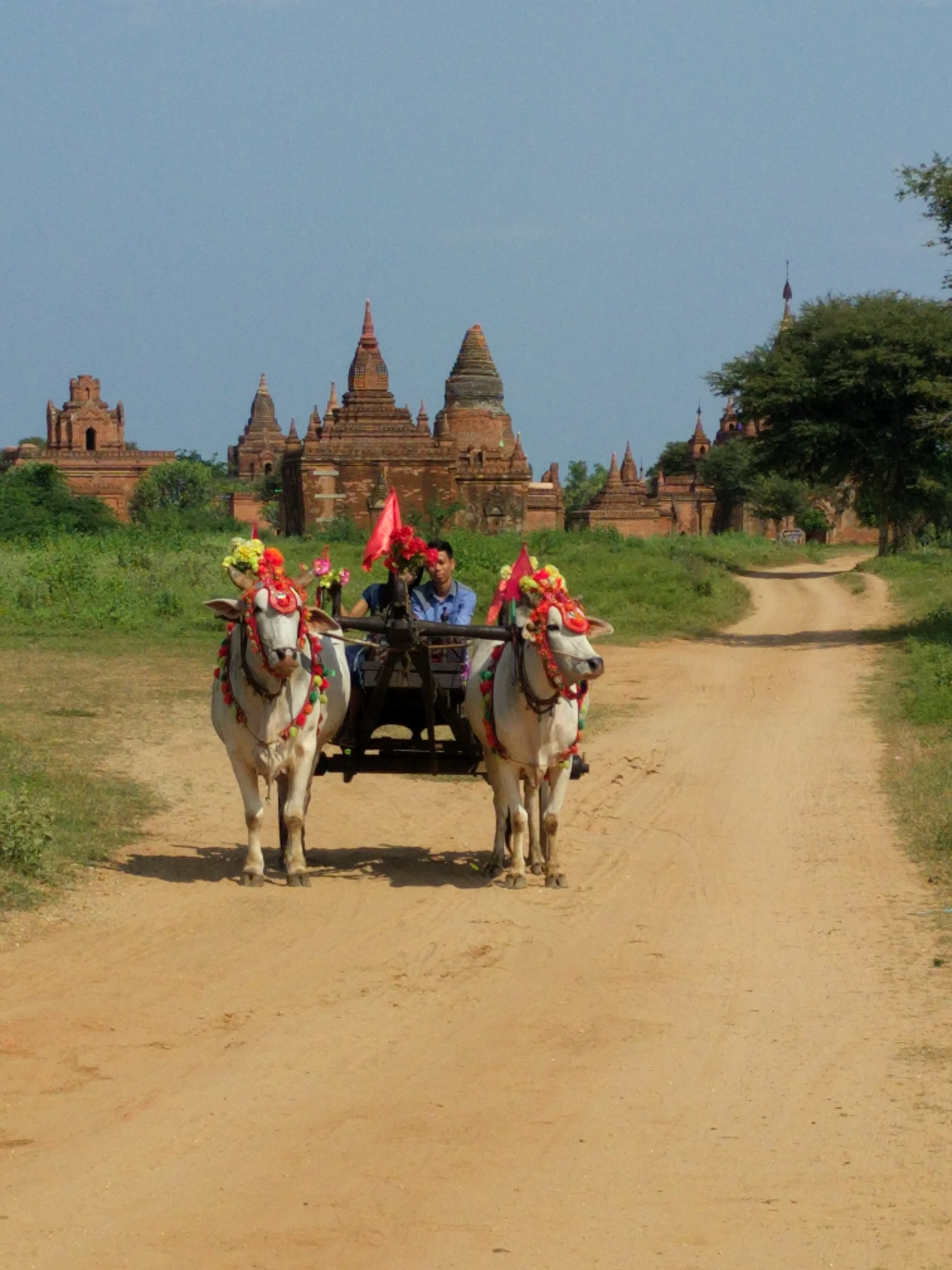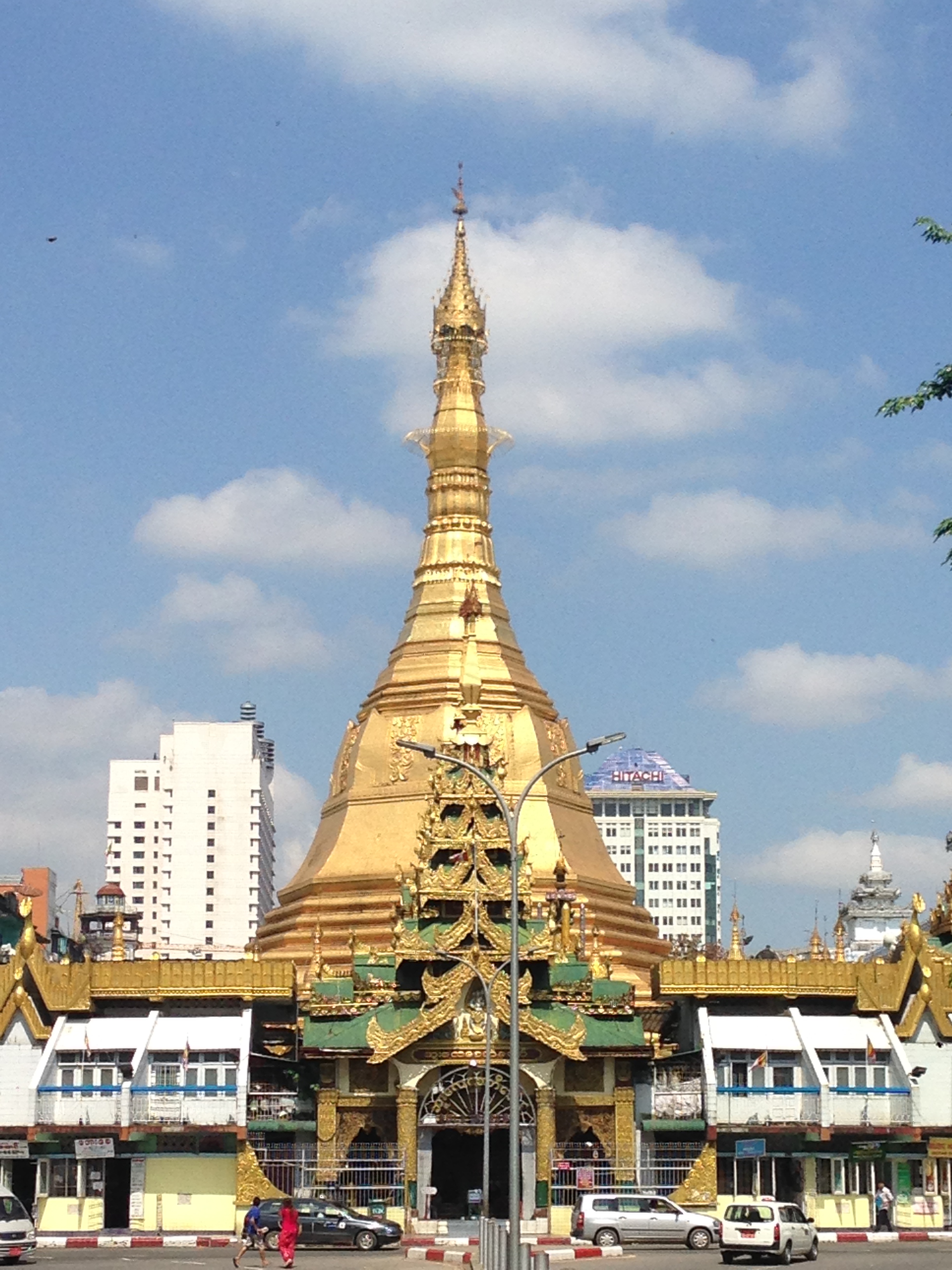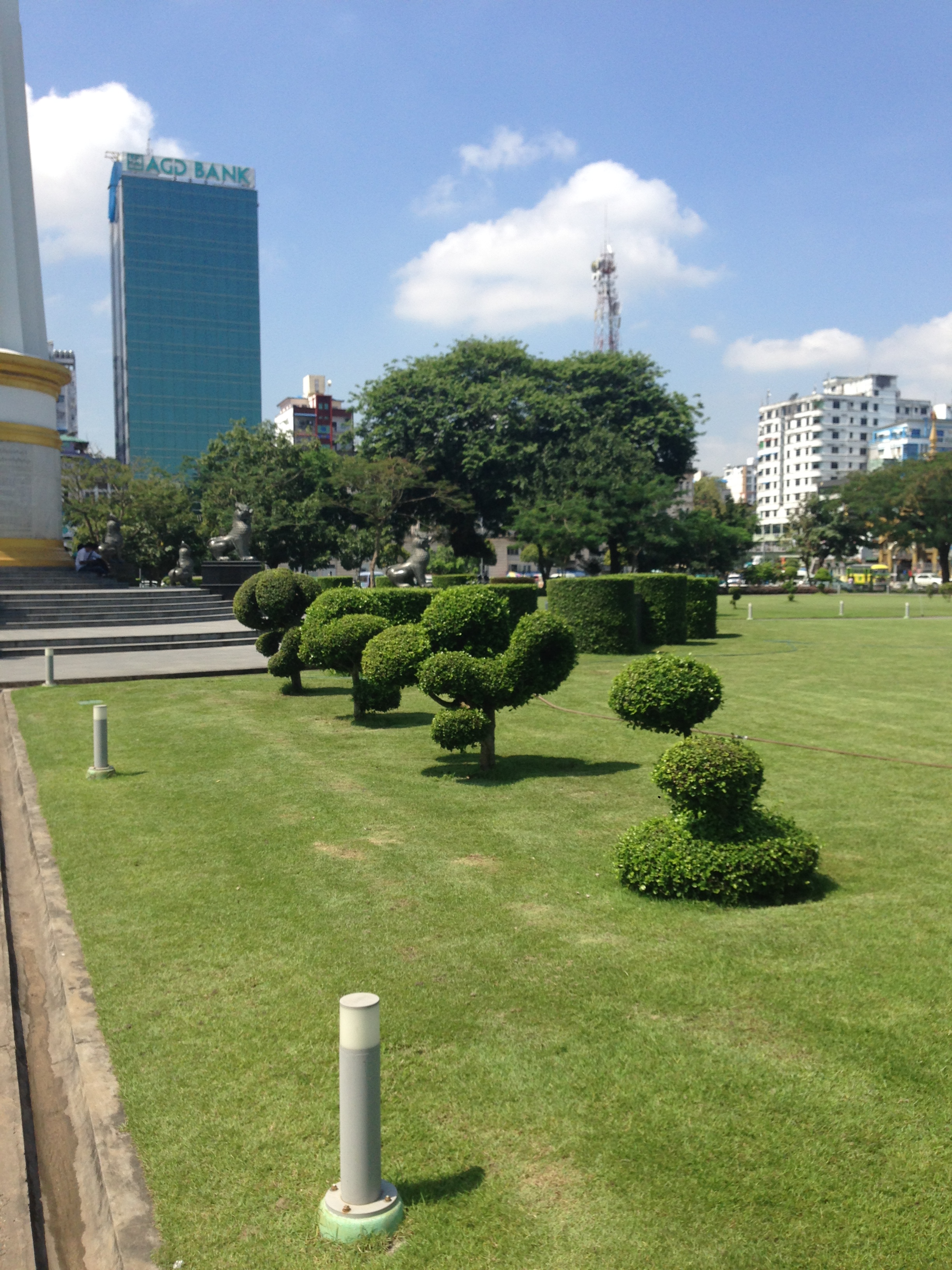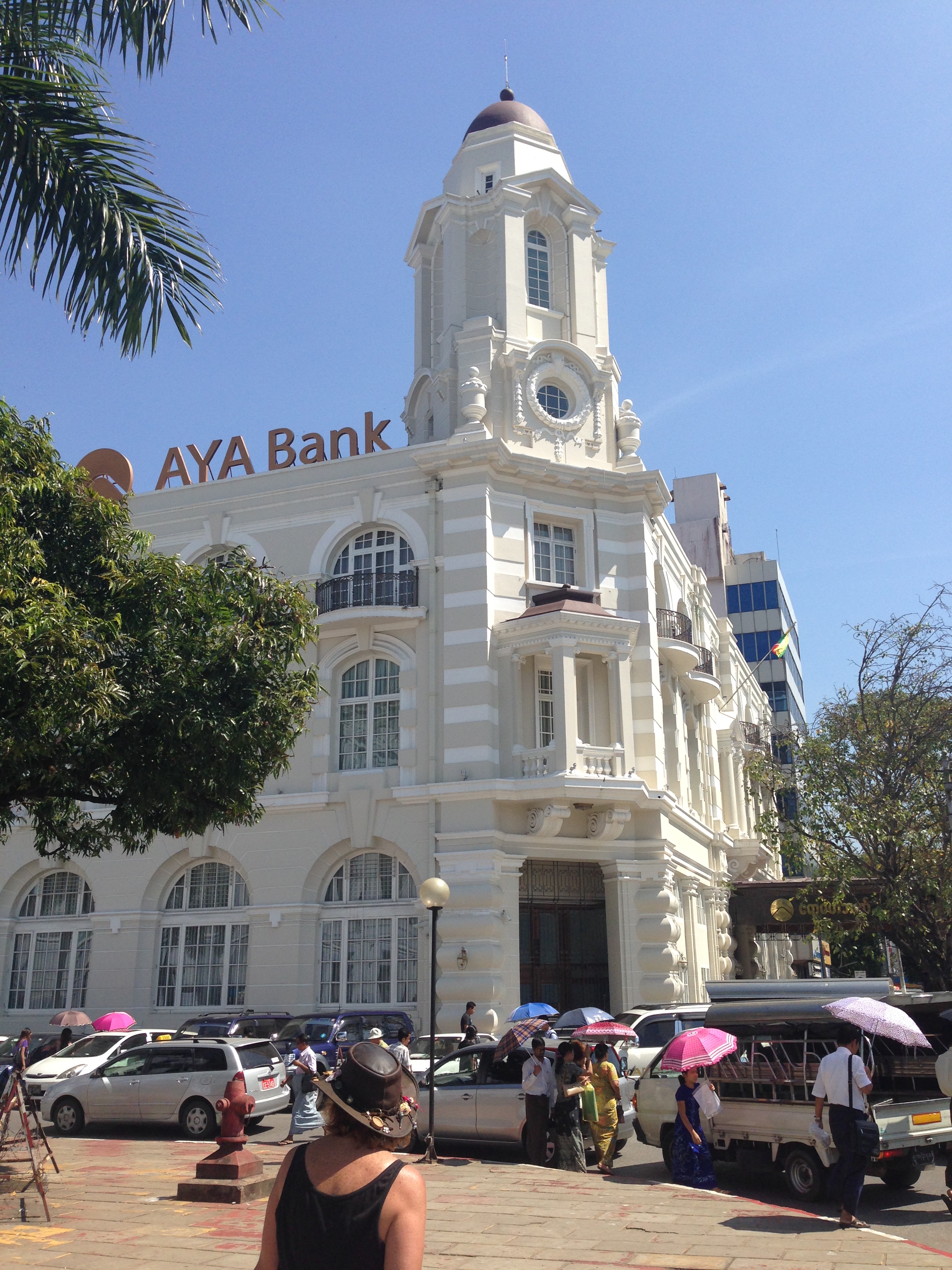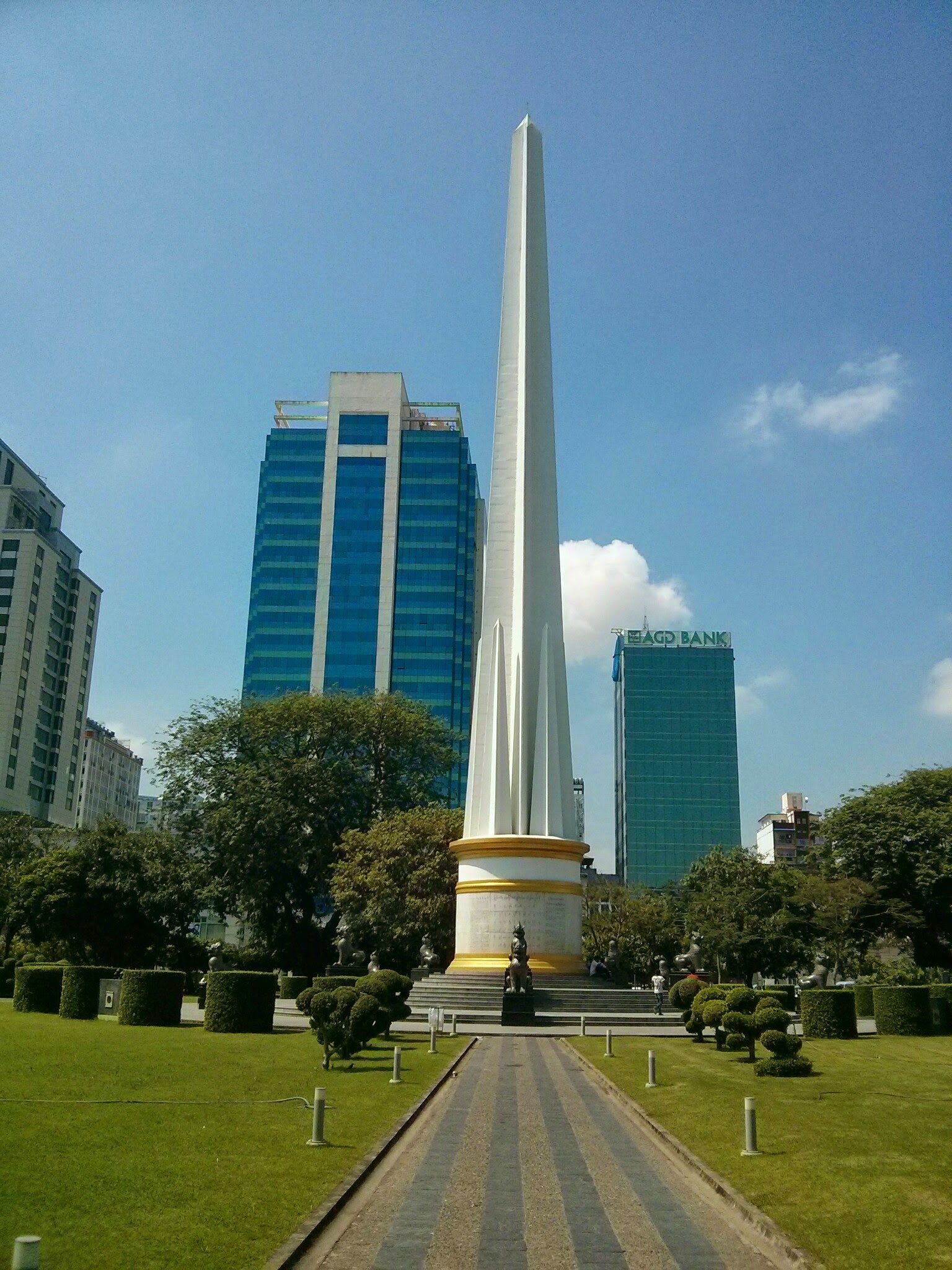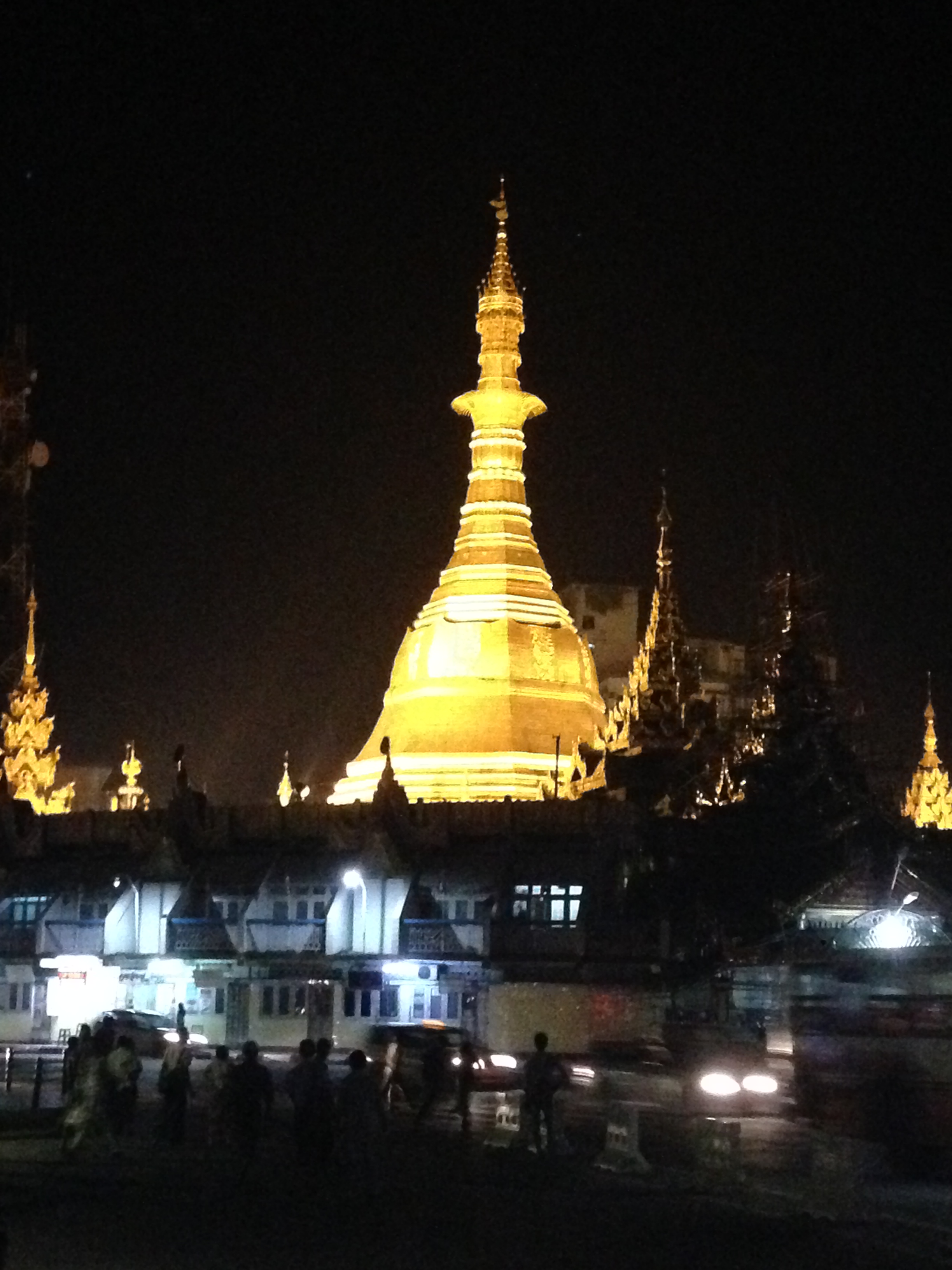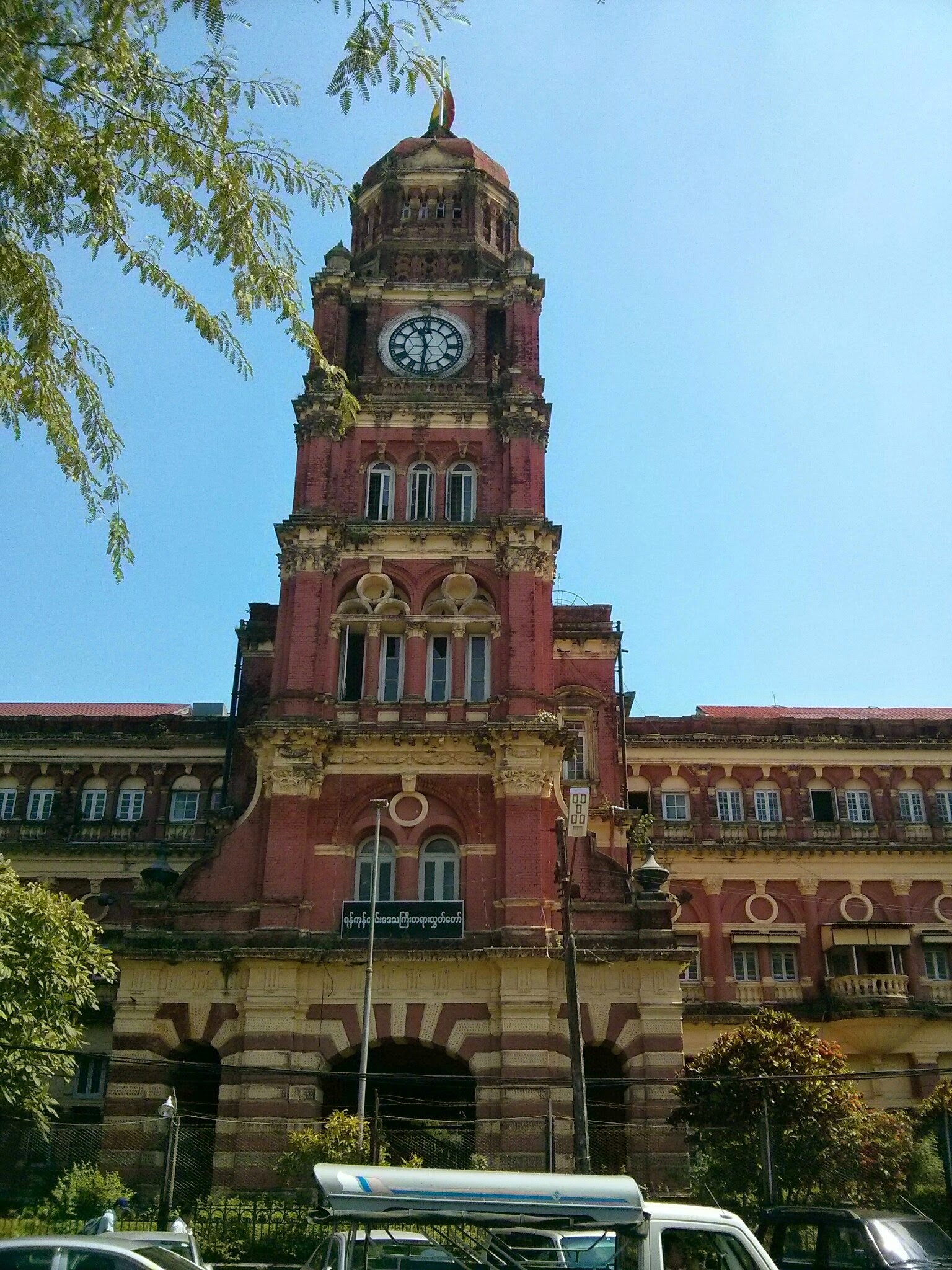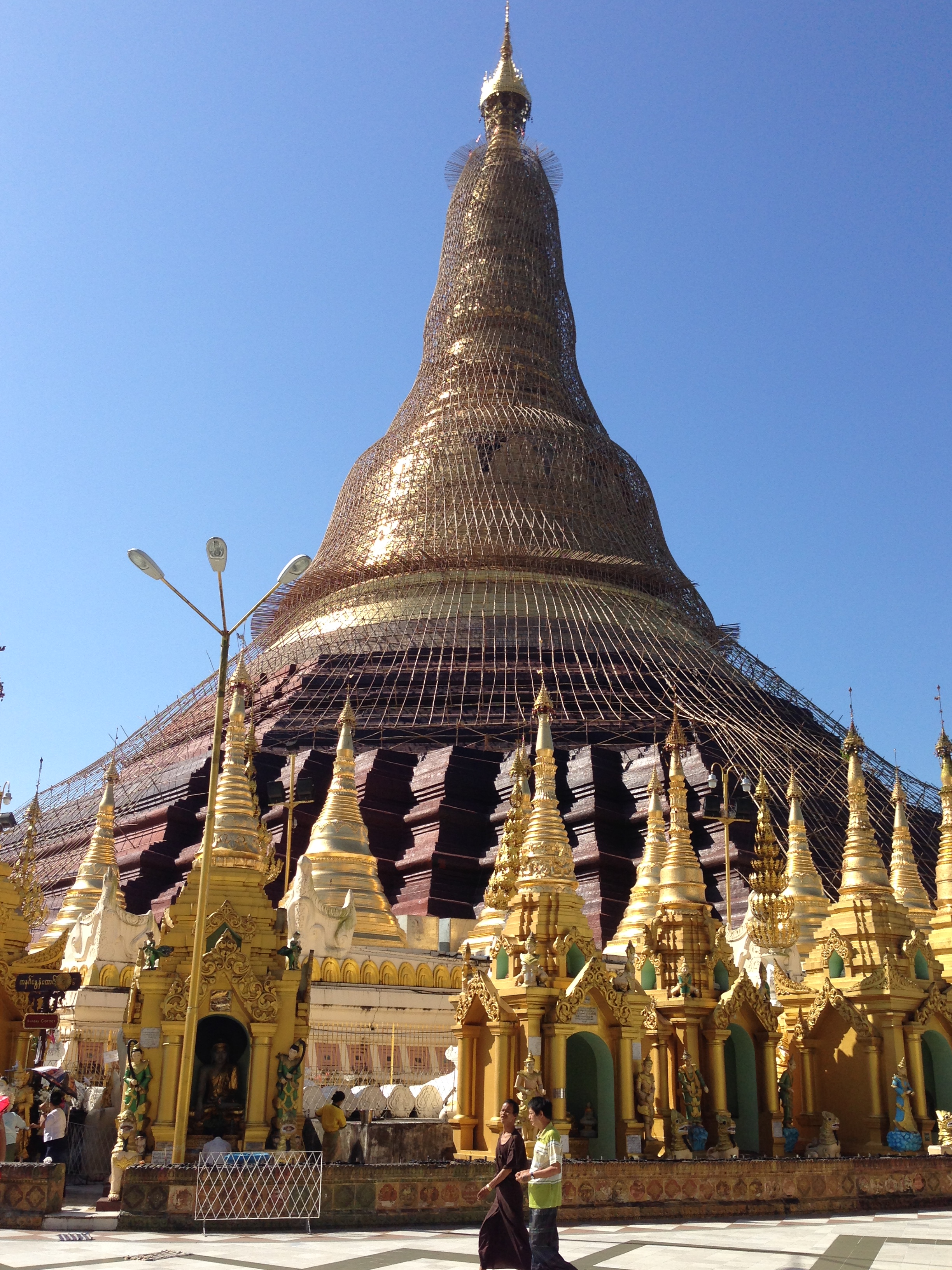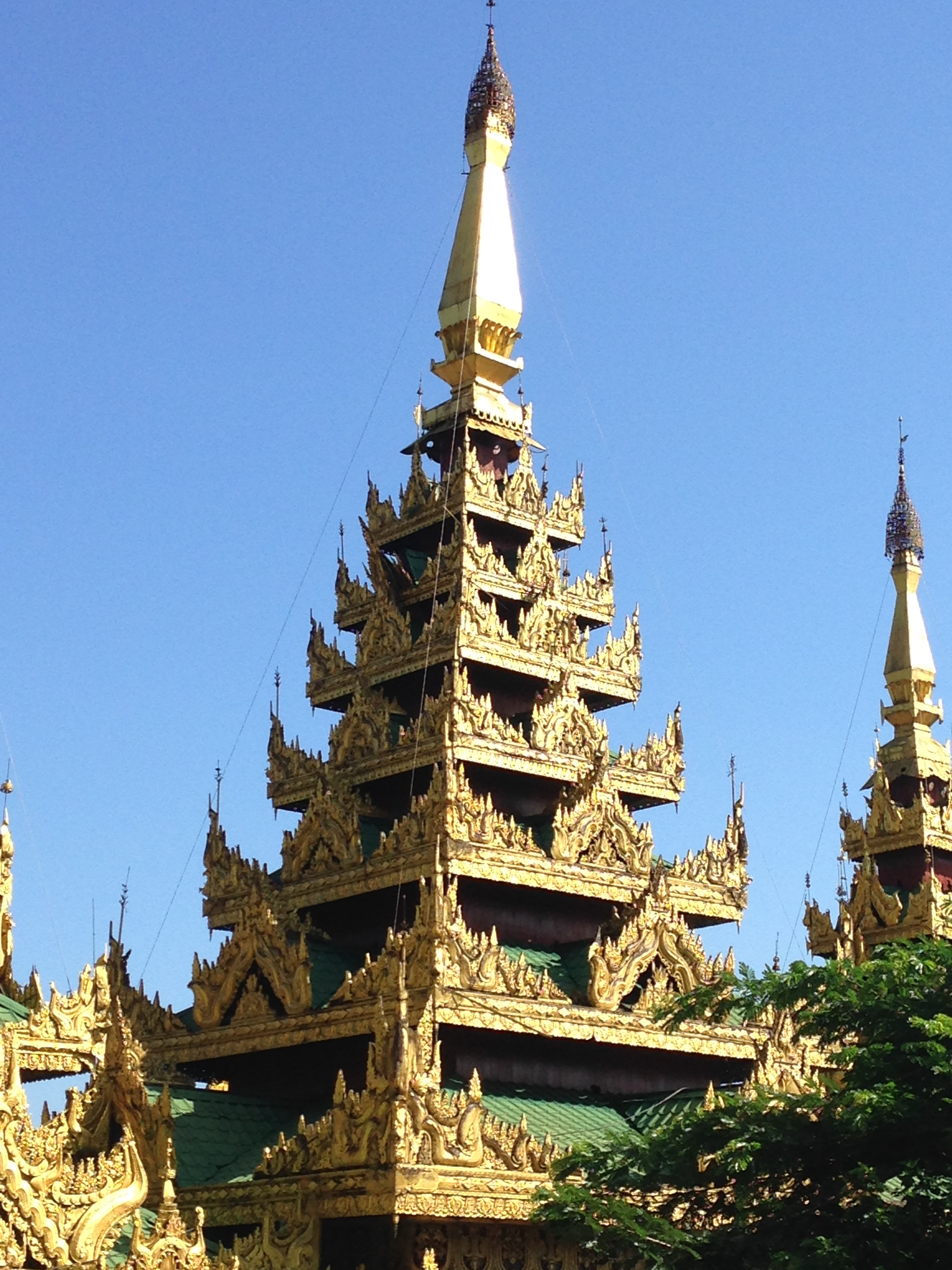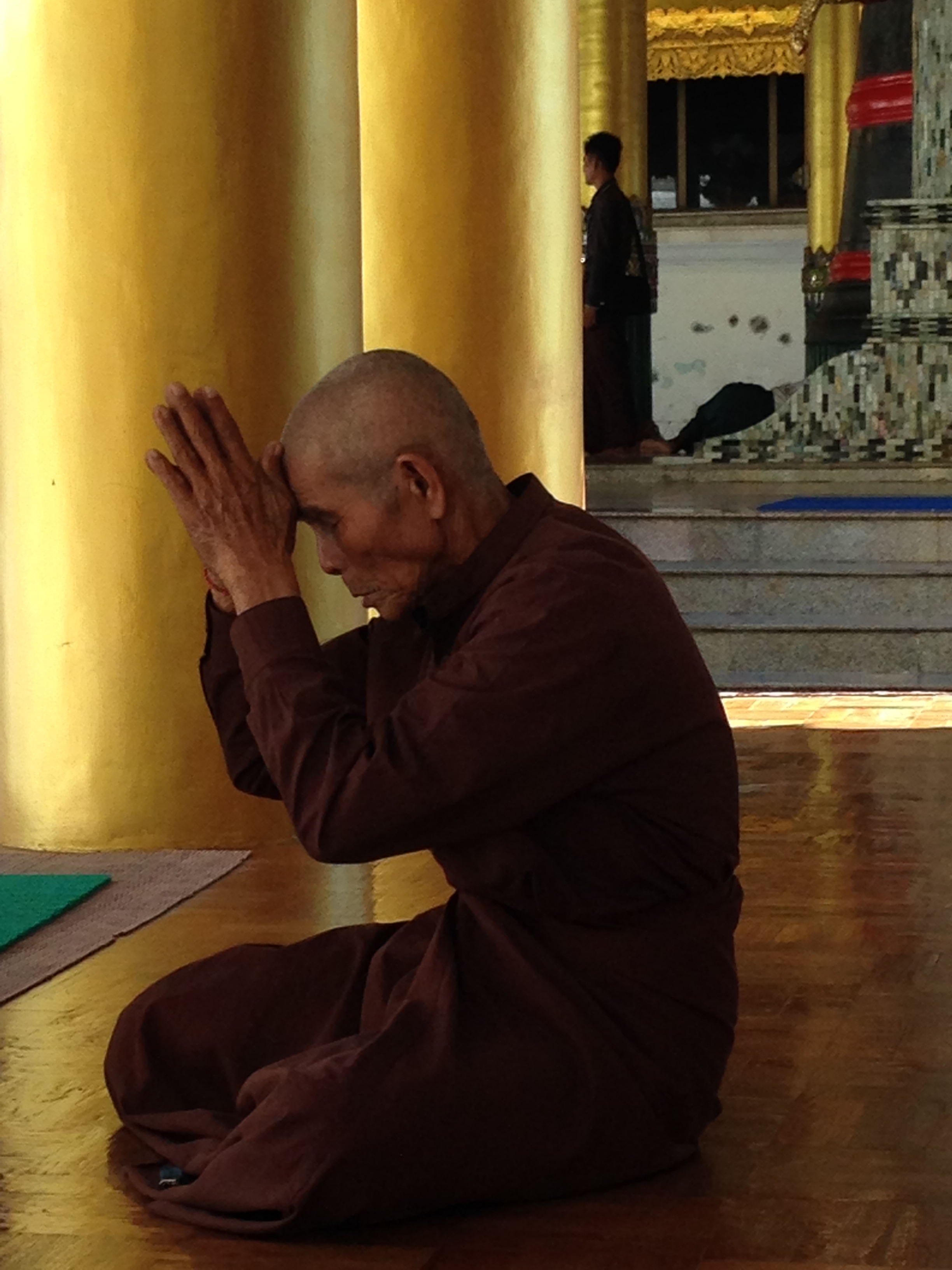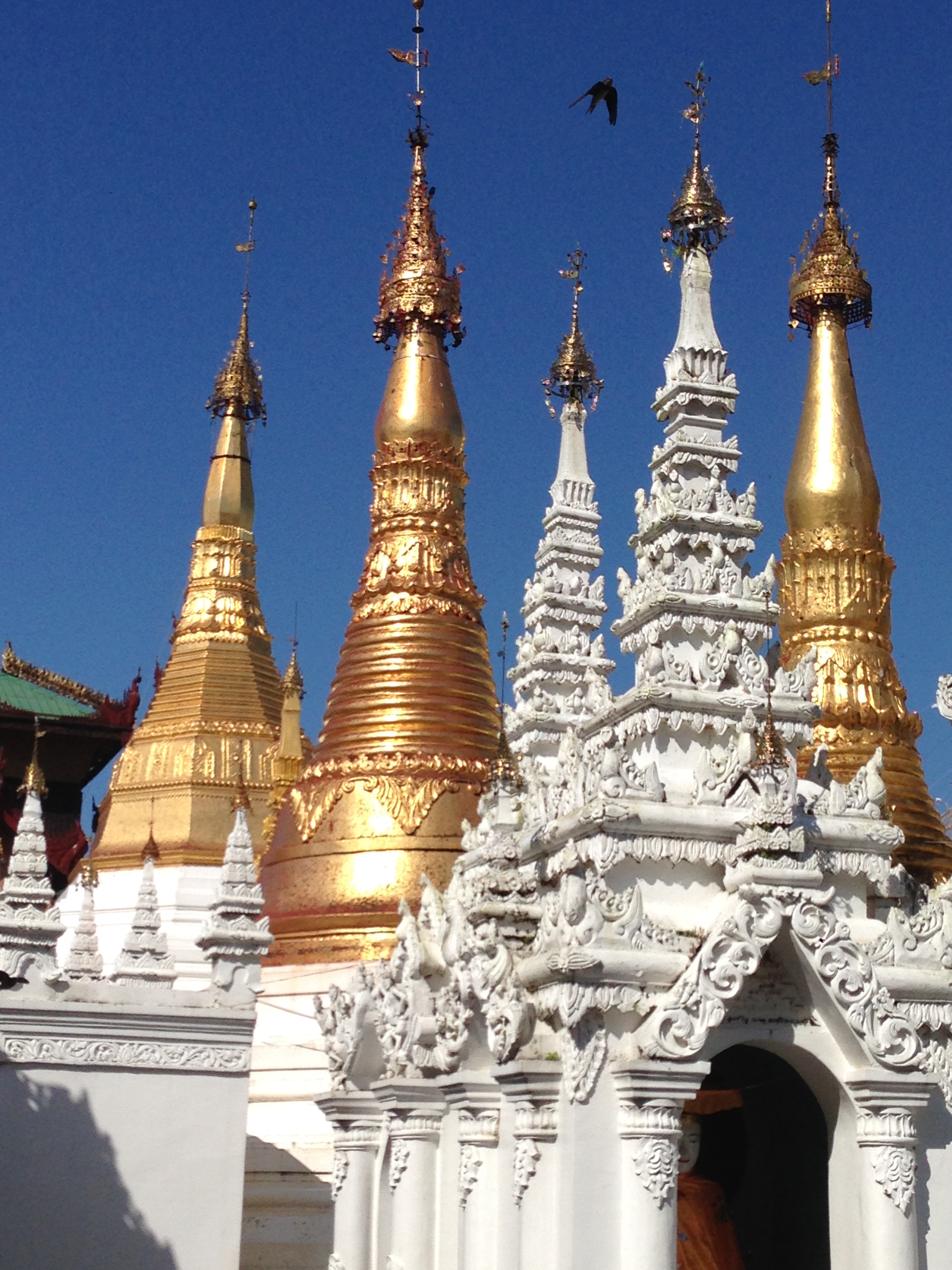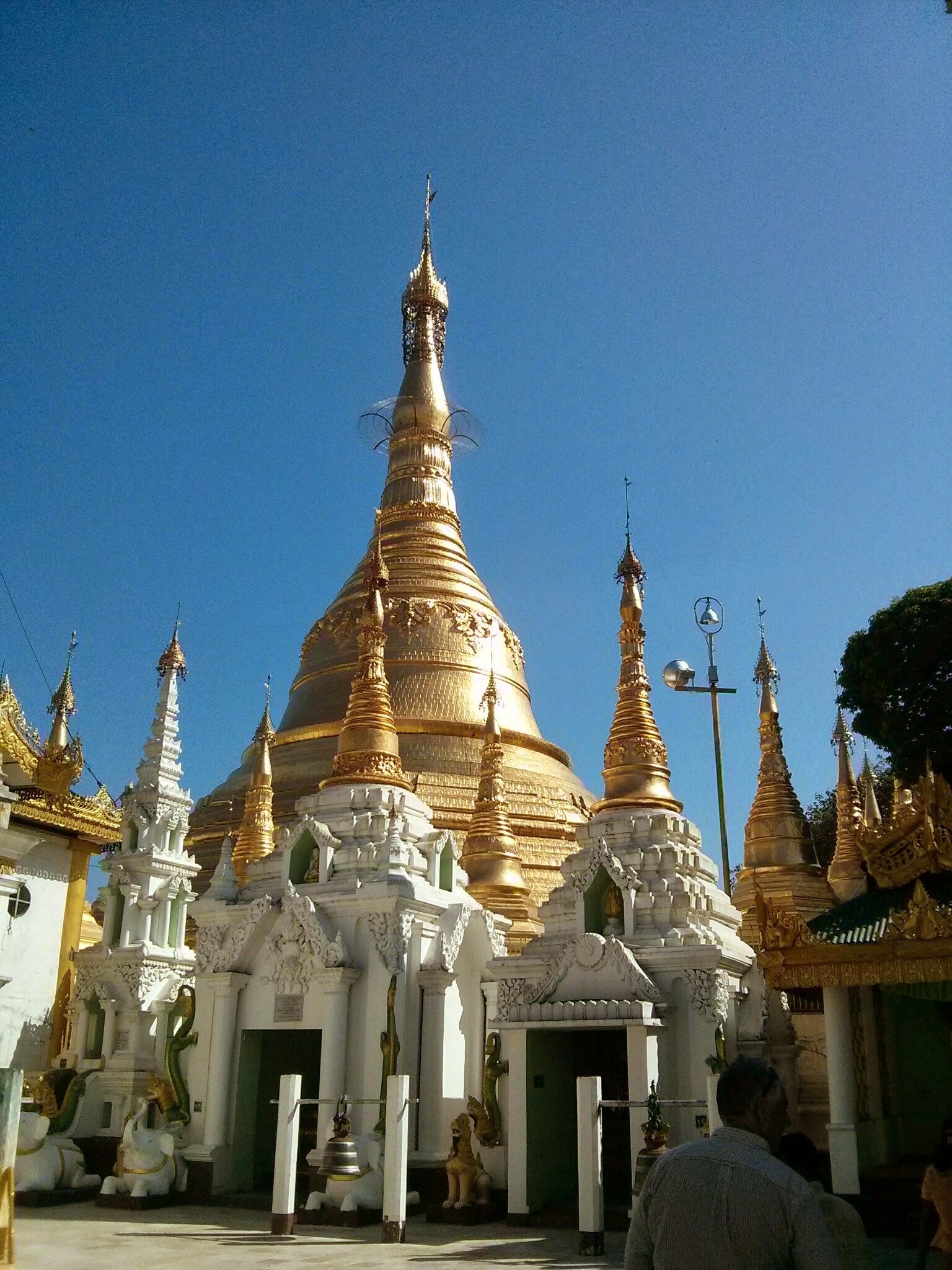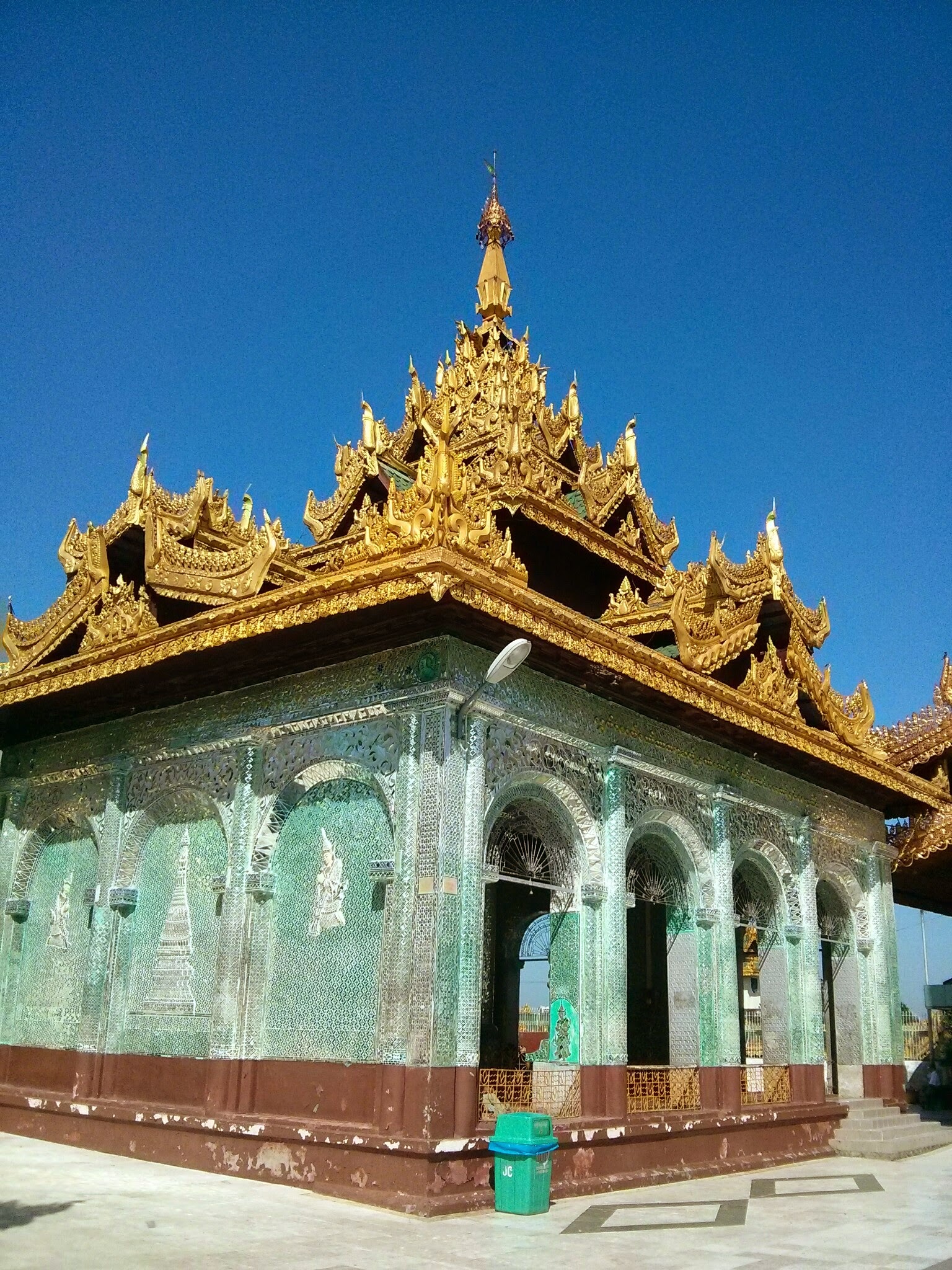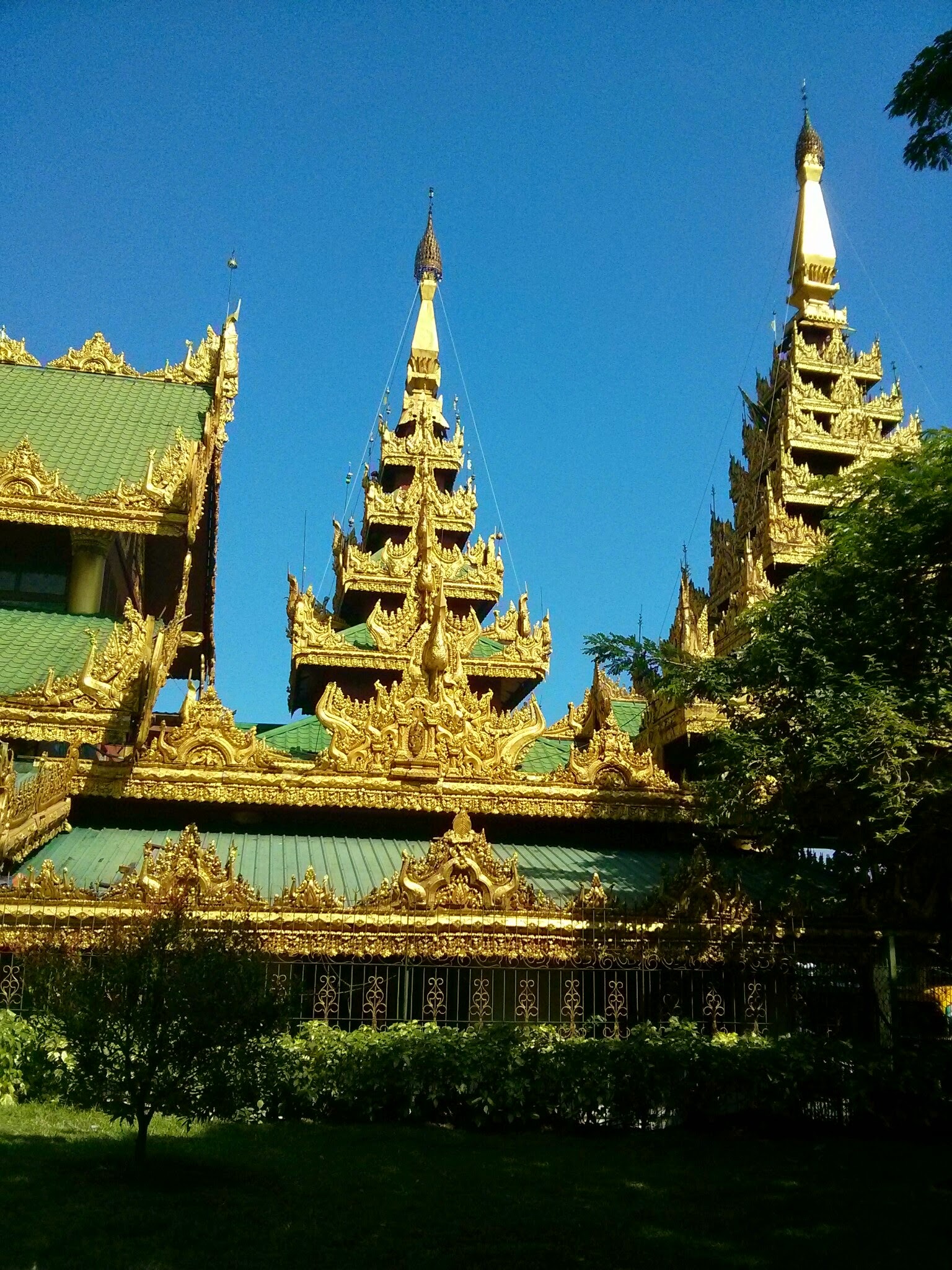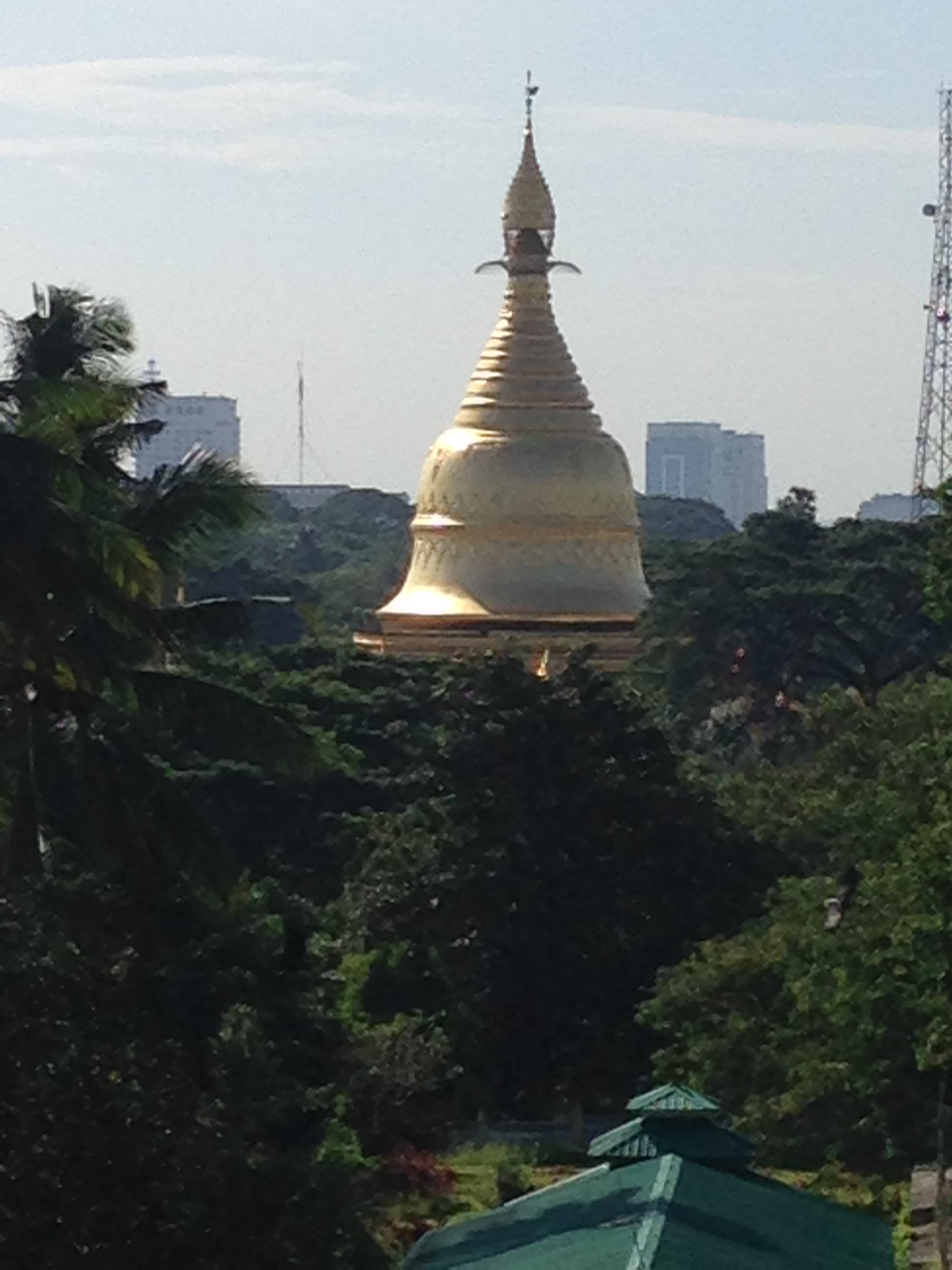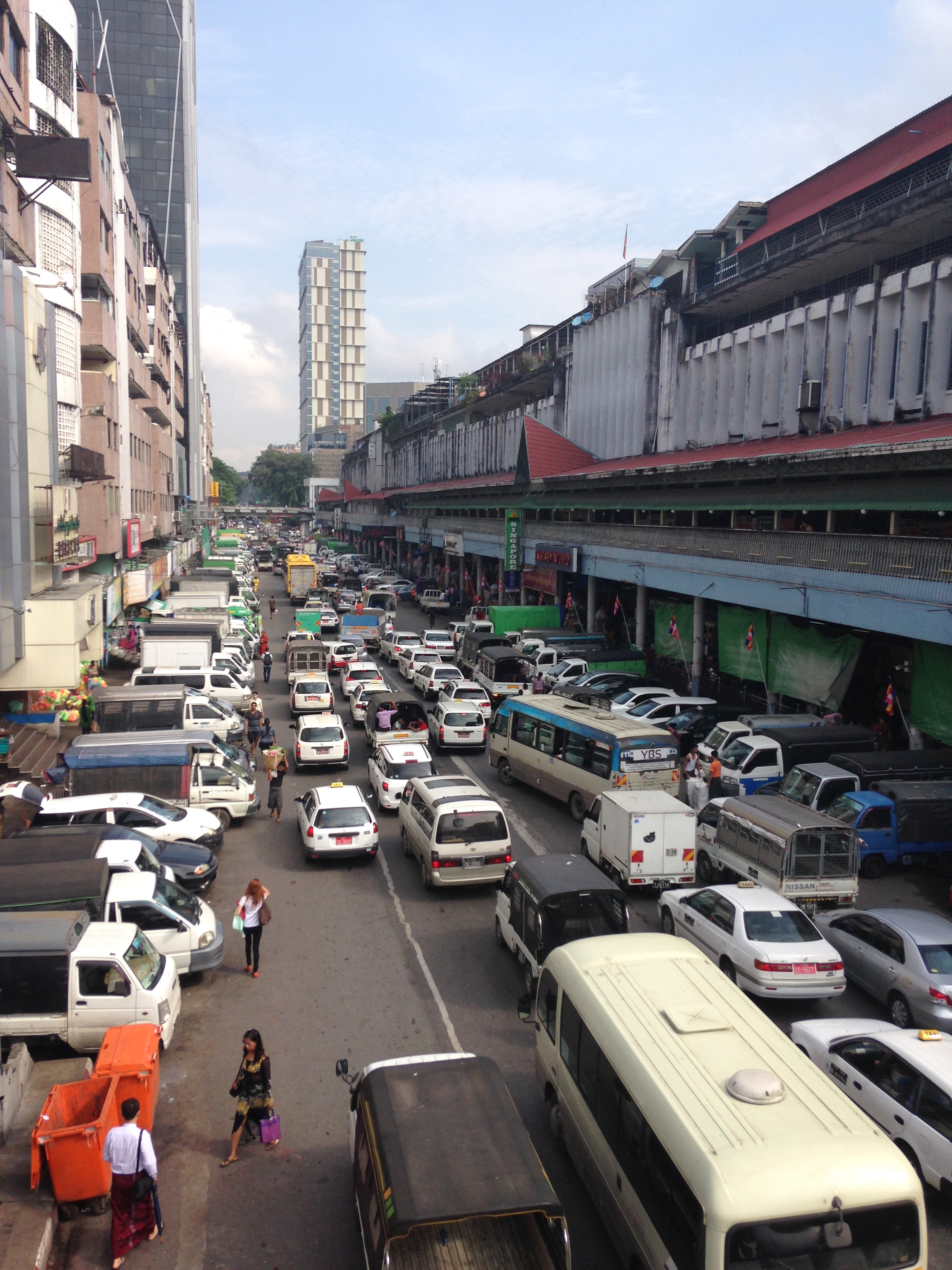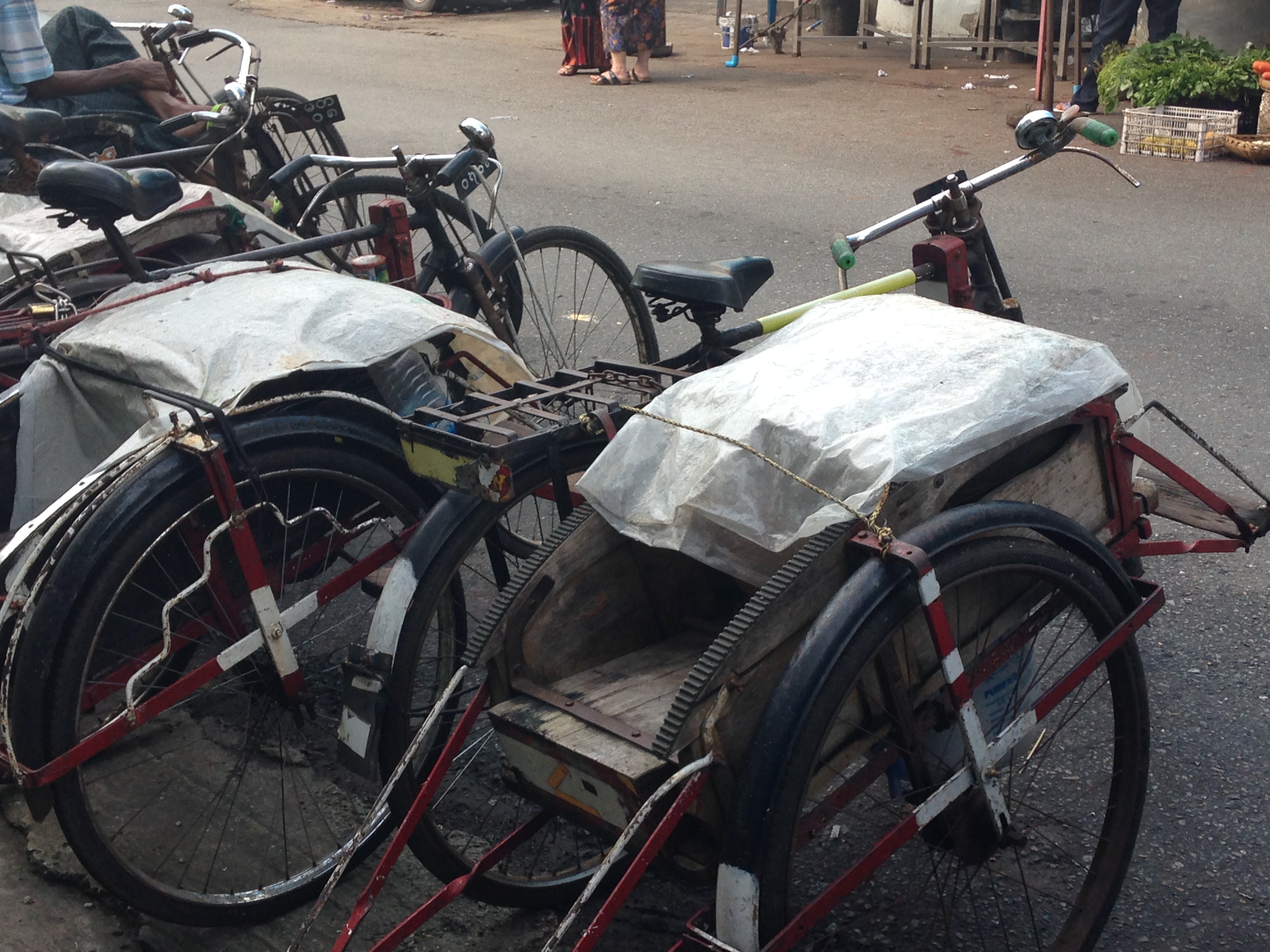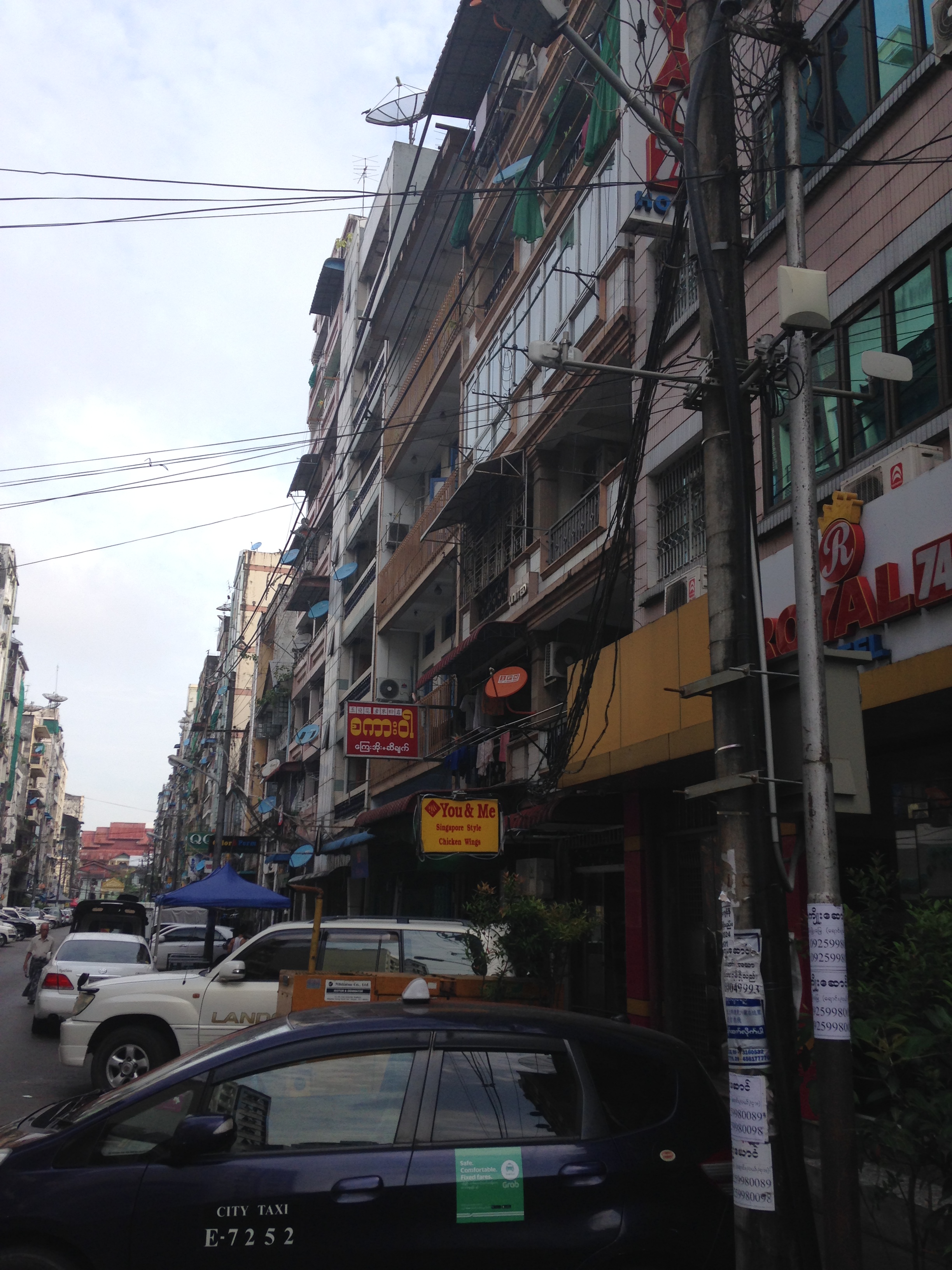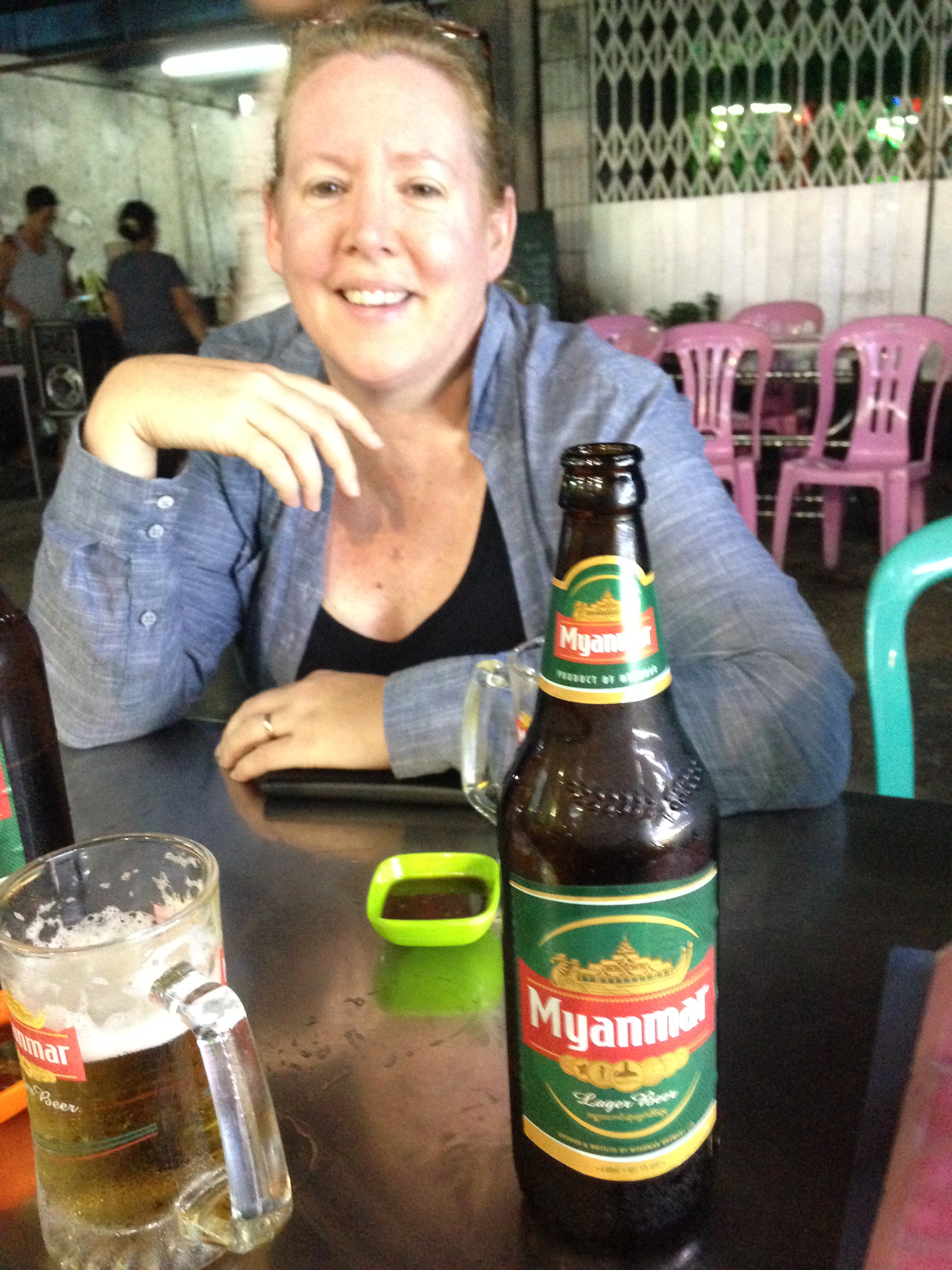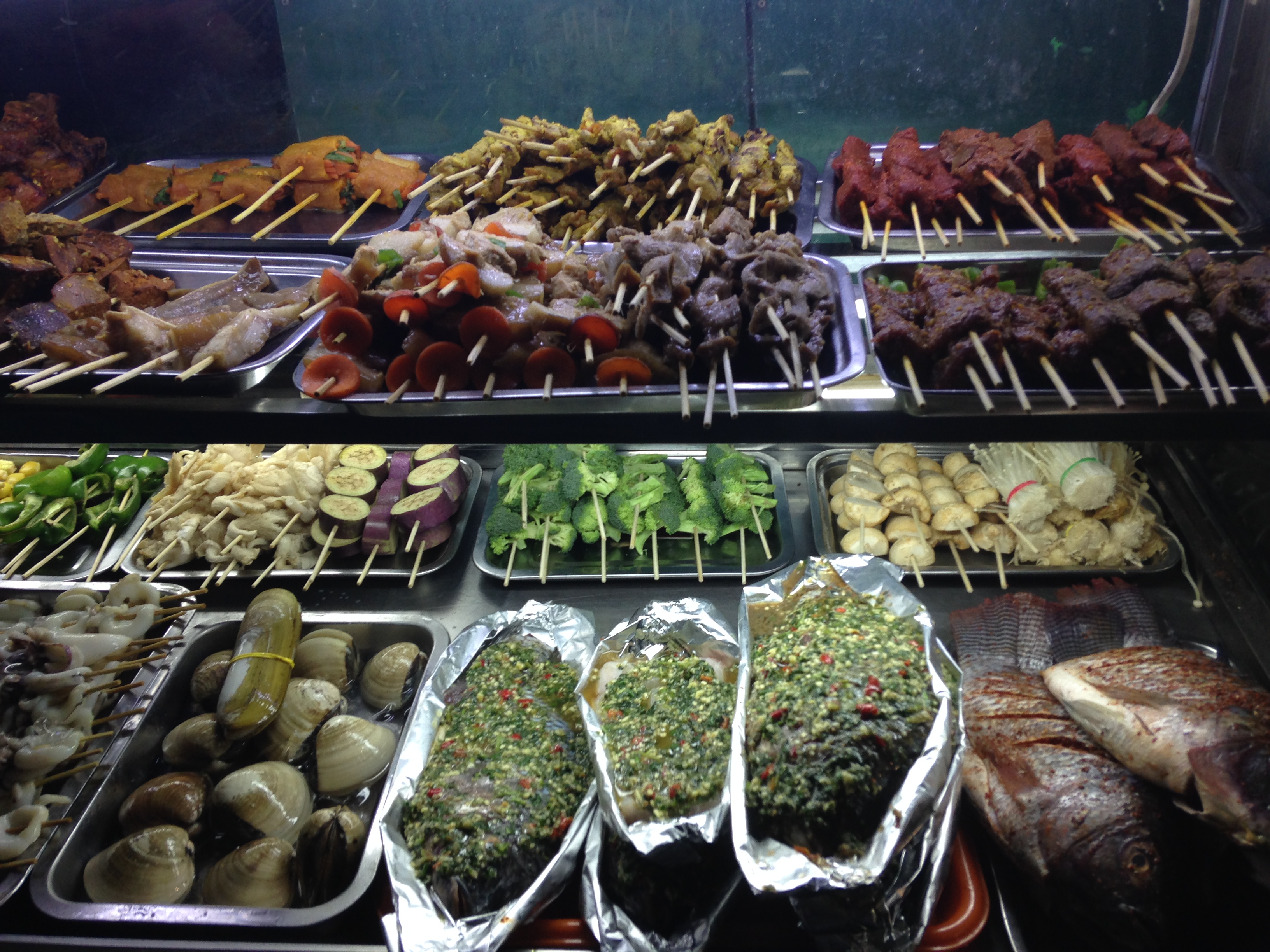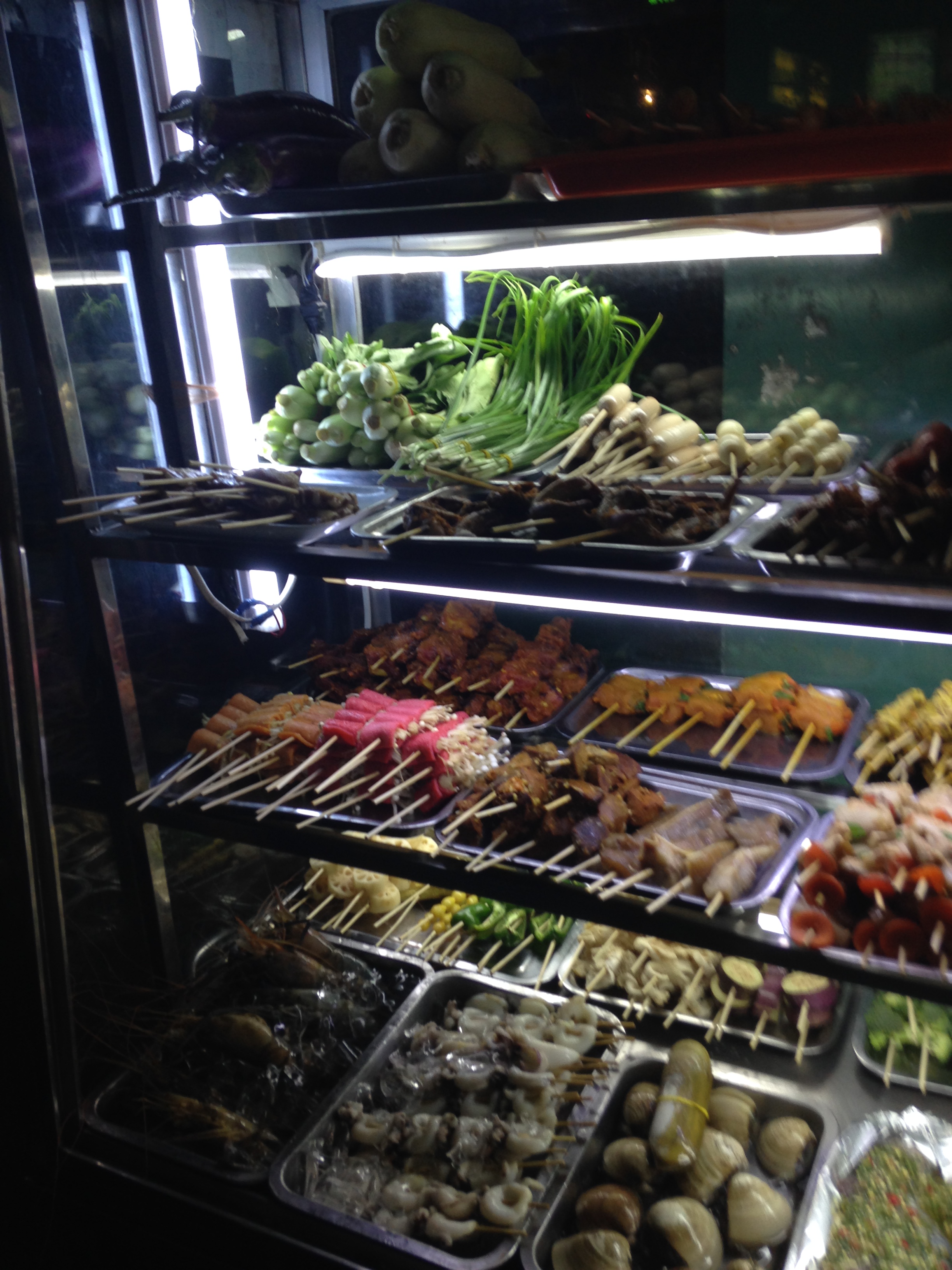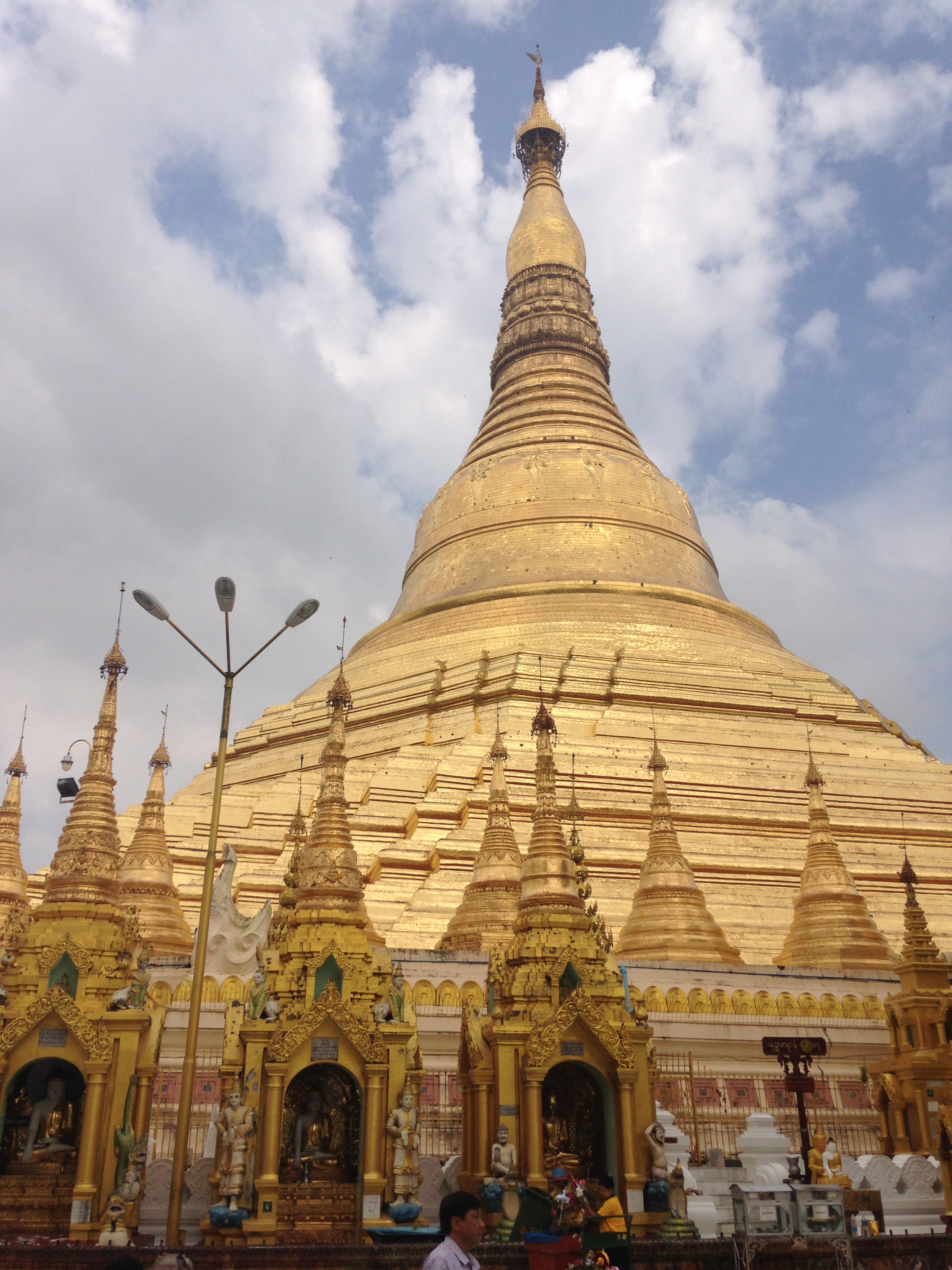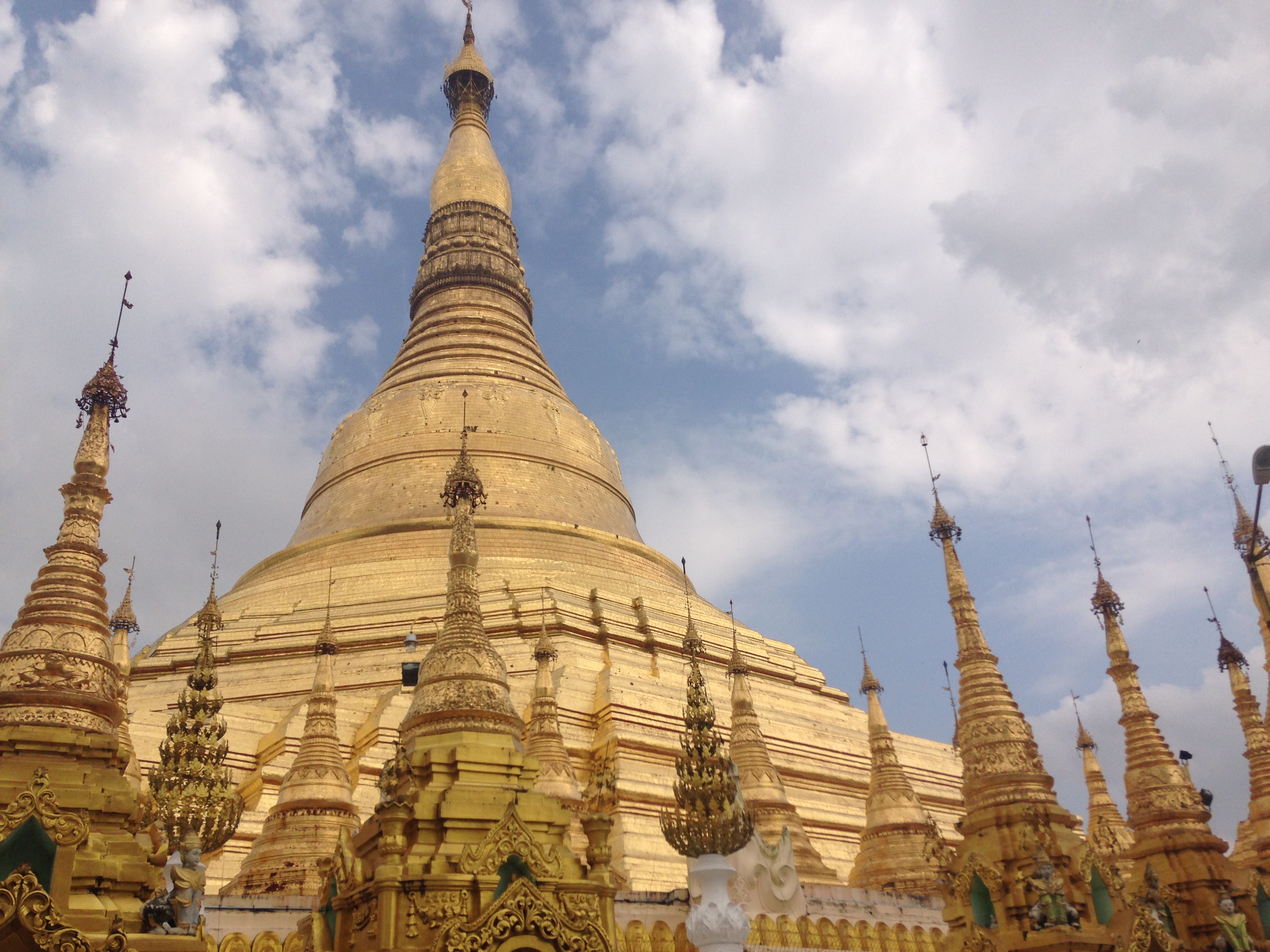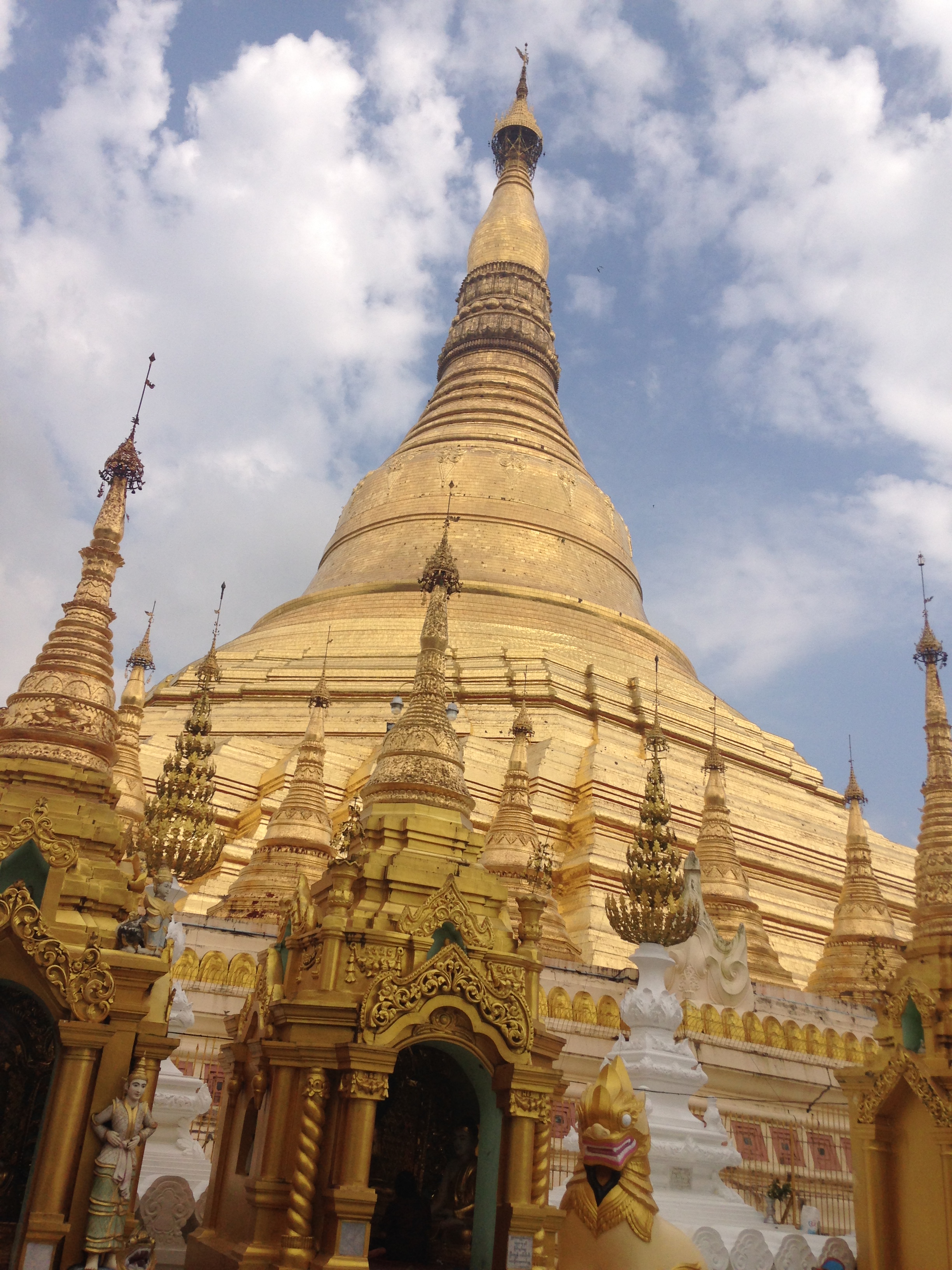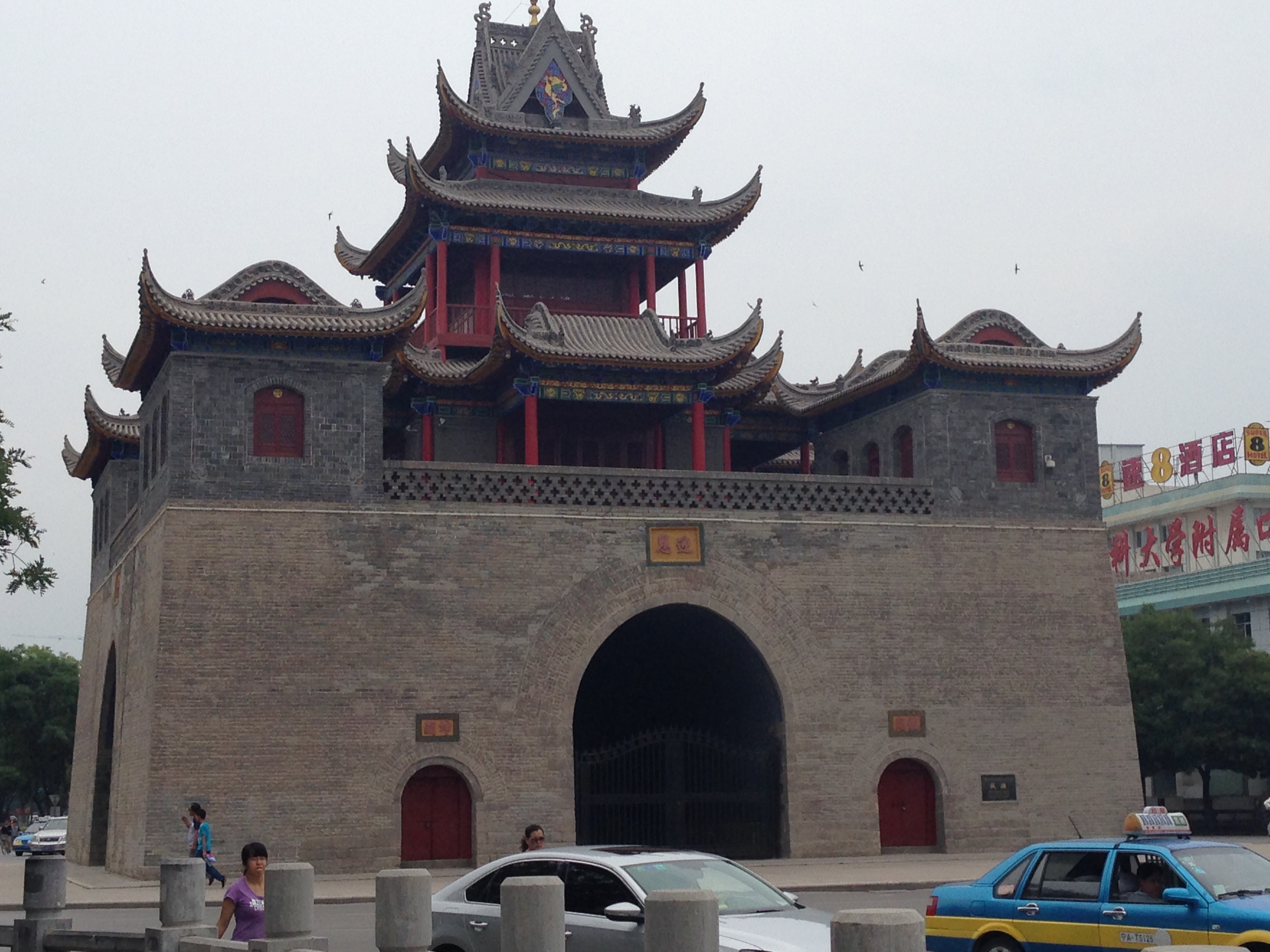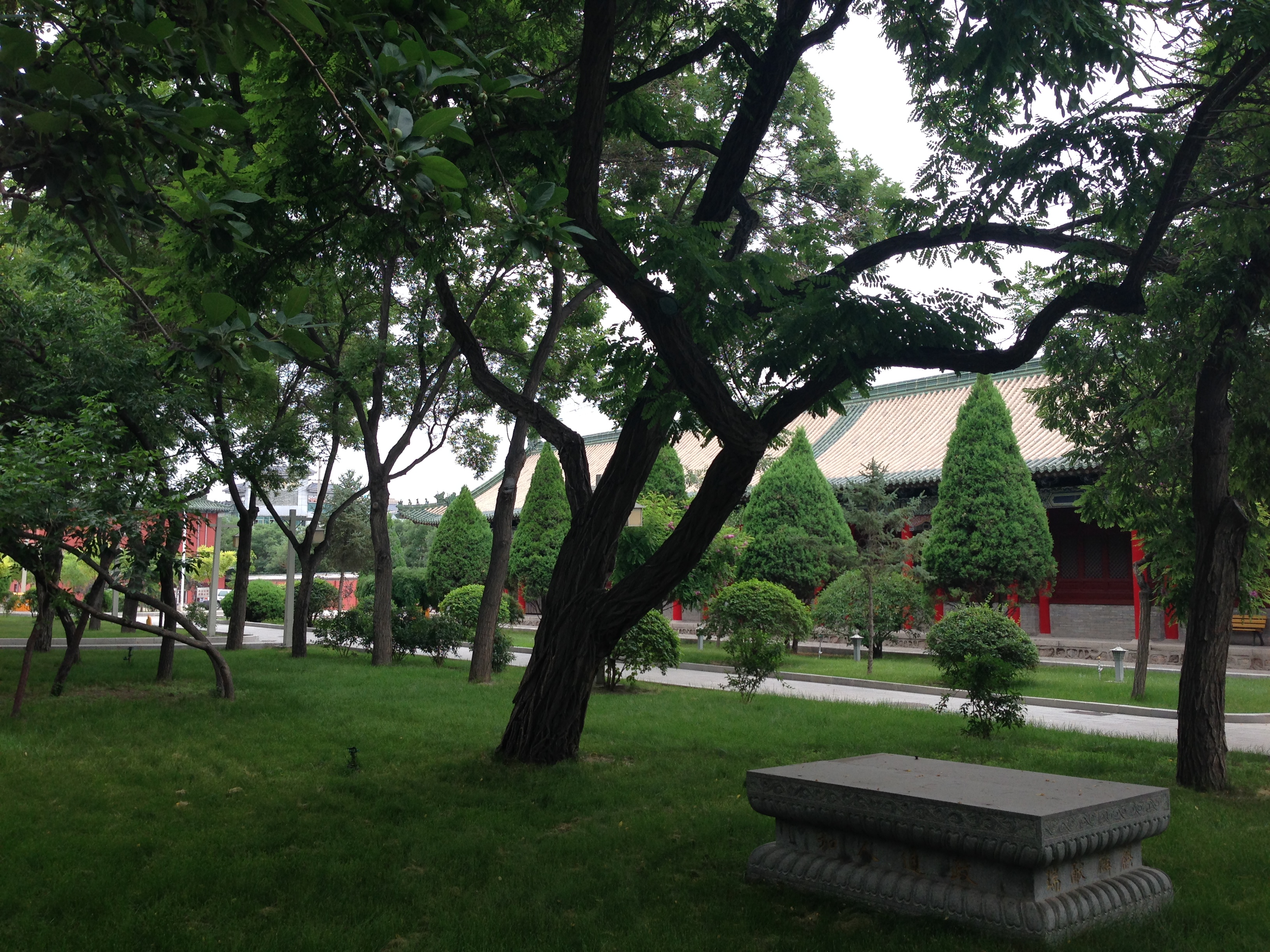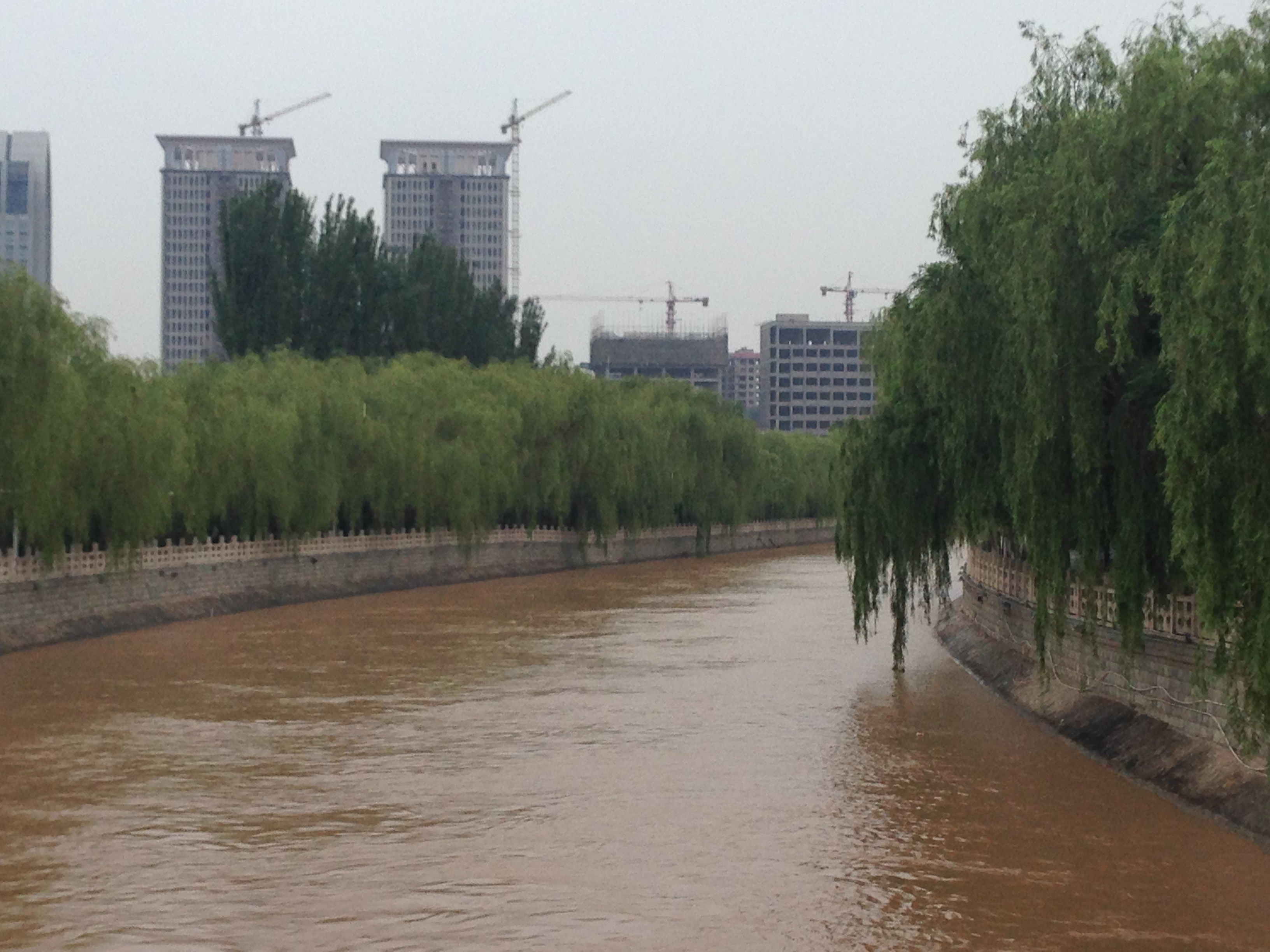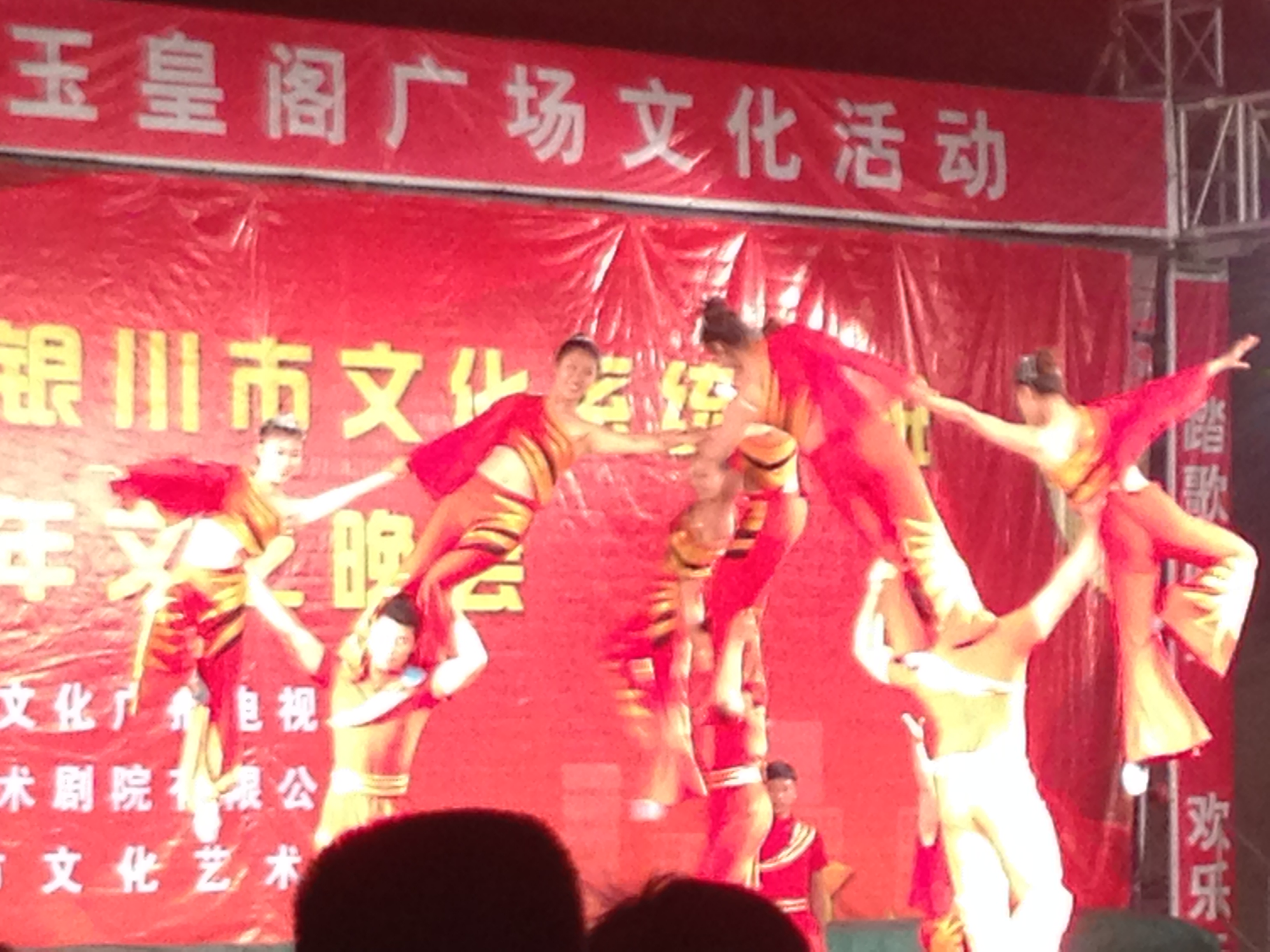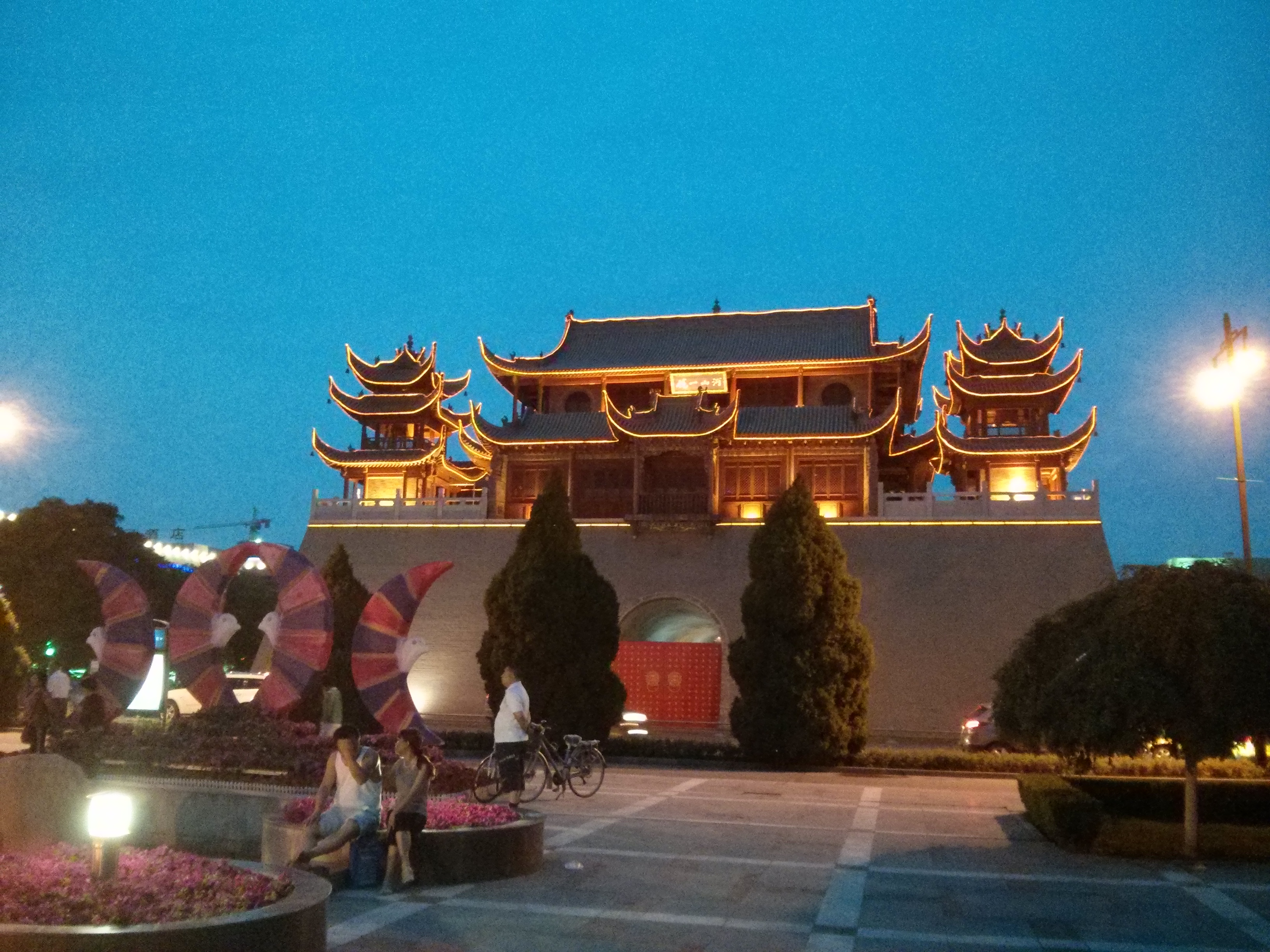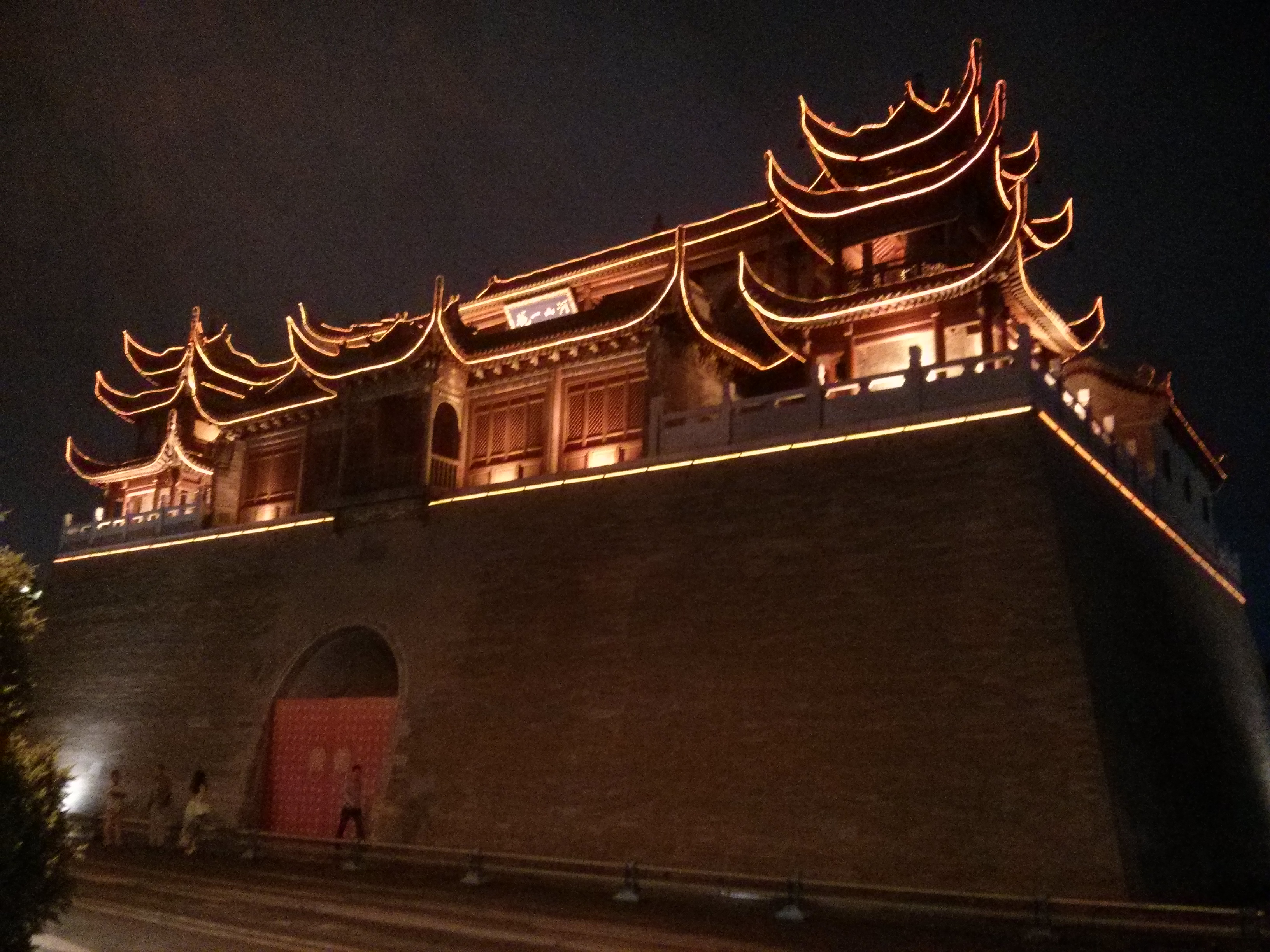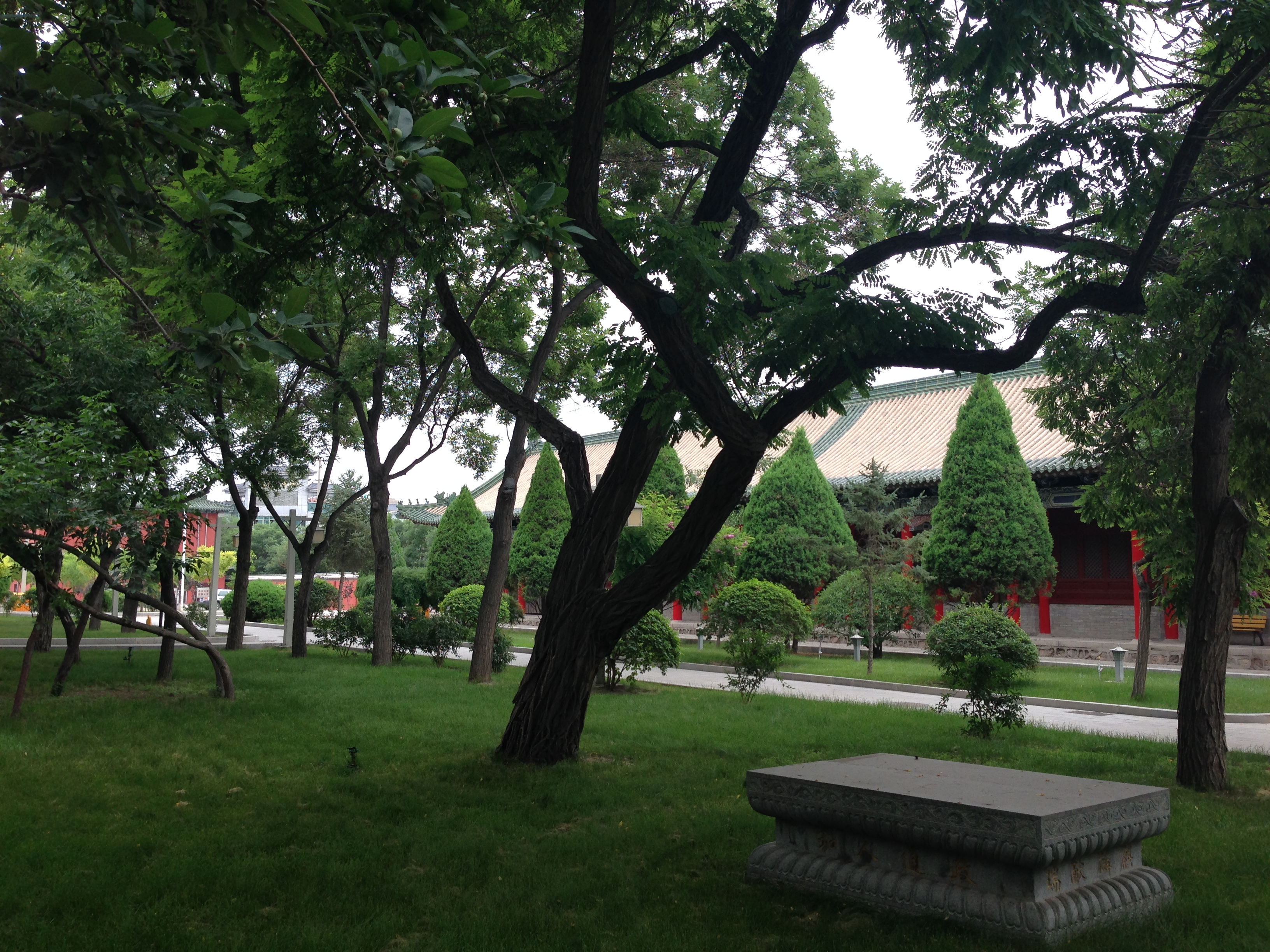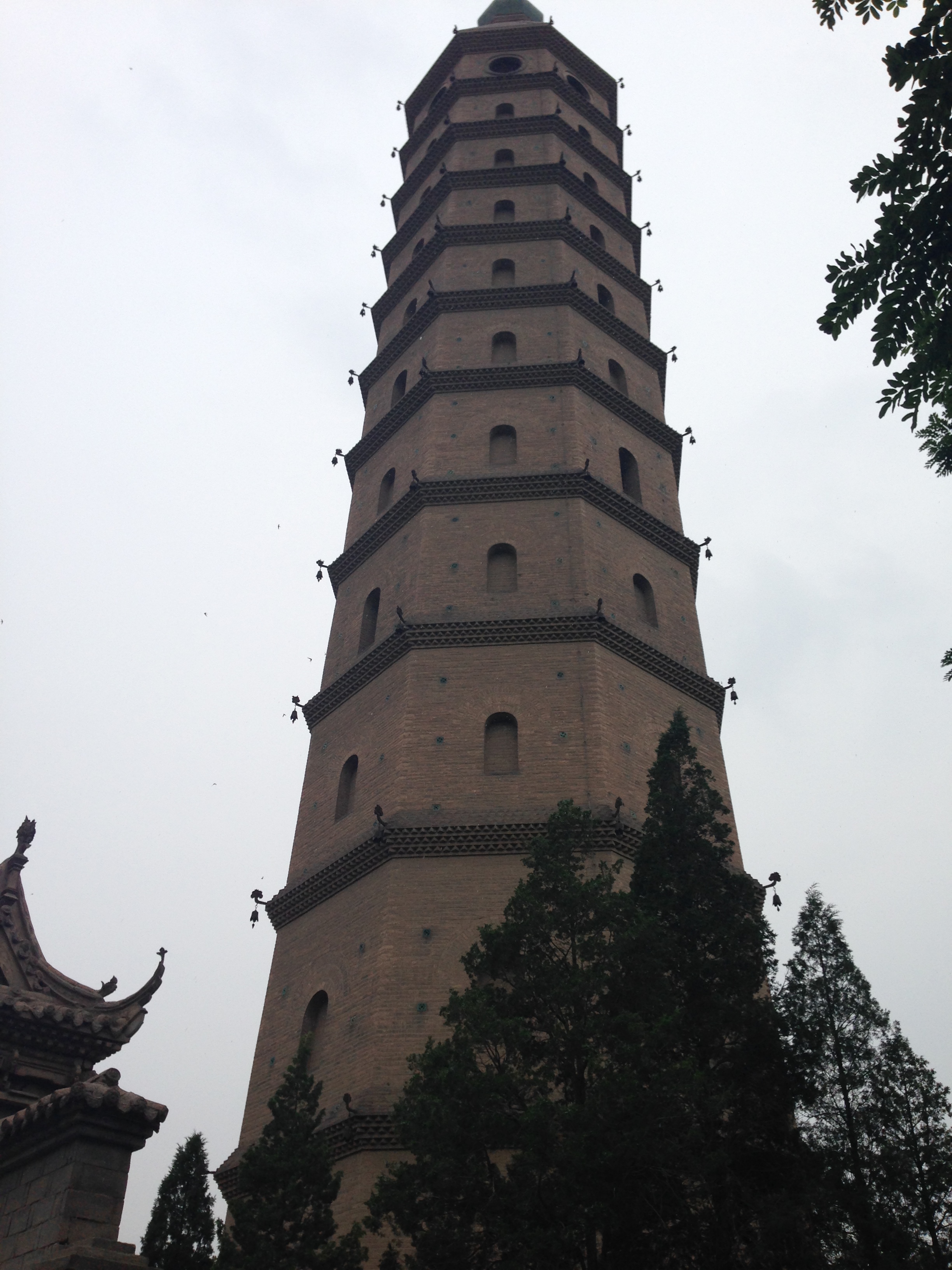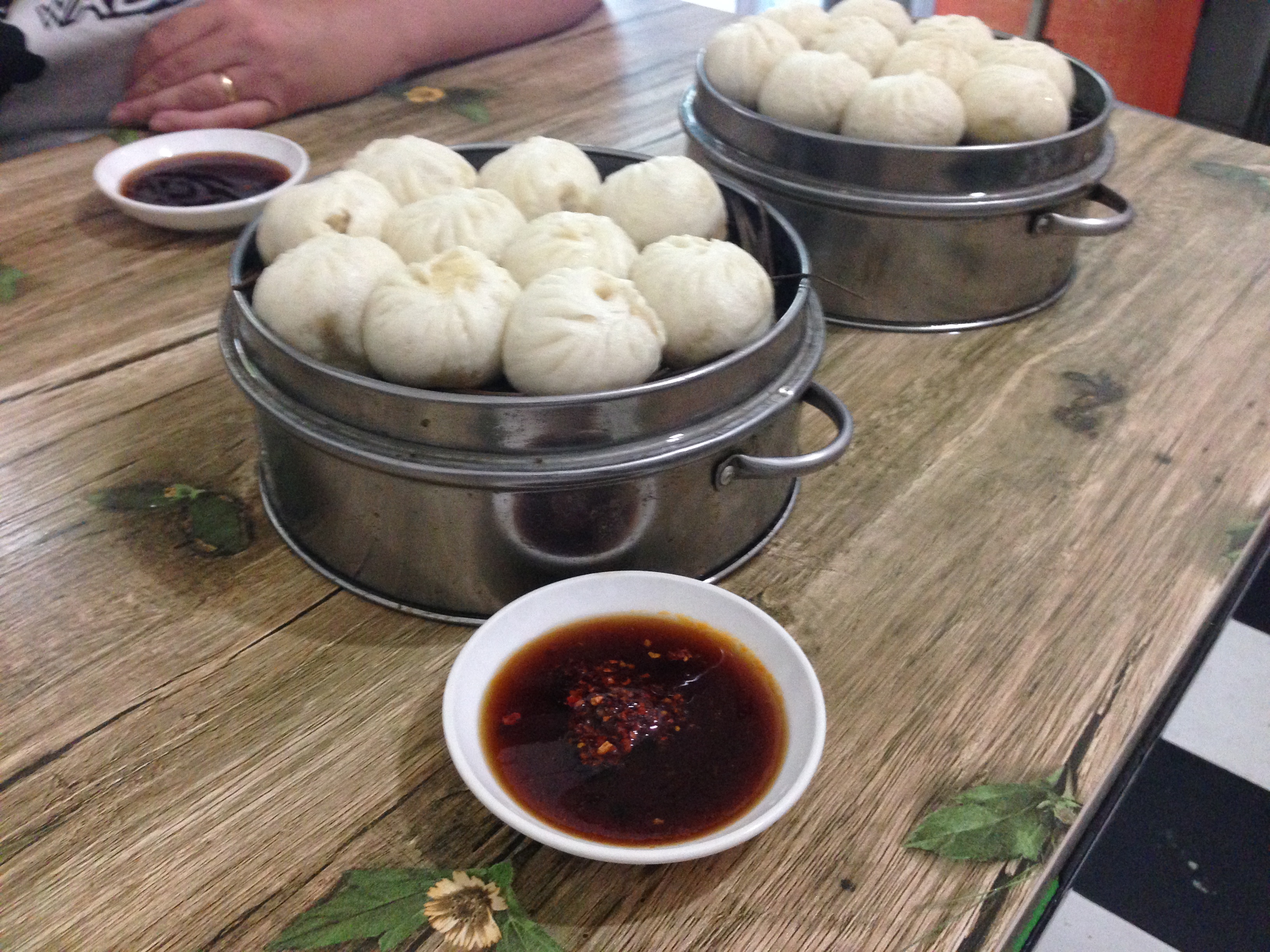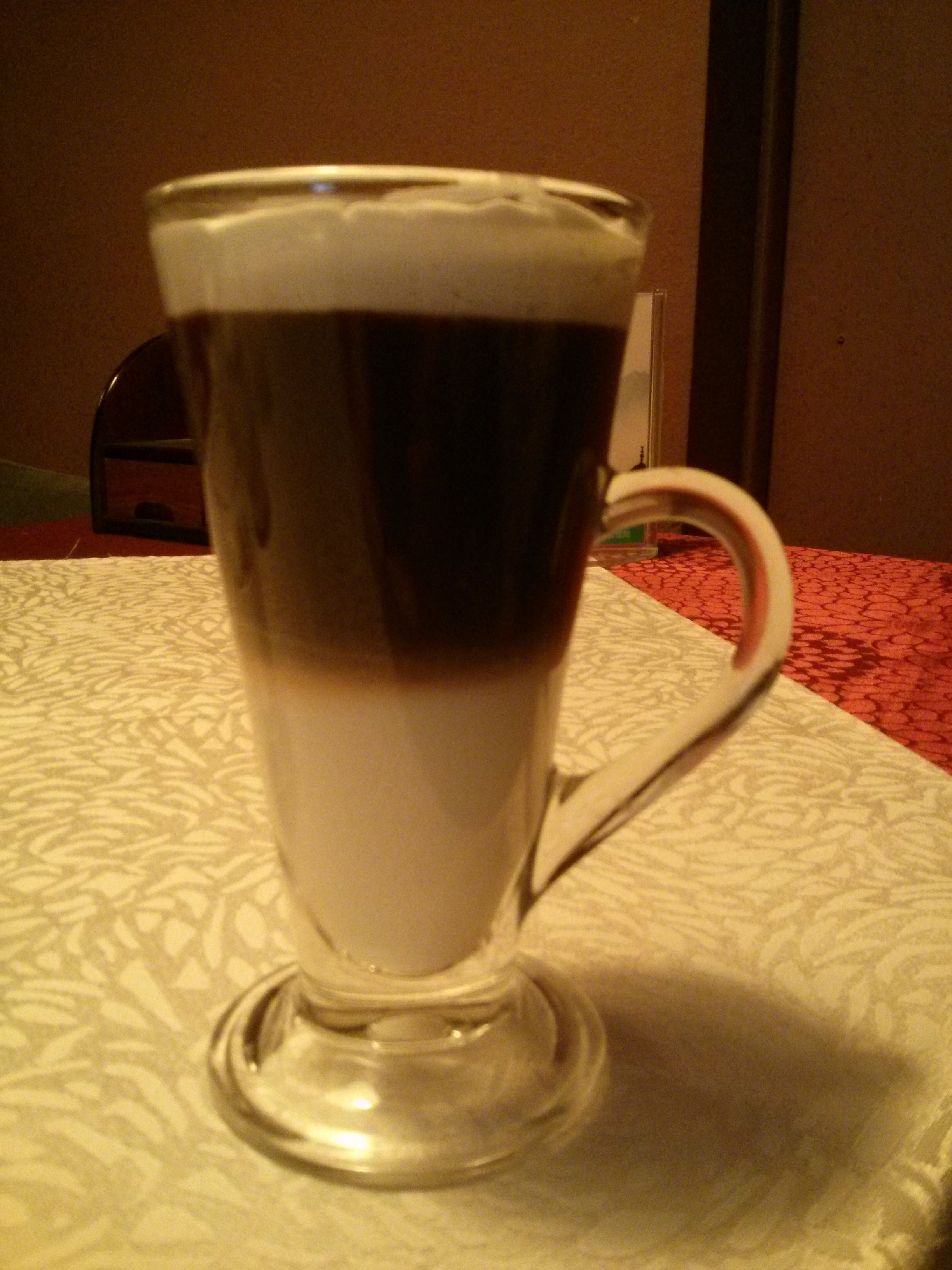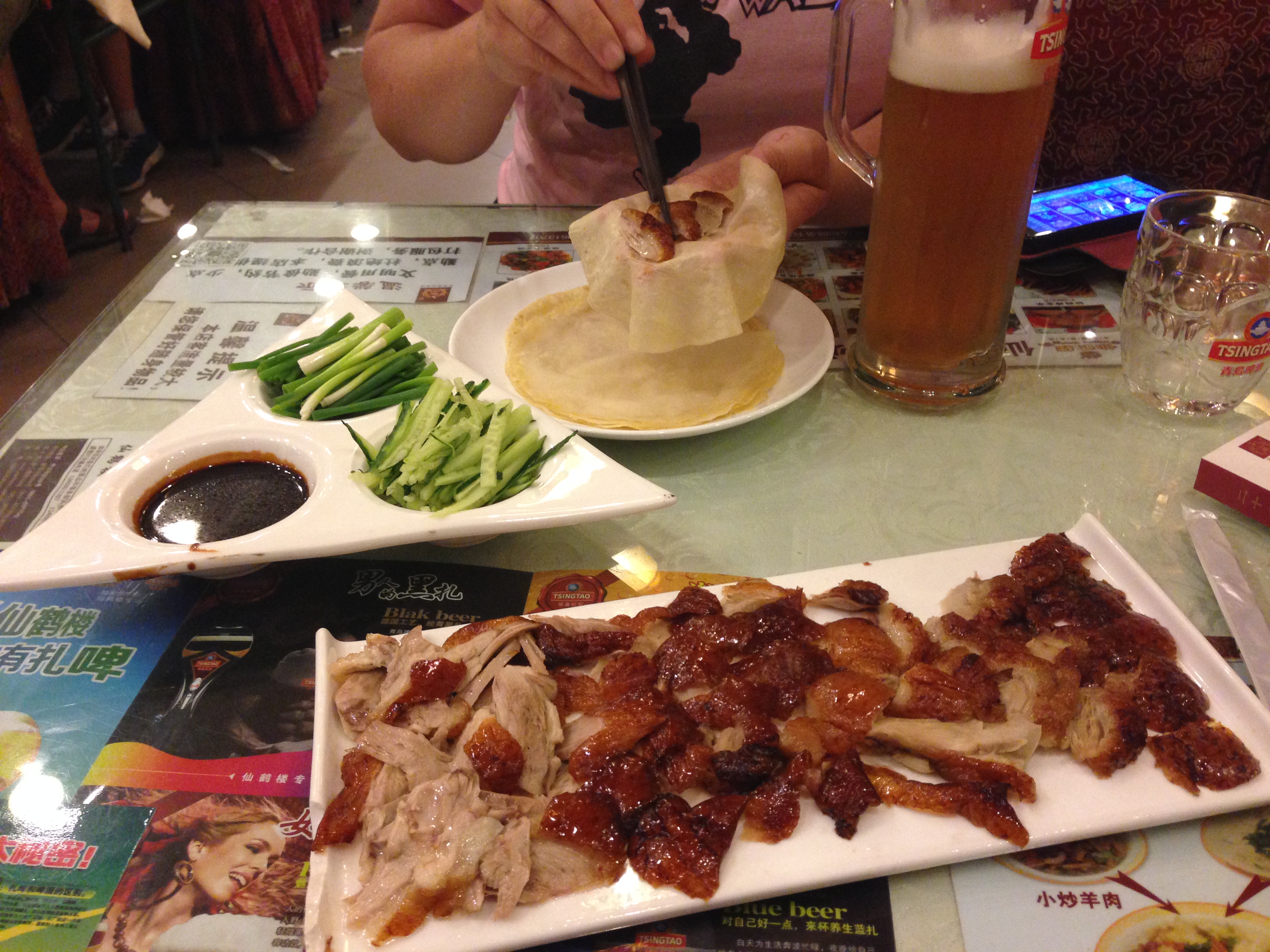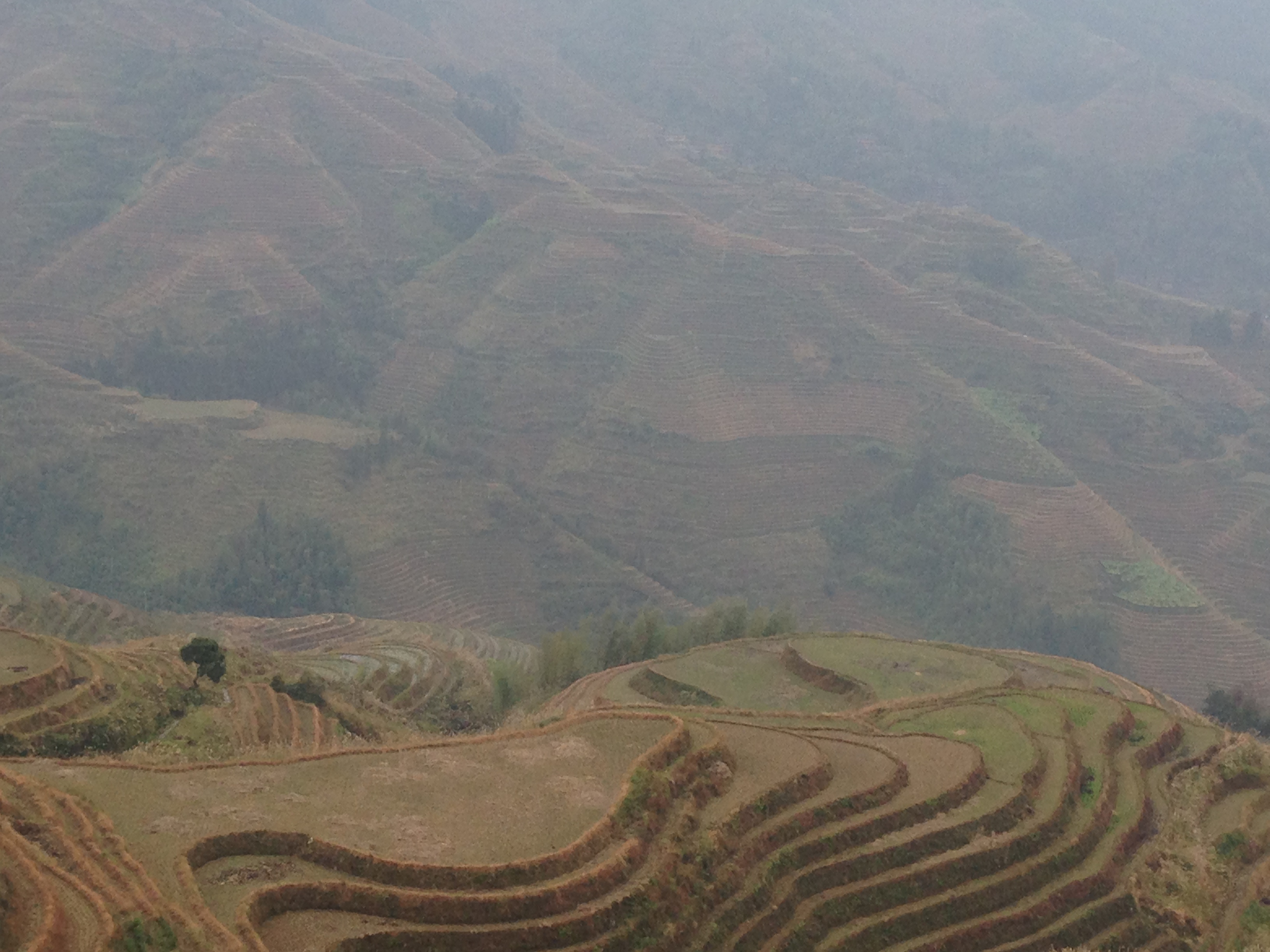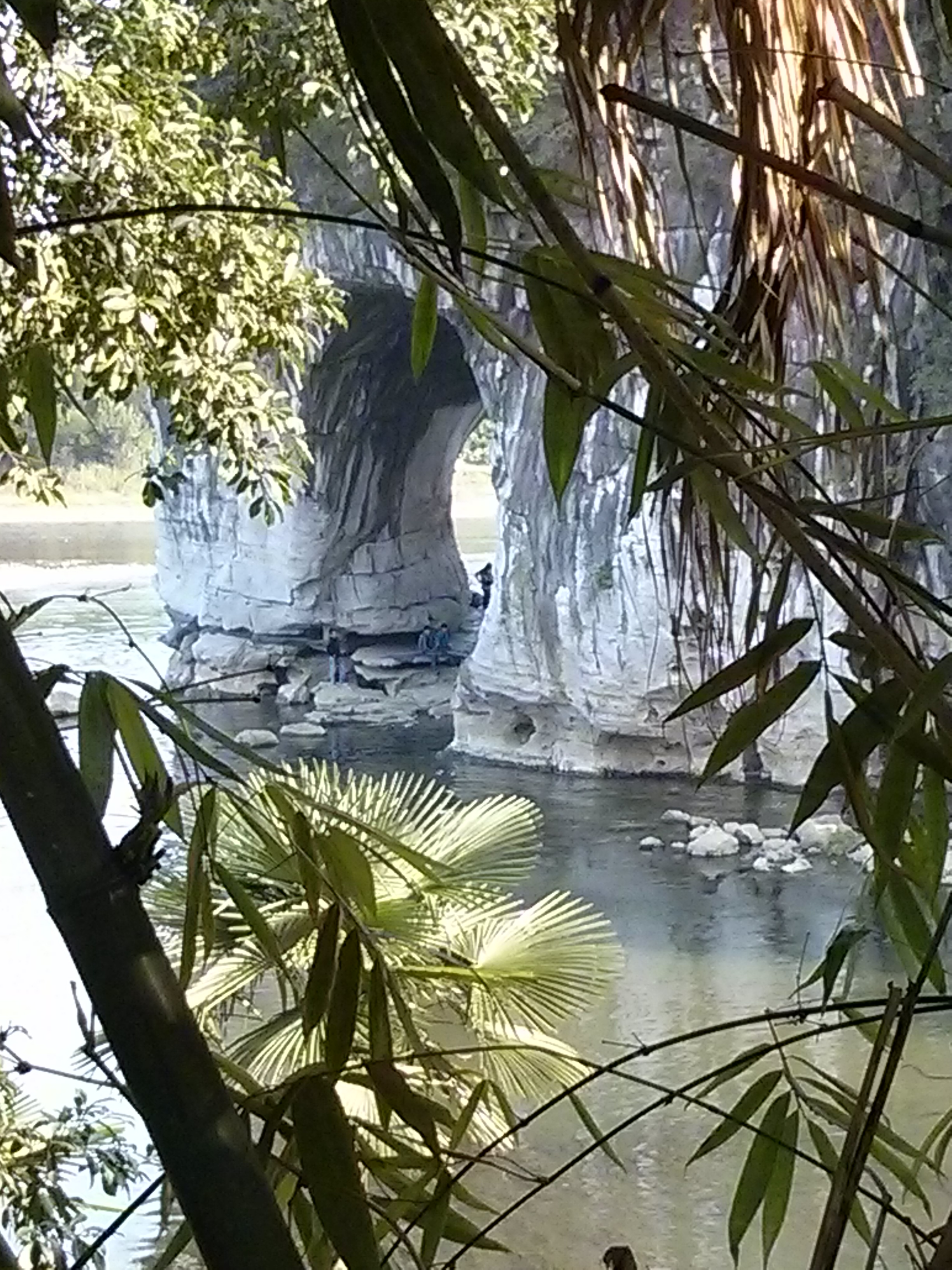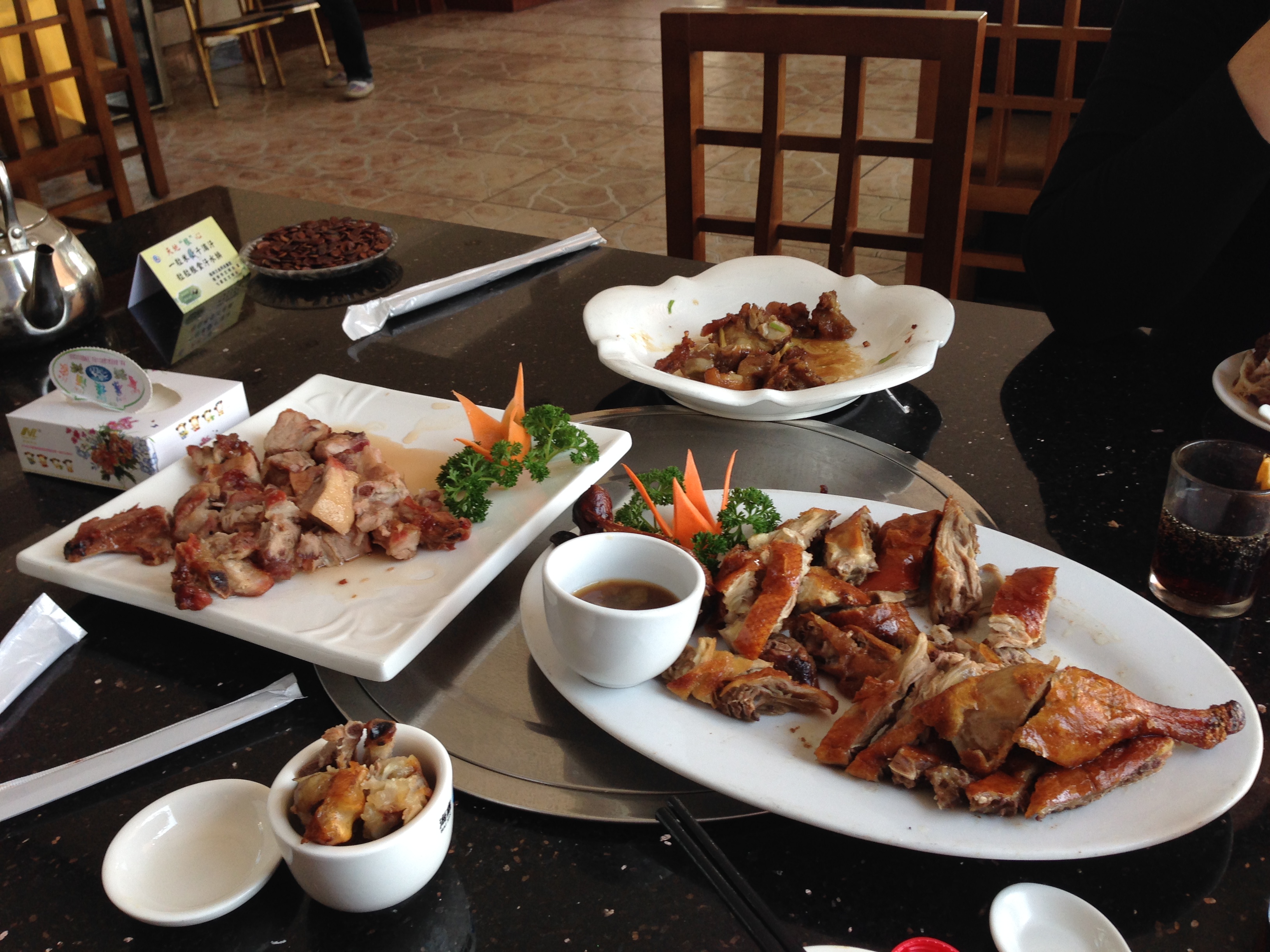We left Mandalay on yet another train journey…the last train journey I was conflicted but after a second nightmare journey all I can say is NEVER get on a train in Myanmar. It is without a doubt the worst experience that you can have. This one was every bit as bad as the last one but did not have the human interaction to rescue it. Our trip began with using half a can of bug spray to kill the 200+ spiders in our sleeper cabin…and the broom from the toilet to rid ourselves of the multitude of webs etc all over our room. Add to this the jumps, bumps and body wracking bits from before and this was another 15 hrs of hell.
We got off the train in Bago in he early hours of the morning to find that English and transport were not as prevalent out in the sticks. We tried to get a cab or a ute or whatever passes for a taxi or transport…we ended up as two fat westerners, with luggage, on pedal trishaws, being driven around by 50kg skinny Asian guys…who had no idea where our hotel was. After a couple of false starts, a rider change for Jill, and me walking up the hill of the bridge cos I was too heavy we got to our hotel.
The main reason for coming to Bago was that it was a good launching point to head to the Kyaiktiyo Pagoda more commonly known as the Golden Rock. It is pagoda built on the top of a granite rock that has been covered with gold leaves pasted on by visiting male pilgrims…I say male because women are not allowed near the thing. According to the legend, the Golden Rock which is precariously perched on the mountain is held there by a strand of the Buddha’s hair. It is said that a glimpse of the “gravity defying” Golden Rock is believed to be enough of an inspiration for any person to turn to Buddhism…I on the other hand had different thoughts.
Now to become a Buddha you must reach a level of enlightenment to raise yourself to such a position. To achieve this the bodhisattva (living future Buddha) an aspirant to the full enlightenment of Buddhahood generally become monks and train themselves, through altruistic deeds and meditative effort, to acquire the qualities essential to a Buddha. I have seen a lot of these monks…in a lot of countries…they have shaven their heads and are all bald…but the rock is held up by hair…my thought…how curly was this hair.
The trip to the rock was entertaining enough initially as we cabbed the 100km to get there passing some stunning rural sights along the way. Upon arrival at Kinpun (the town at the bottom of the hill we were met with our transport to get us to the top of the hill. It was (without word of a lie) a dump truck with rows of seats bolted to the sides which they jammed 6-7 people per row. Five per row would have been relatively comfortable six was silly and seven was just lunacy. Add to this the fact that the rows were so close together that you had to go almost side-saddle to get in and this was less than ideal. Having reached the top there were dudes with bamboo poles and seats offering to carry me up the stairs to get to the rock.. for a very reasonable fee. Before I could formulate an answer I was clipped across the back of the head and told not to even think about it.
The rock was certainly cool and we headed back to town and had another huge Burmese feast for basically nothing. This was a pattern in this place. We could go out to dinner and have a huge feed, generally washed down with some Myanmar or Dagon lager and we would get change from $10. The next day we locked in to see some of the local sights around town with the skinny old dude who pedalled us to the hotel on day one…but in a motorised transport version this time. By motorised transport it was a Burmese version of a tuk tuk with the same level of suspension as that which existed on the train.
The first stop was the Kyatkhutwine Monastery which houses about 700 monks. We got lucky and arrived at meal time and wandered through the dining hall being amazed by the size of the rice pots. From here we headed into the kitchen and got a sense of what it took to cater for 700 people on a daily basis. From here we headed to the snake temple which in essence is a small temple with a huge snake. The snake is said to be the 120 year old reincarnation of the former head of a monastery in Hsipaw. In reality it is a massively over fed 7 metre long python.
We hopped around to some lesser pagodas and temples then hit the Shwethalyaung Buddha which is the worlds second largest reclining Buddha at 55m long and 16m tall. Then on to Kyaik Pun Pagoda the home of the Four Seated Buddha shrine. From here we hid in the hotel during the heat of the day before meeting our dude at 5pm for a trip to the Shwemawdaw Paya pagoda, the tallest pagoda in Burma at 114 metres. We got lucky and were here for a festival that saw thousands of people attending and setting up for the after dark festivities.
This involved the designing and laying out of tens of thousands of little clay pots into words and images and putting in candles for the nighttime lighting. Jill is a bit of a local celebrity here in Myanmar with everyone smiling, grinning and waving at the white woman in the funny hat. I get the hellos and the waves but Jill is by far the star of the show…especially with the kids. At the festival a small boy was on his fathers lap and was excitedly pointing at Jill as if she was a rock star, she noticed and waved which incited a level of excitement rarely seen.
This kept going for about 10 mins as we looked at the pagoda, the candles and the people generally. By the end the small child was blowing kisses to her and nearly fell over when she blew one back. This level of friendliness here in Burma is ubiquitous. The warmth and welcoming that you receive from everyone is something that must be experienced. Let’s hope that this genuine quality does not get replaced by mercenary overtones once the tourism kicks in.
With Bago finished we hopped a cab back to Yangon where we spent a night before saying farewell to Myanmar. We had a flight to KL where we crashed for a night and then started the next leg of this little adventure…Laos.

